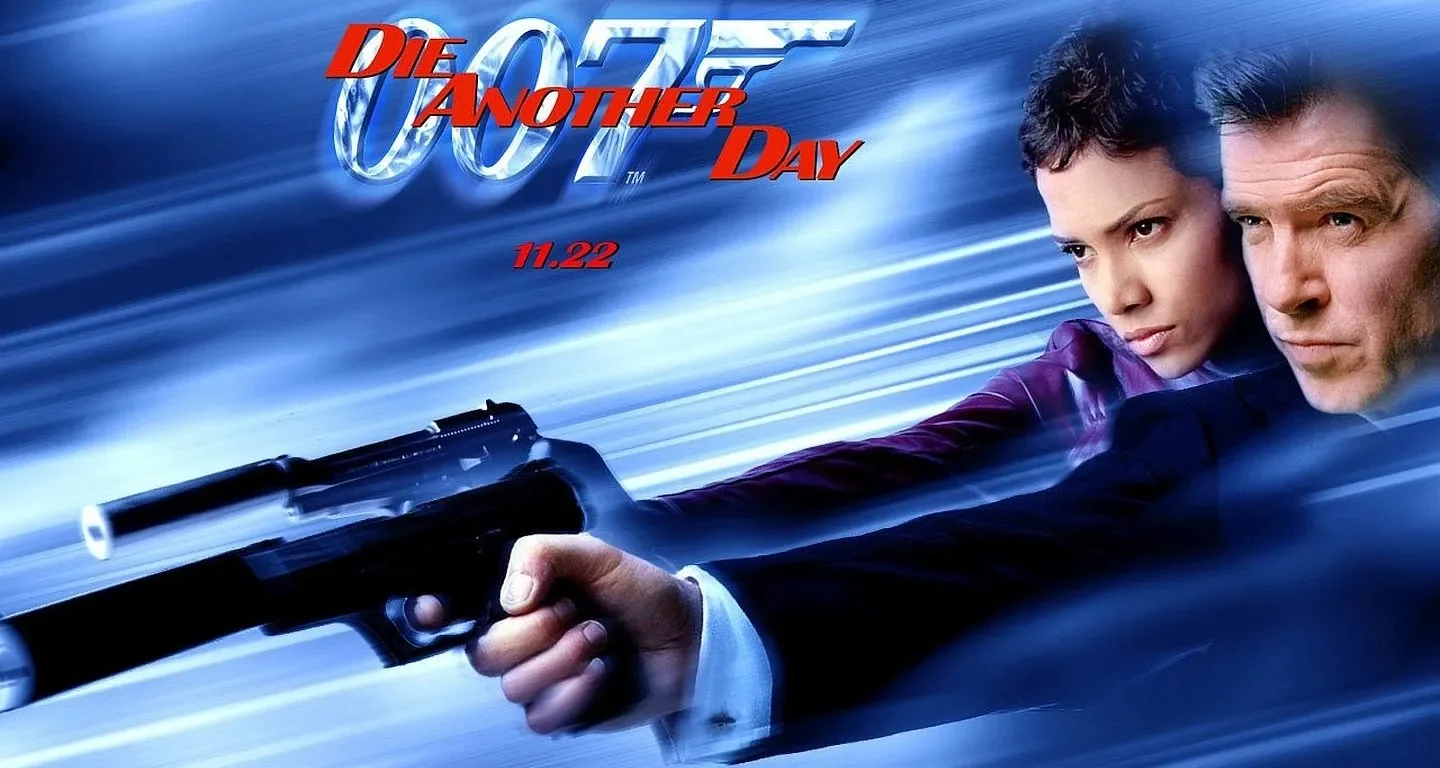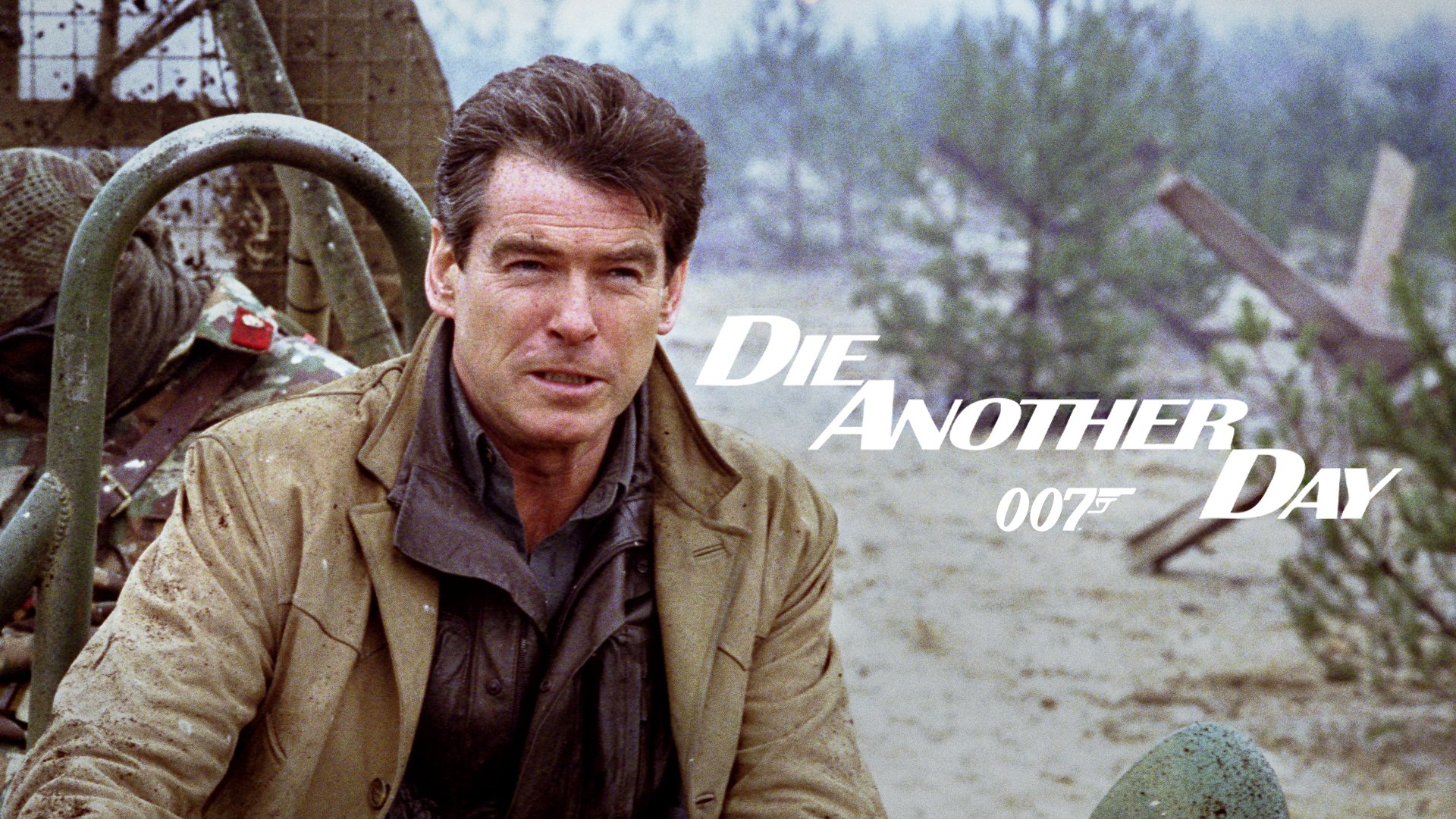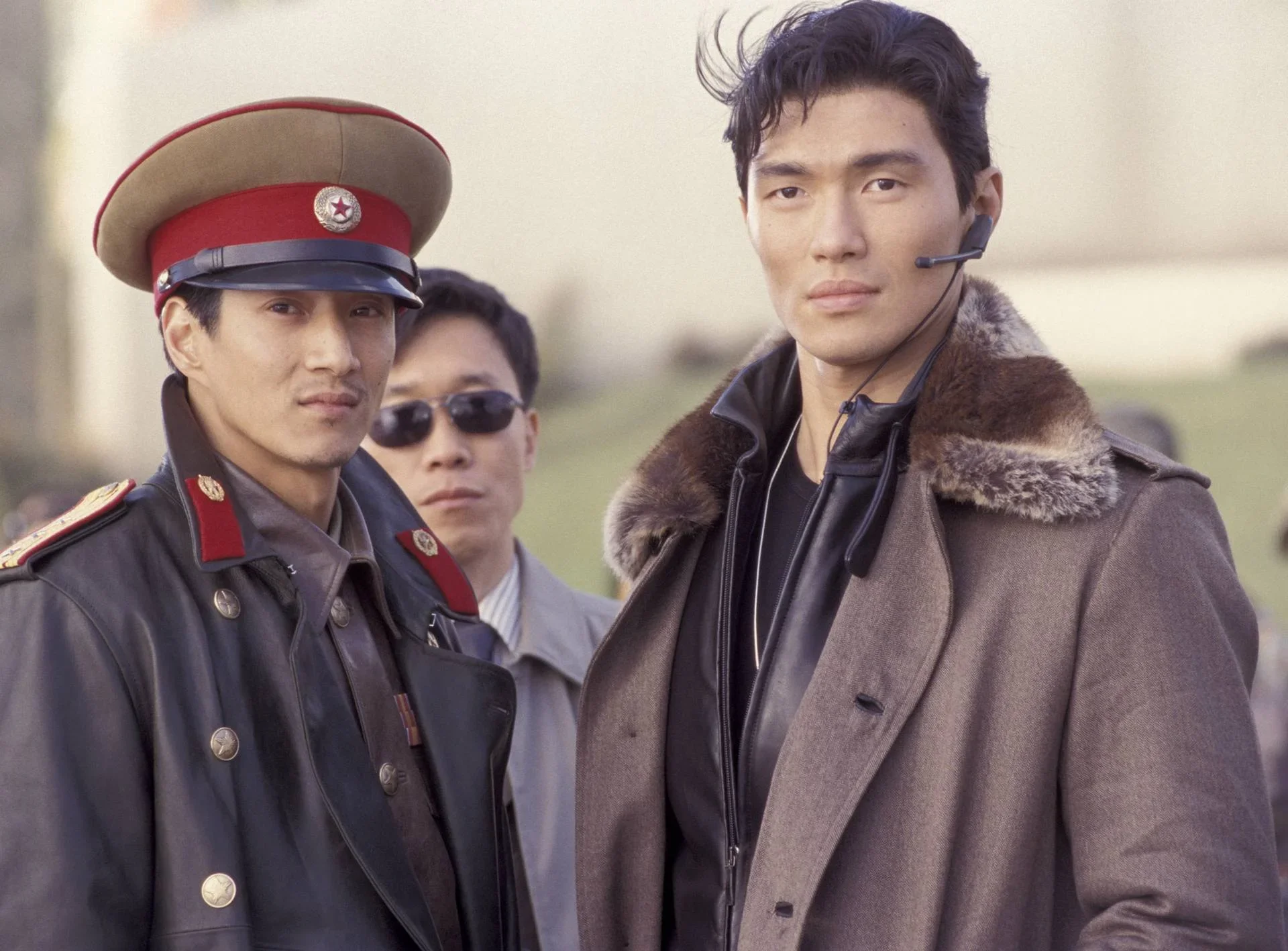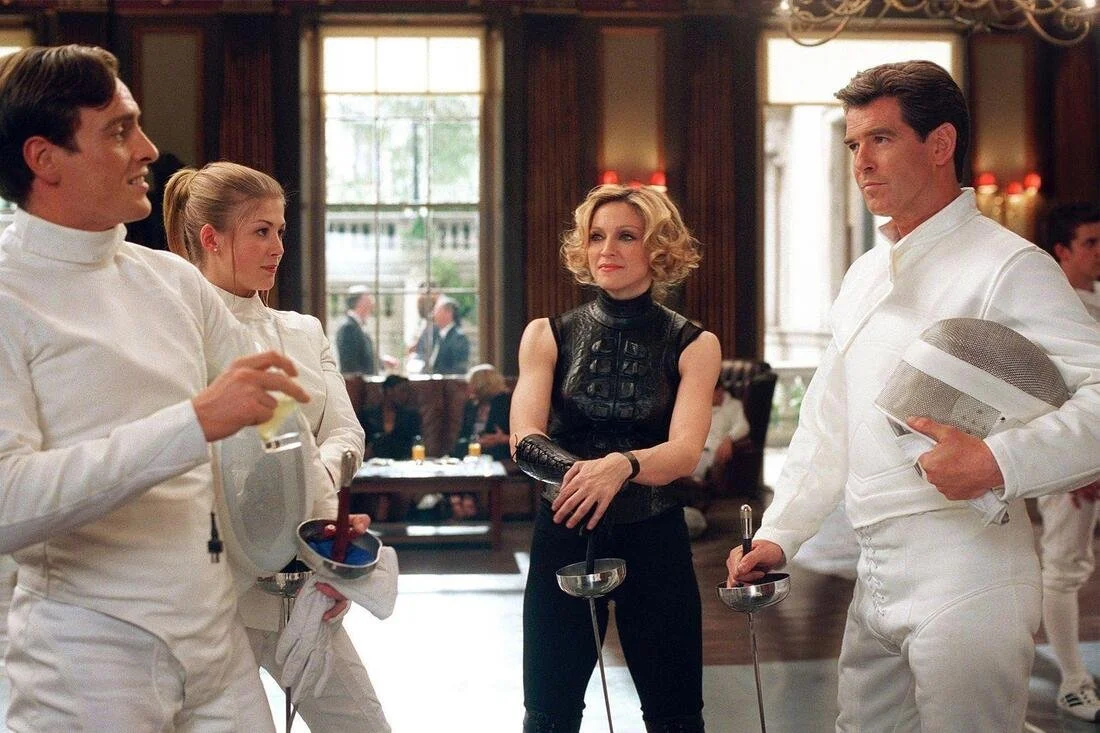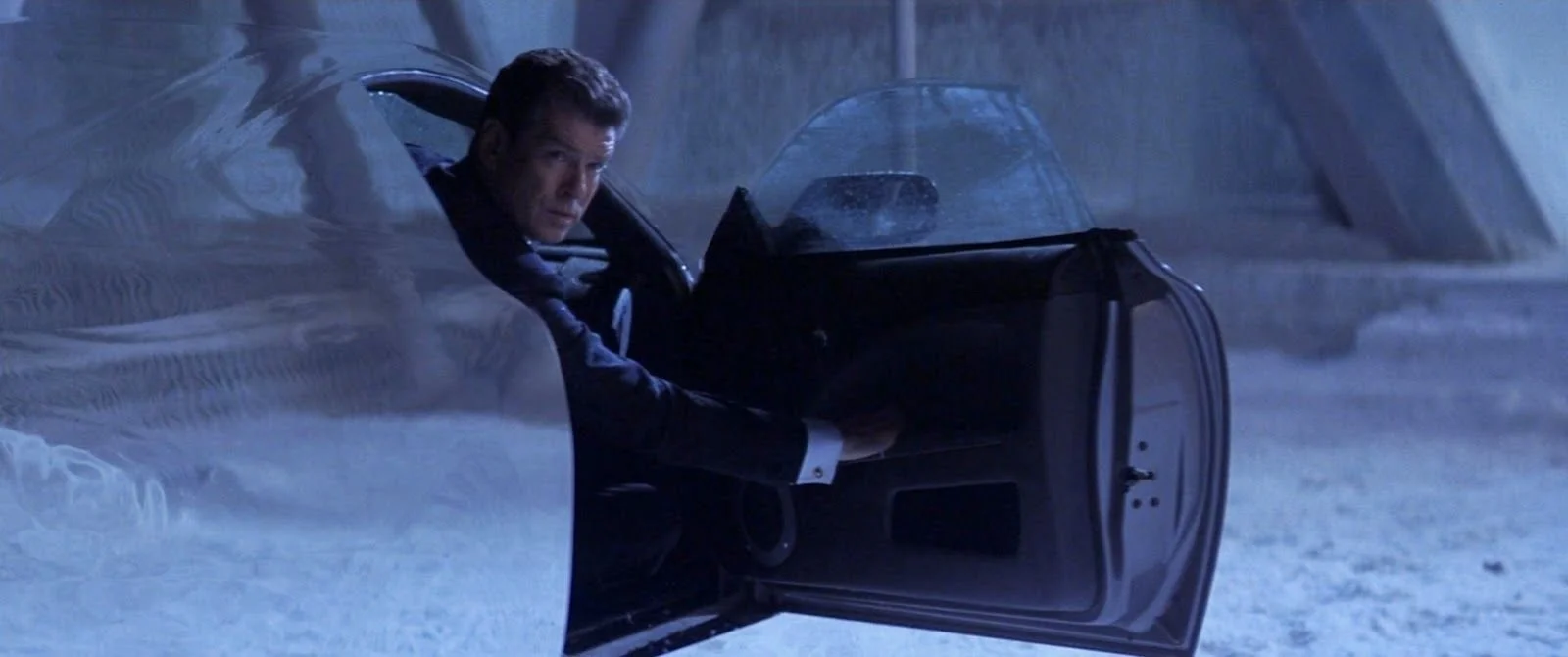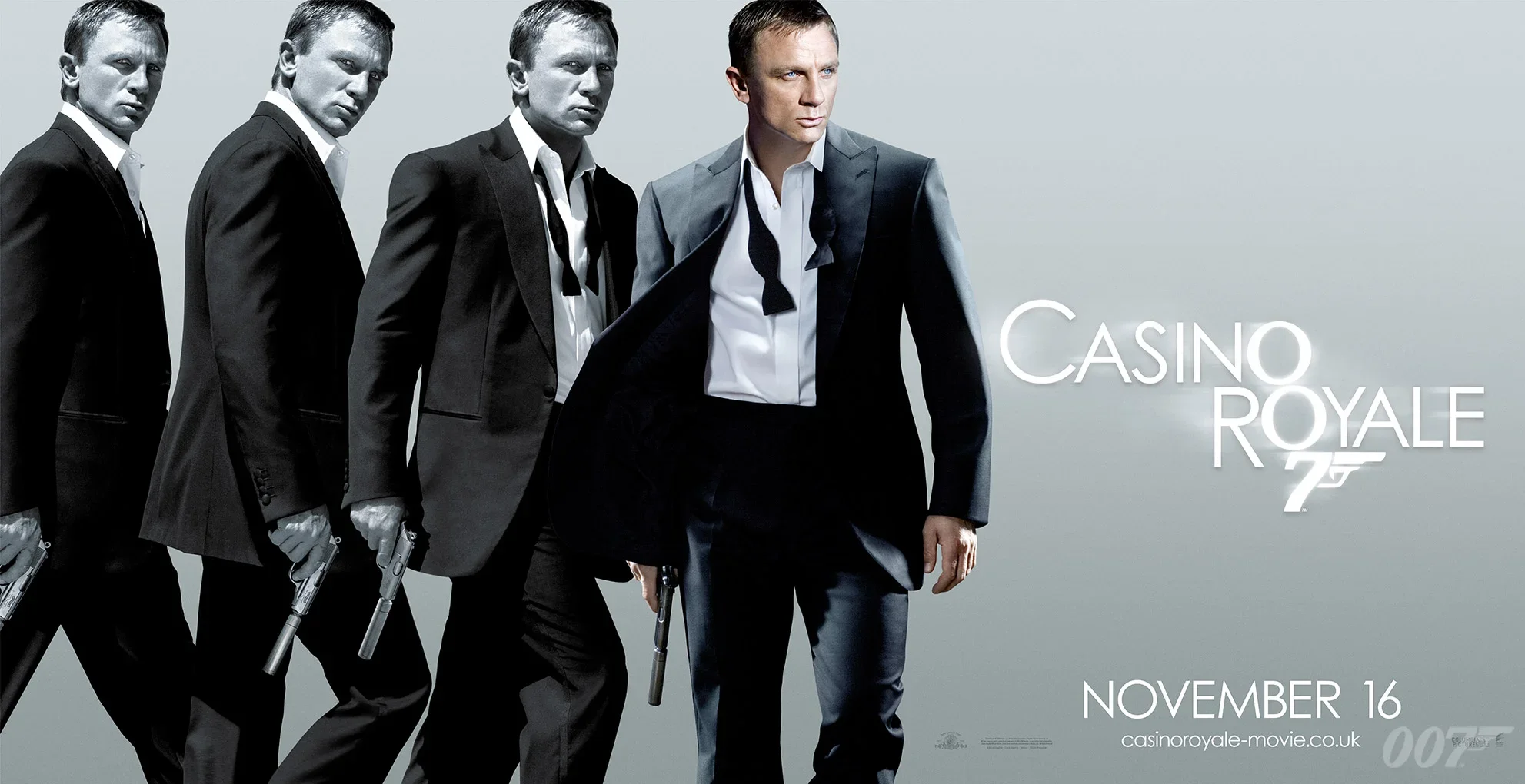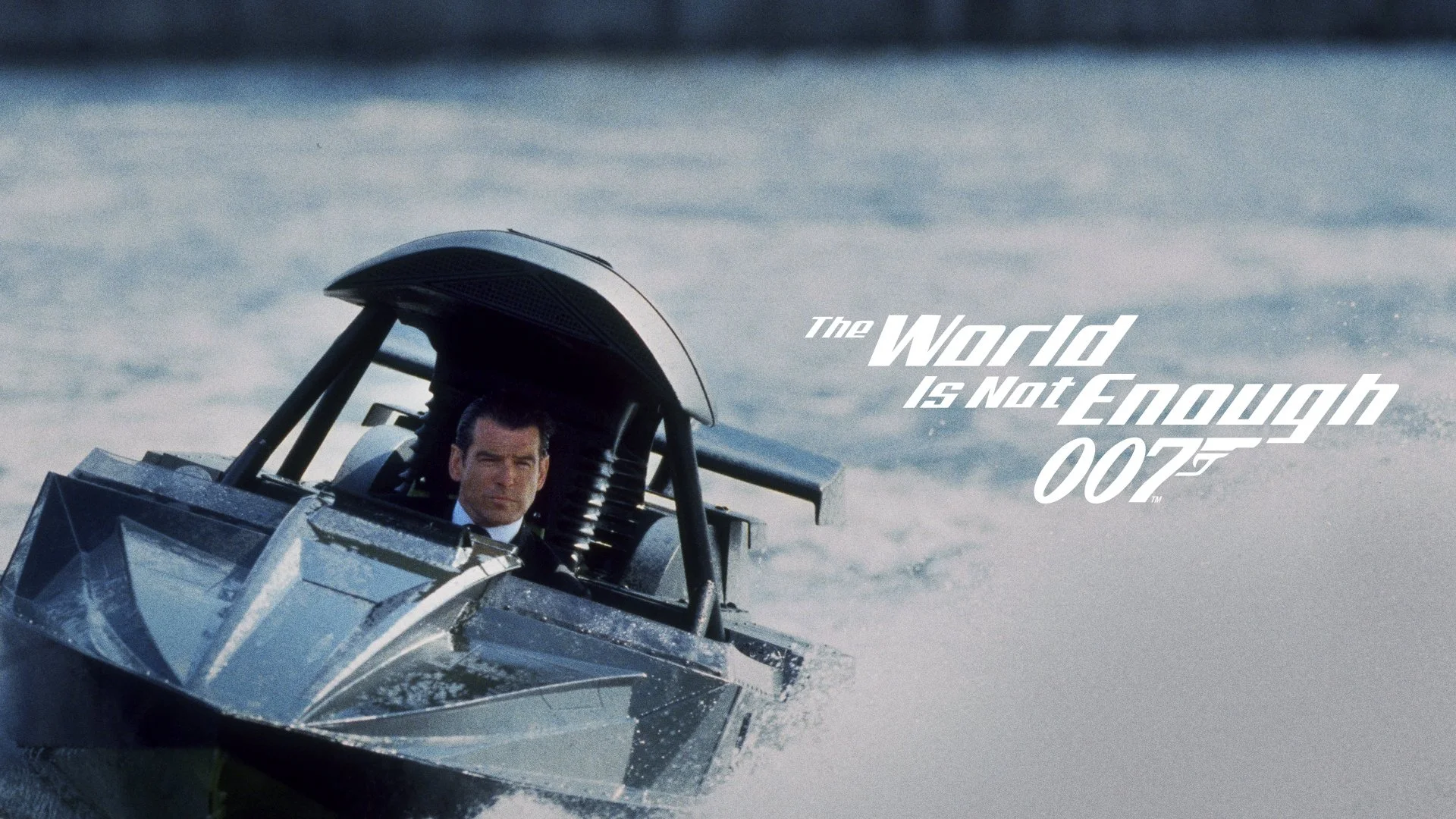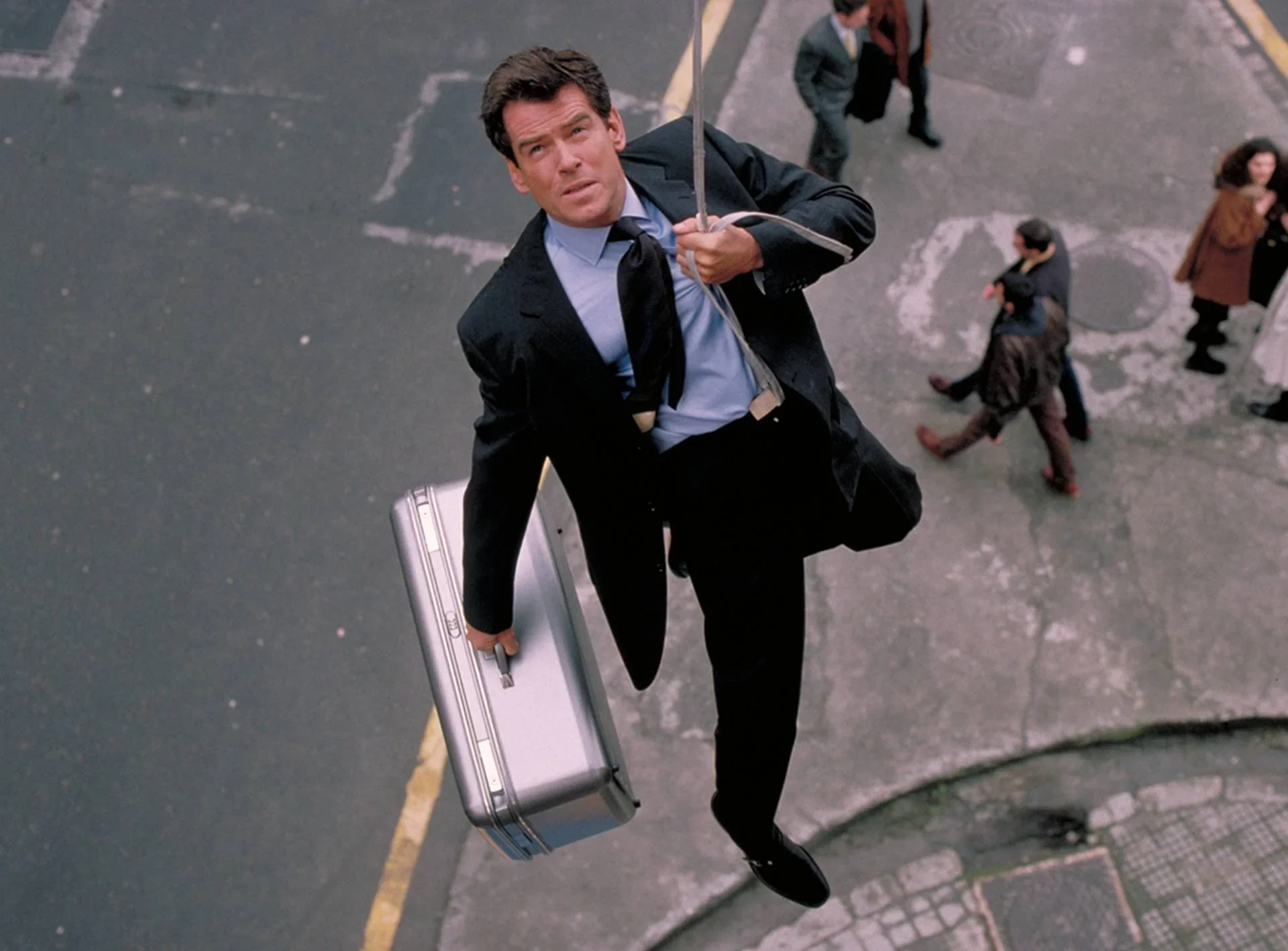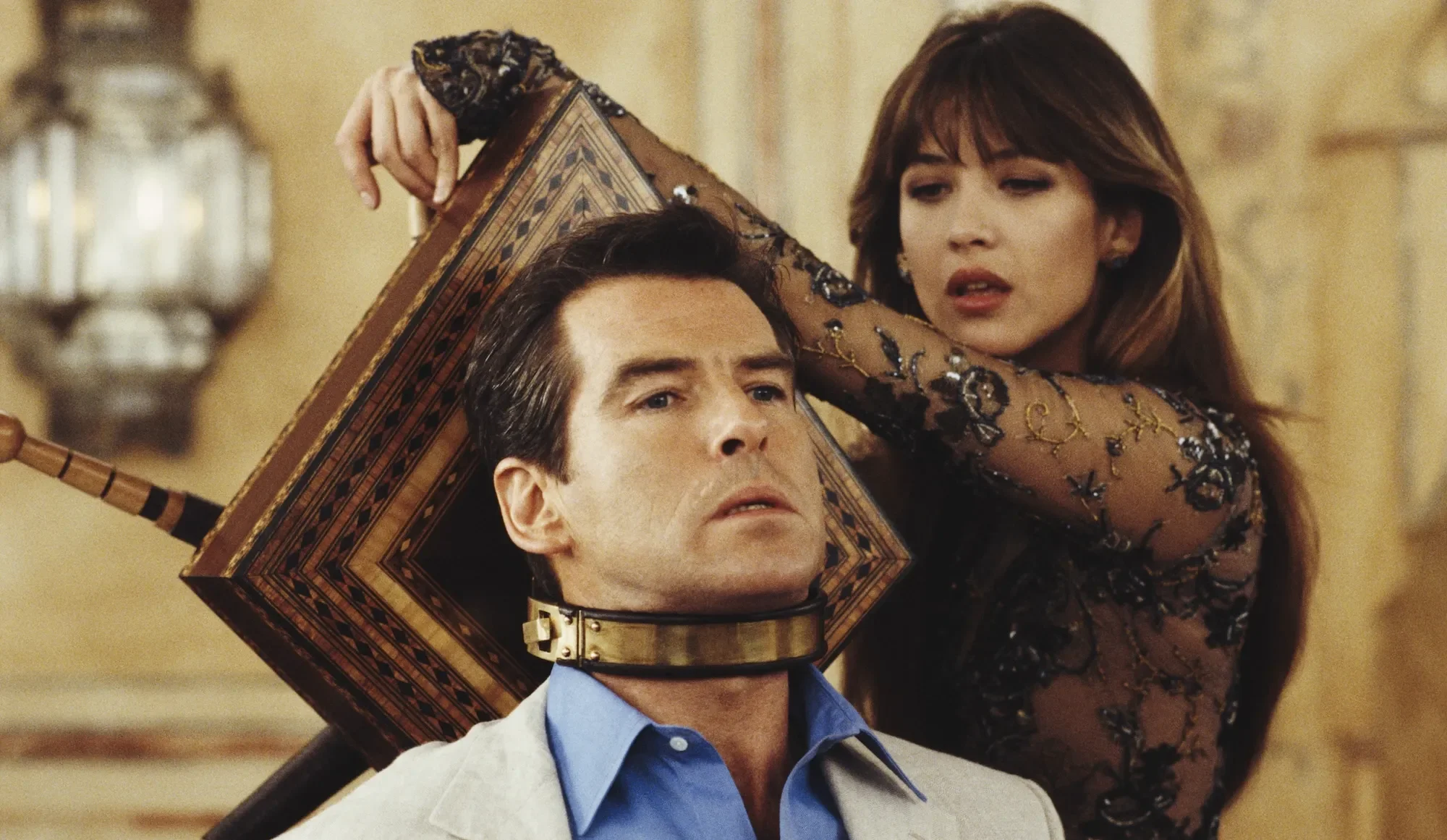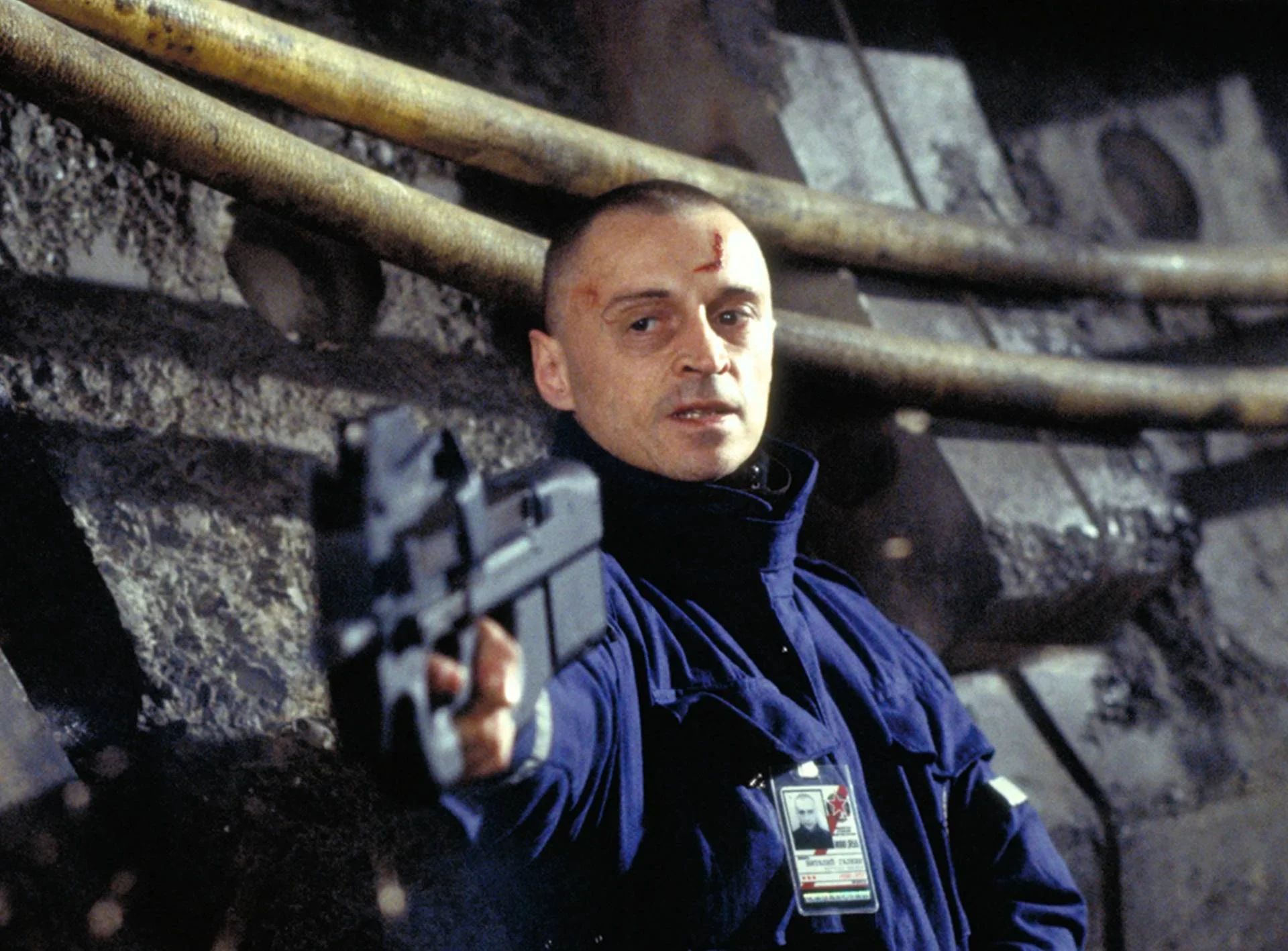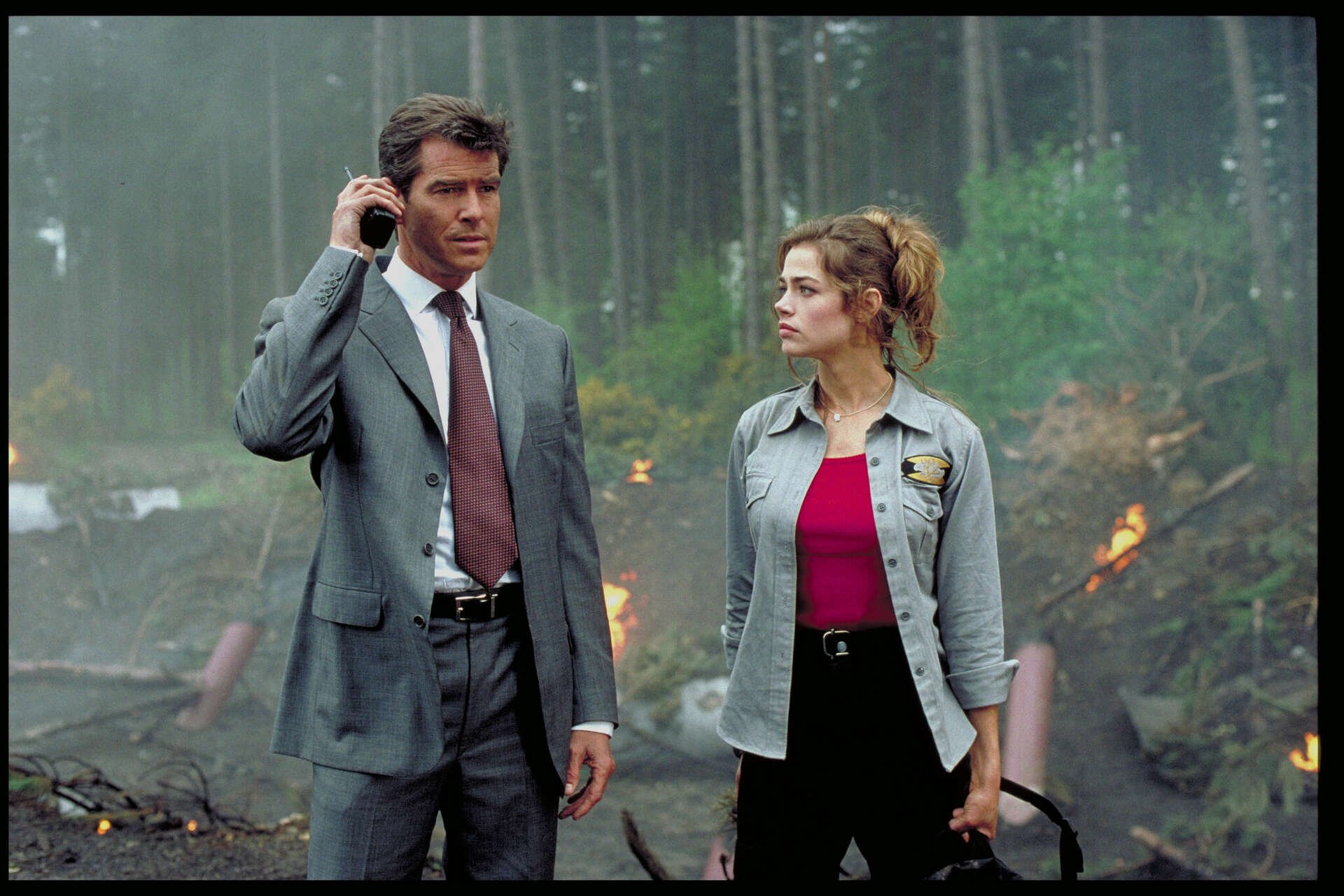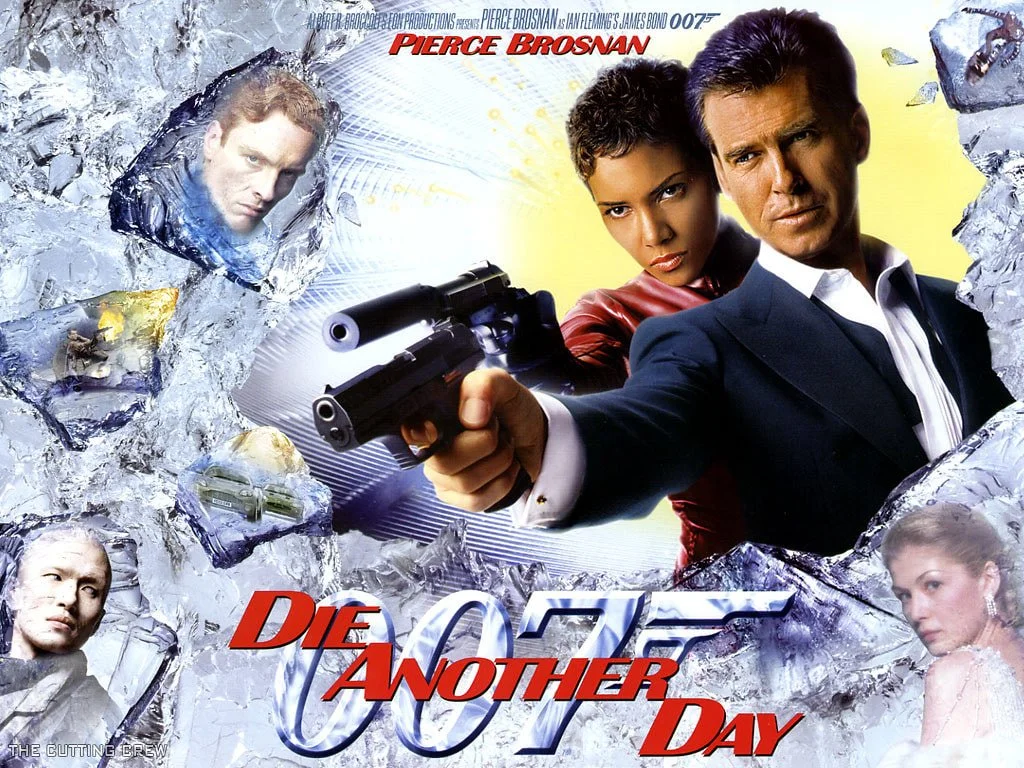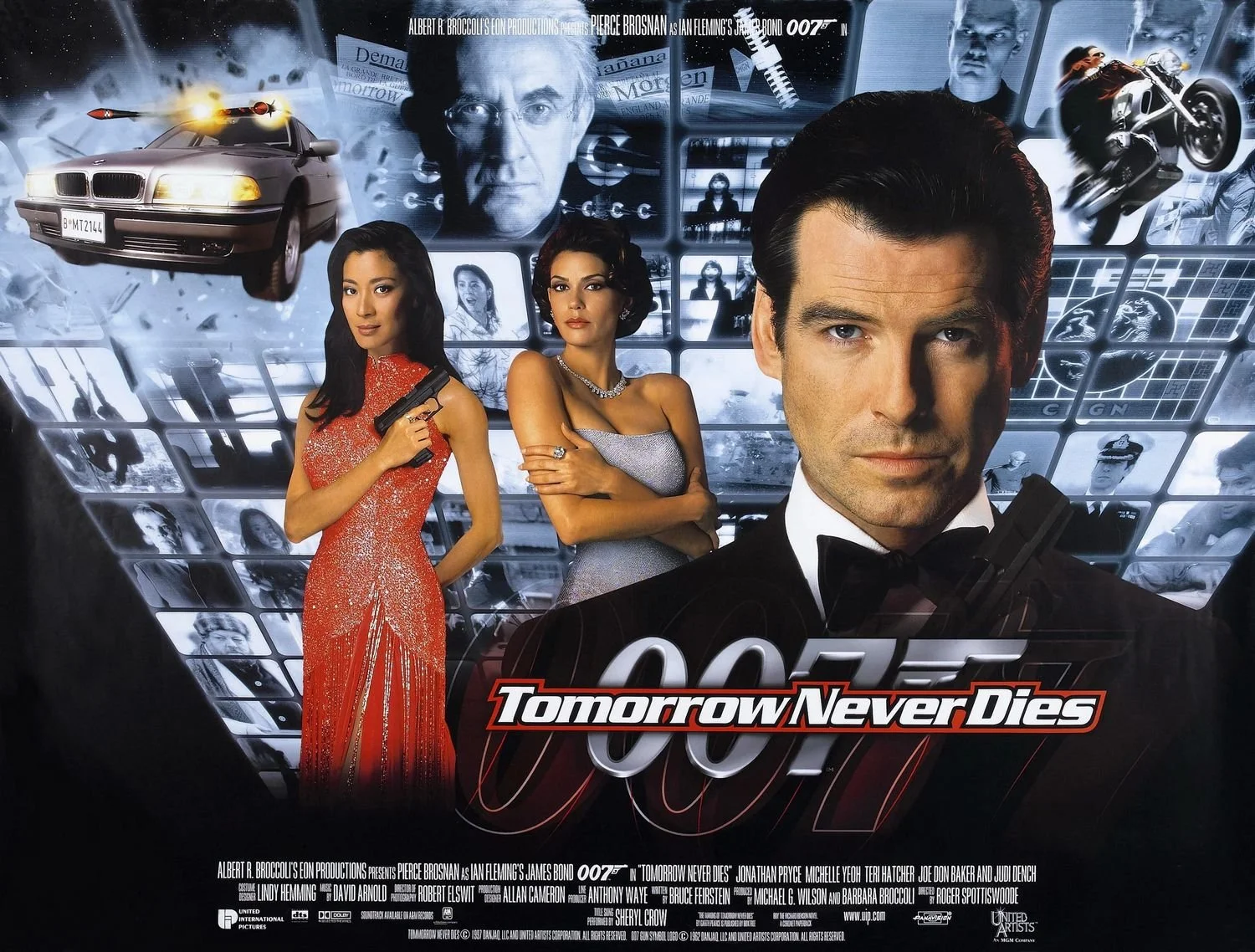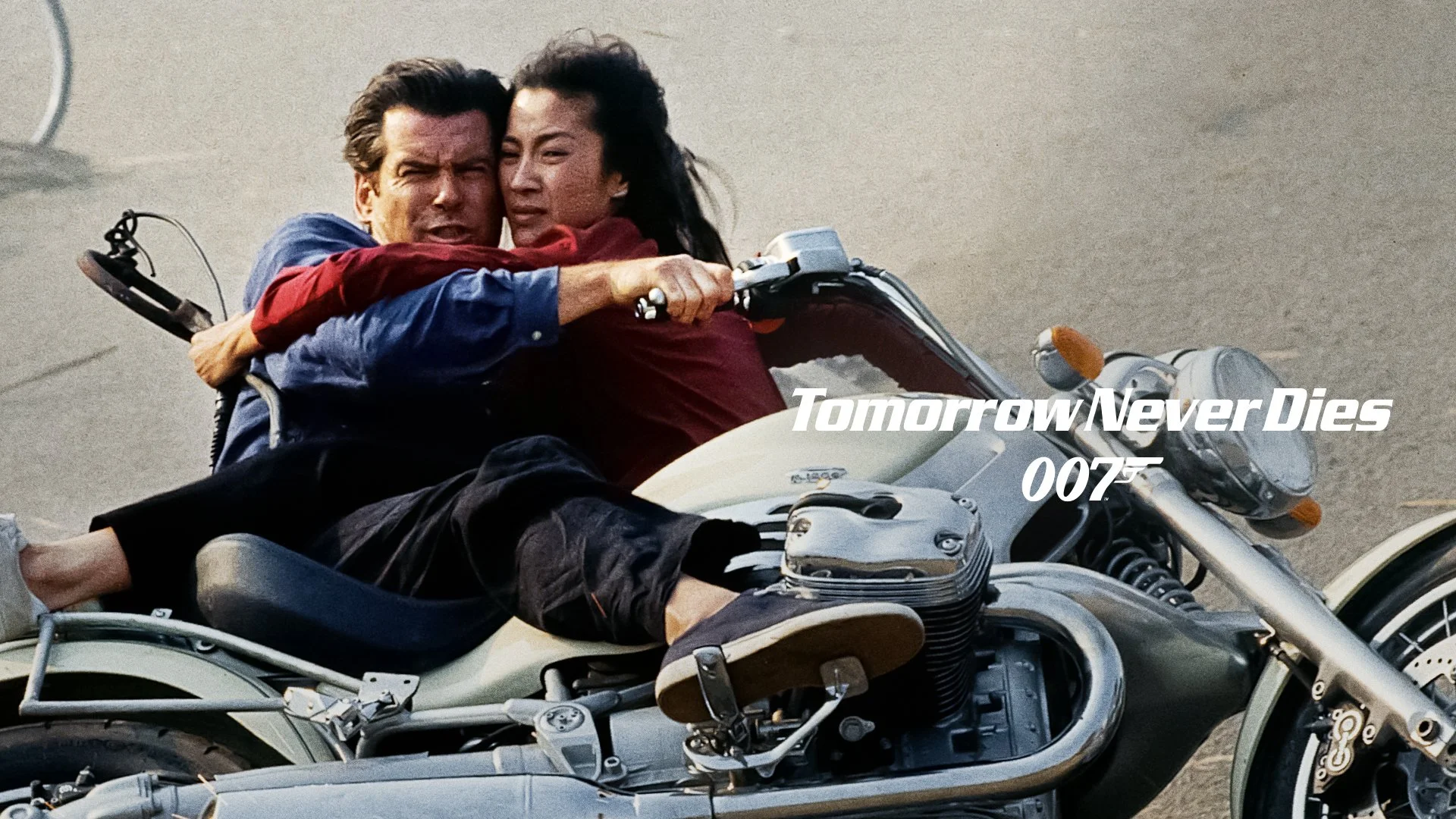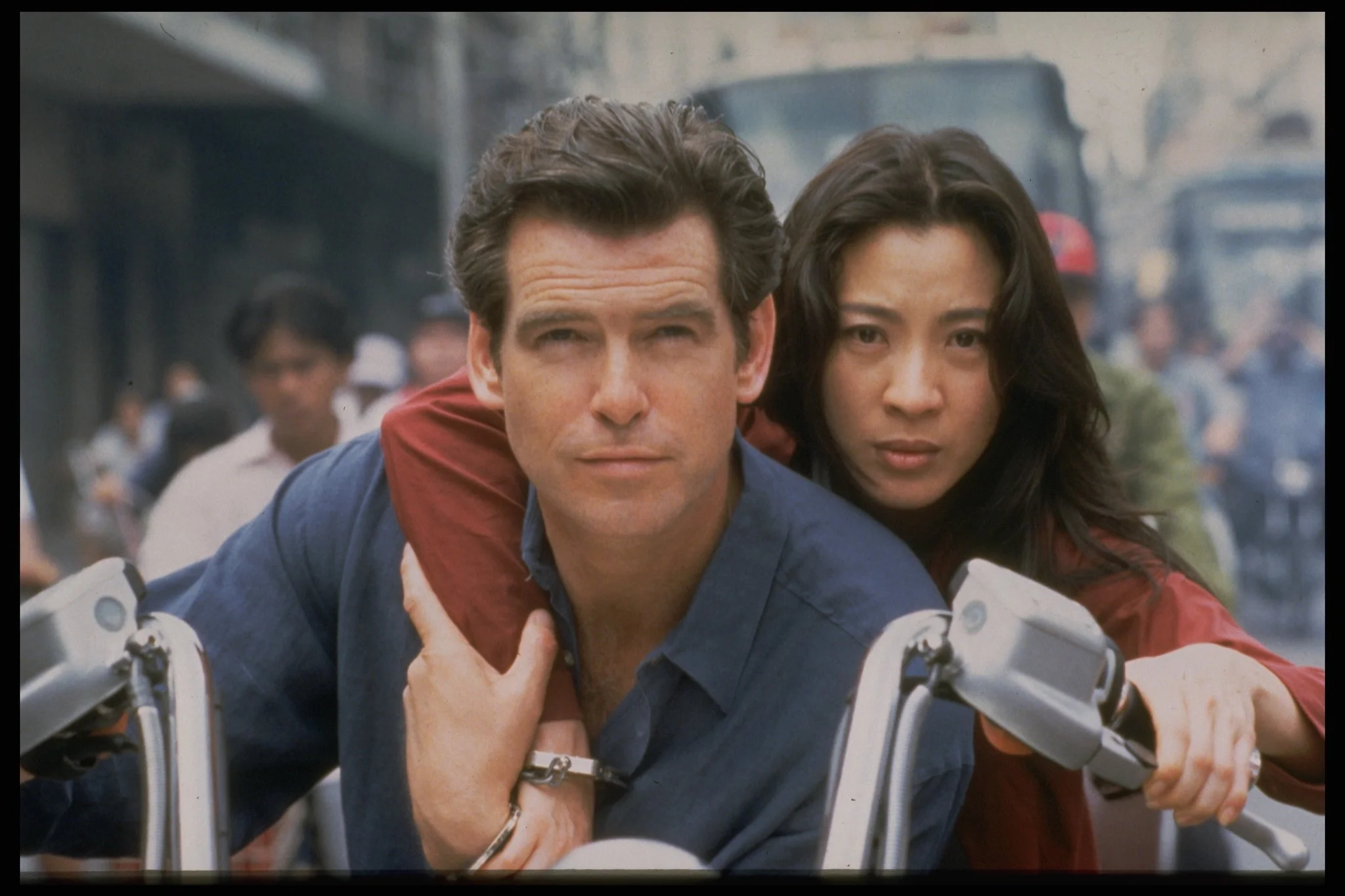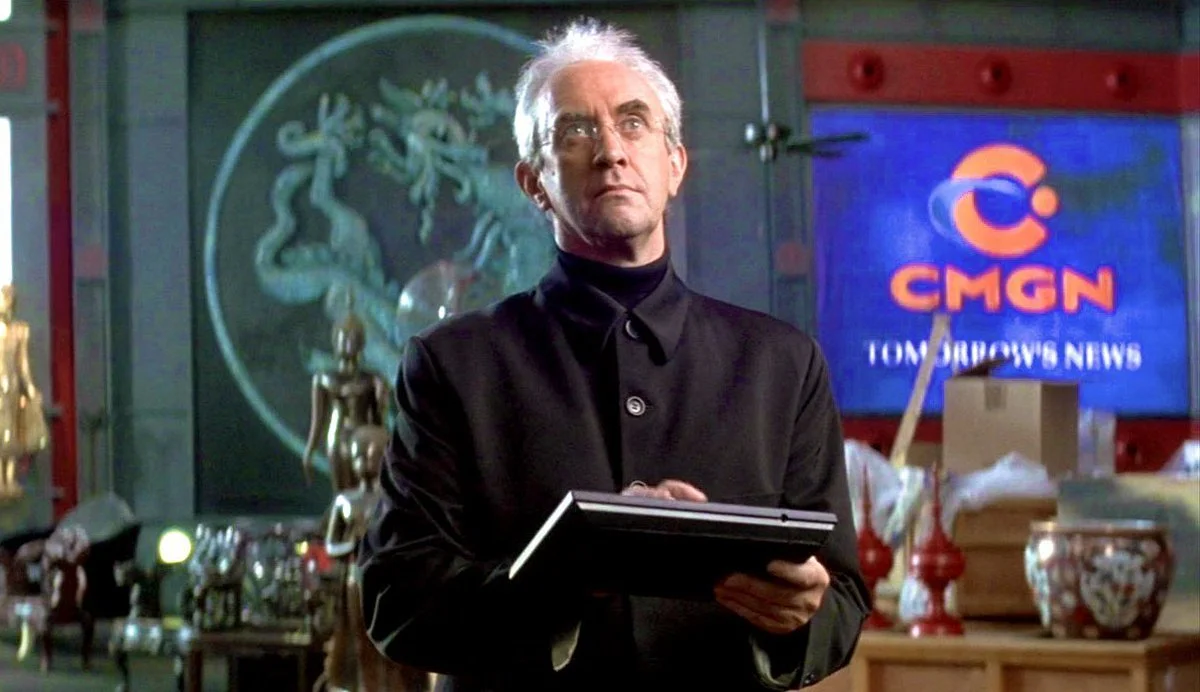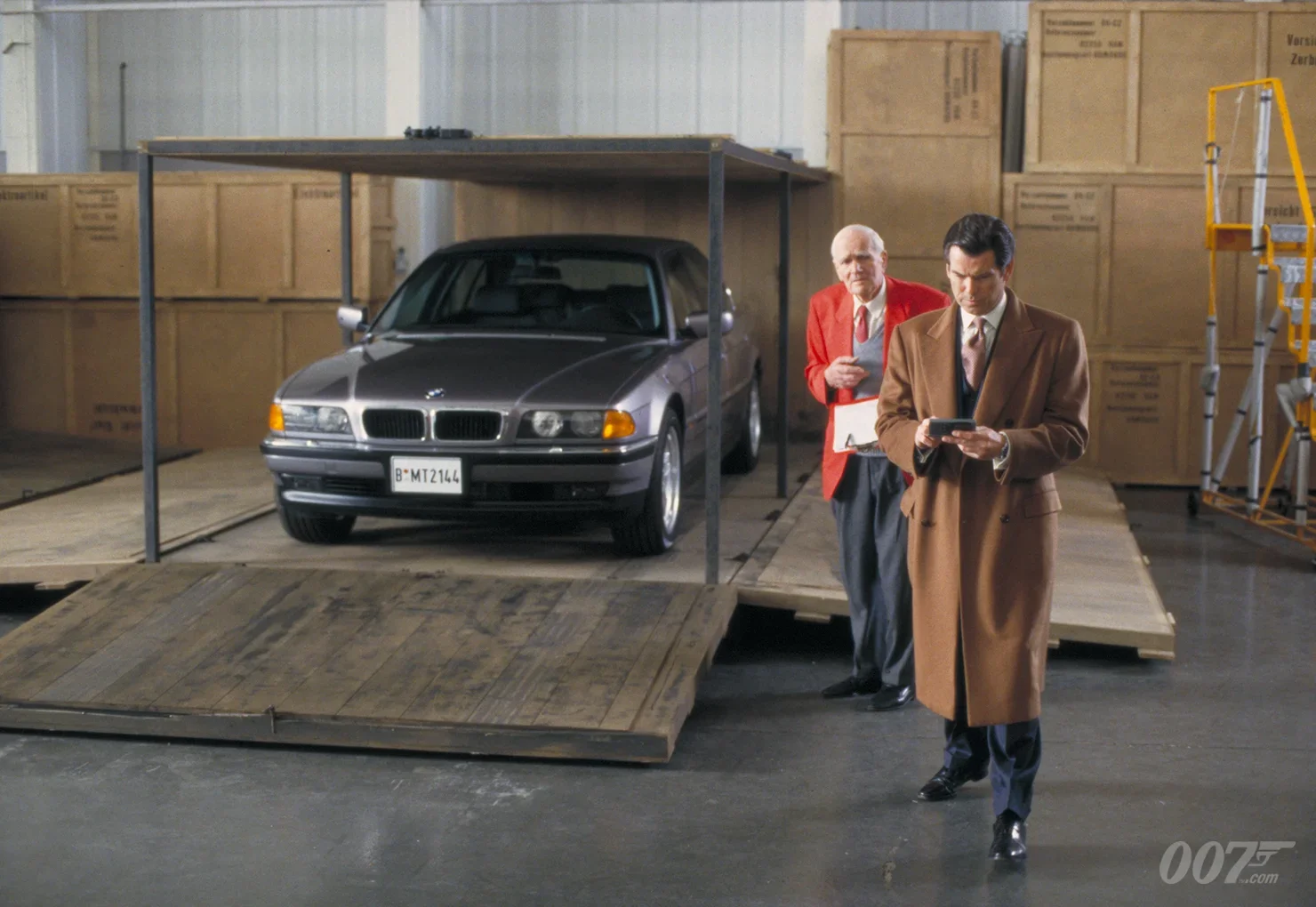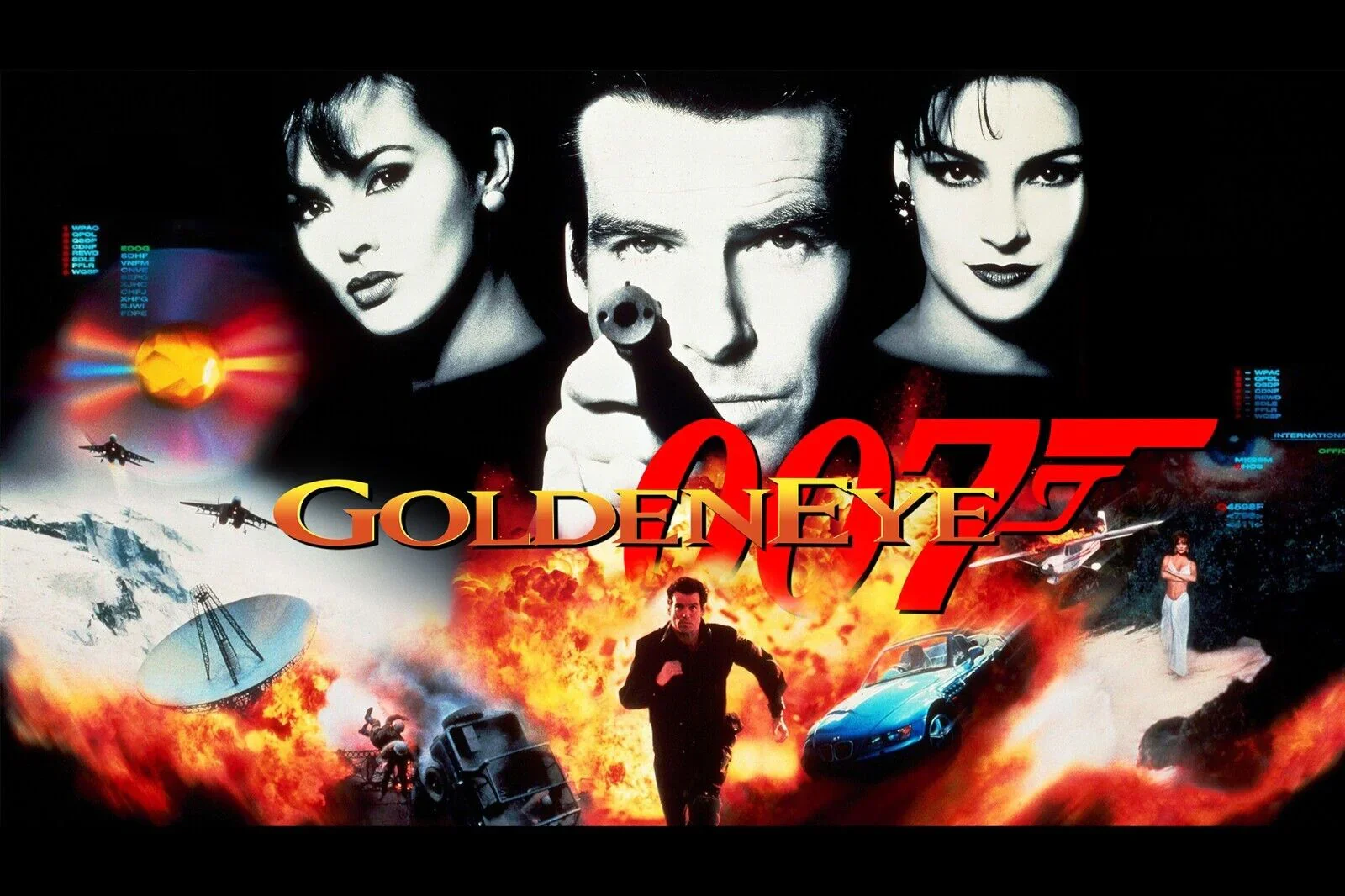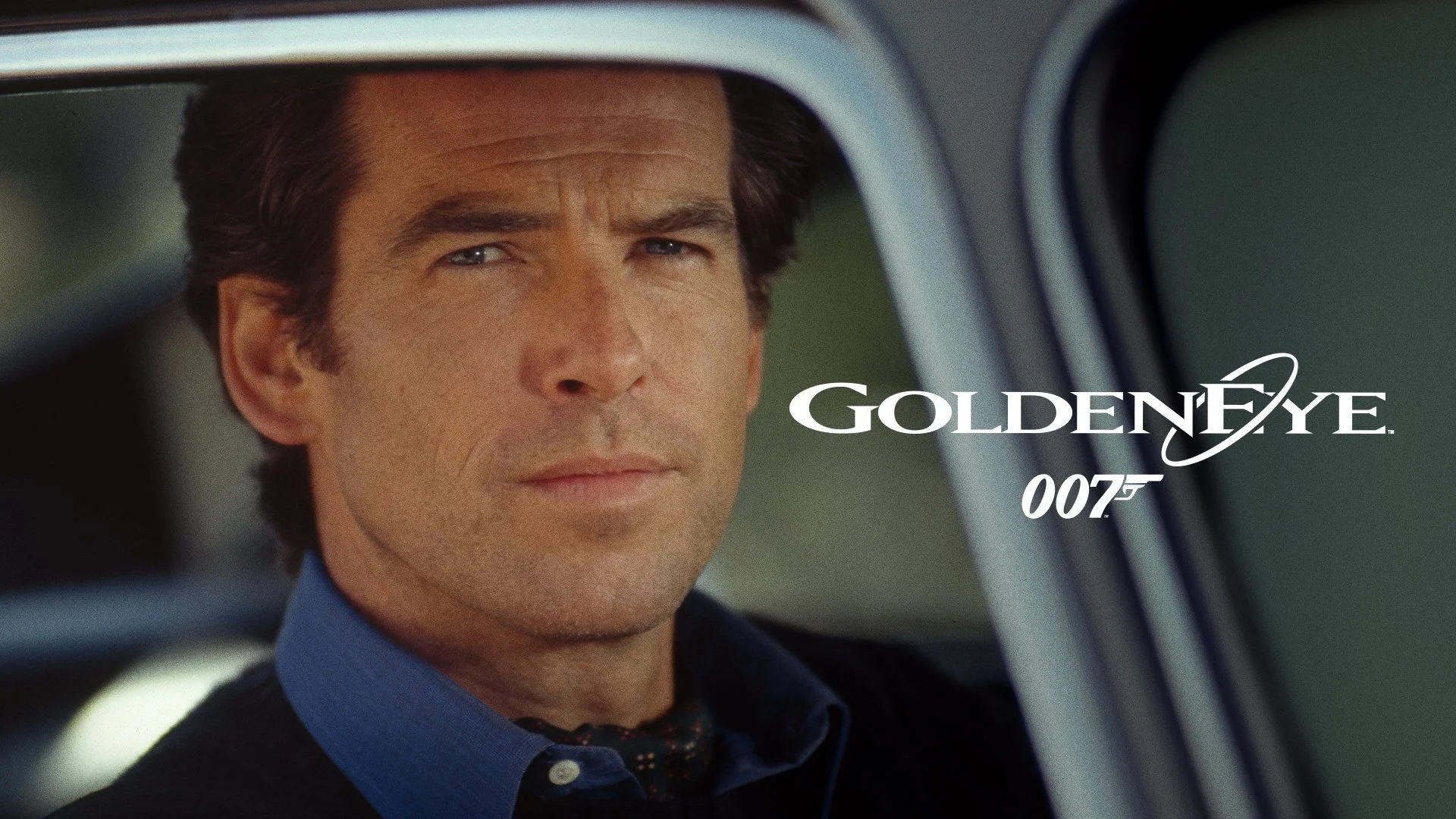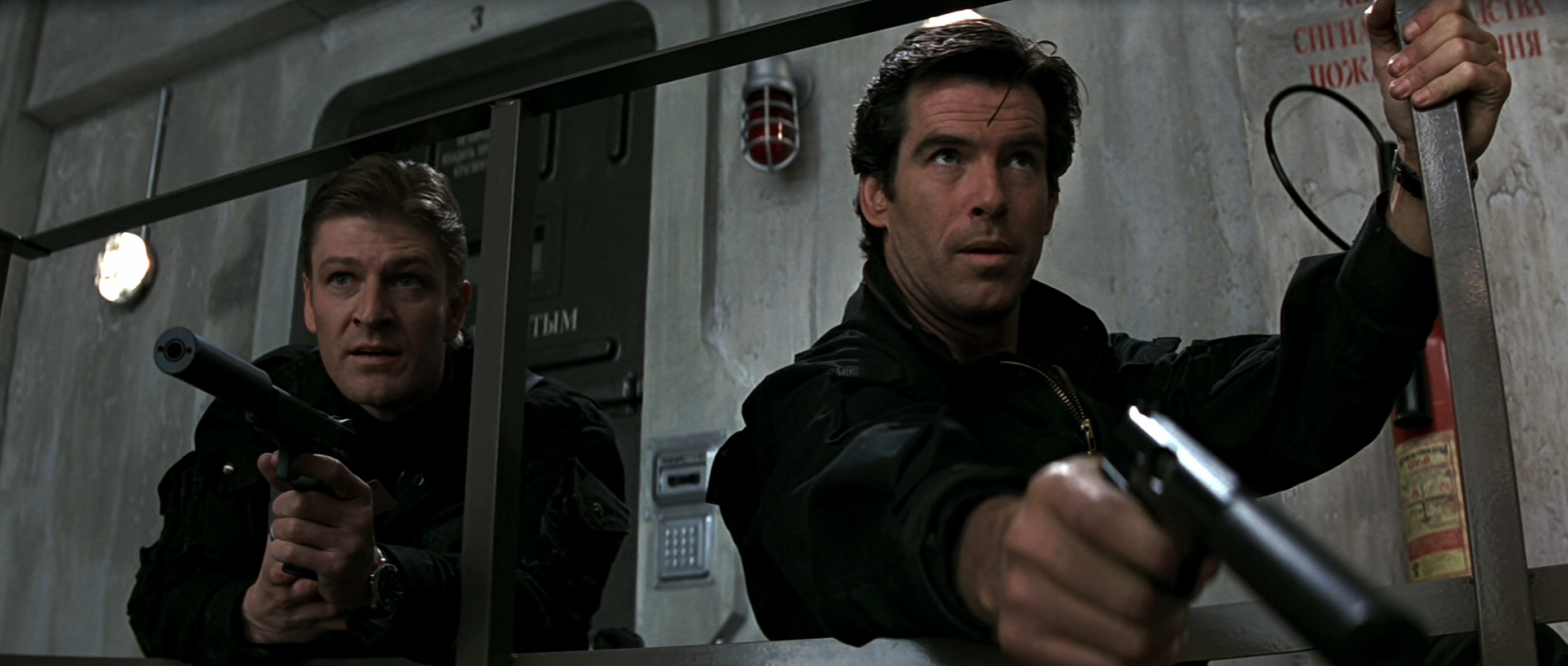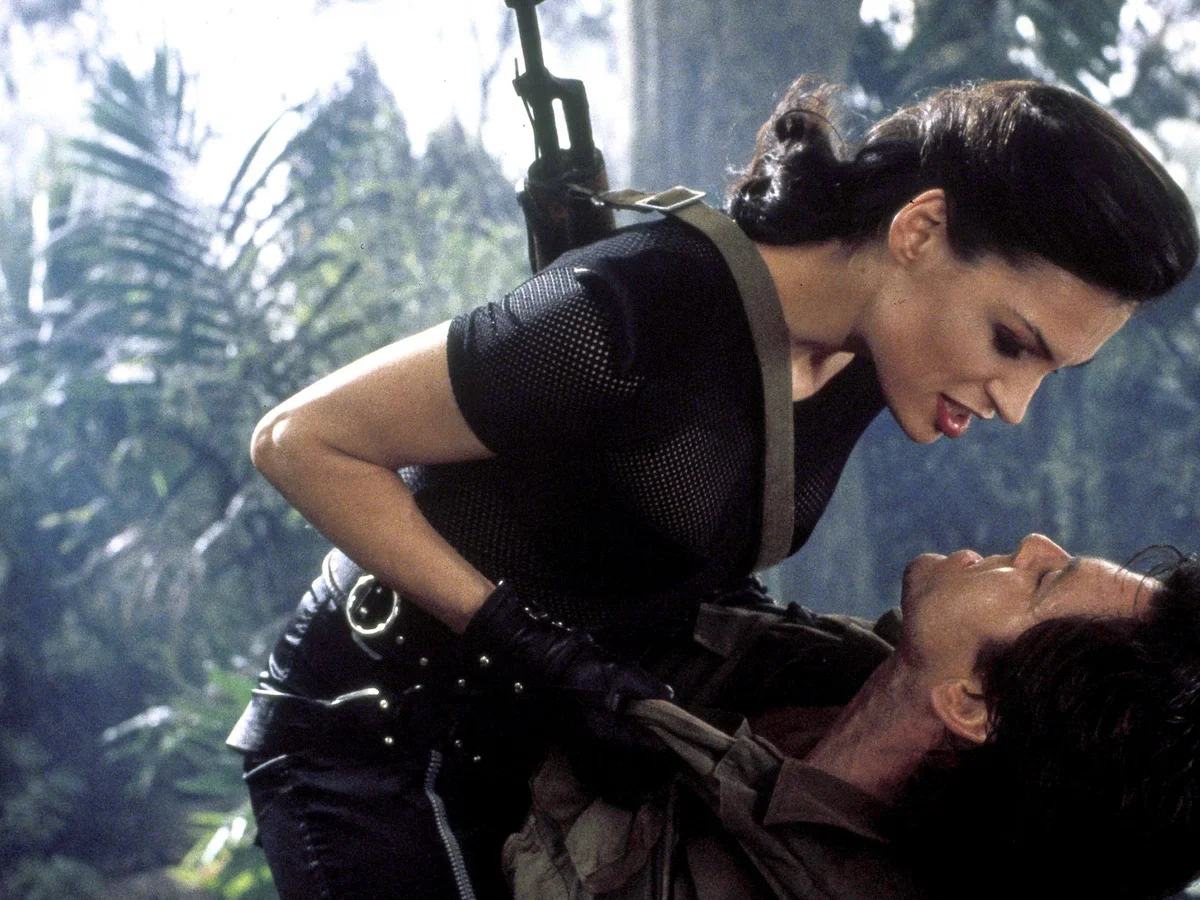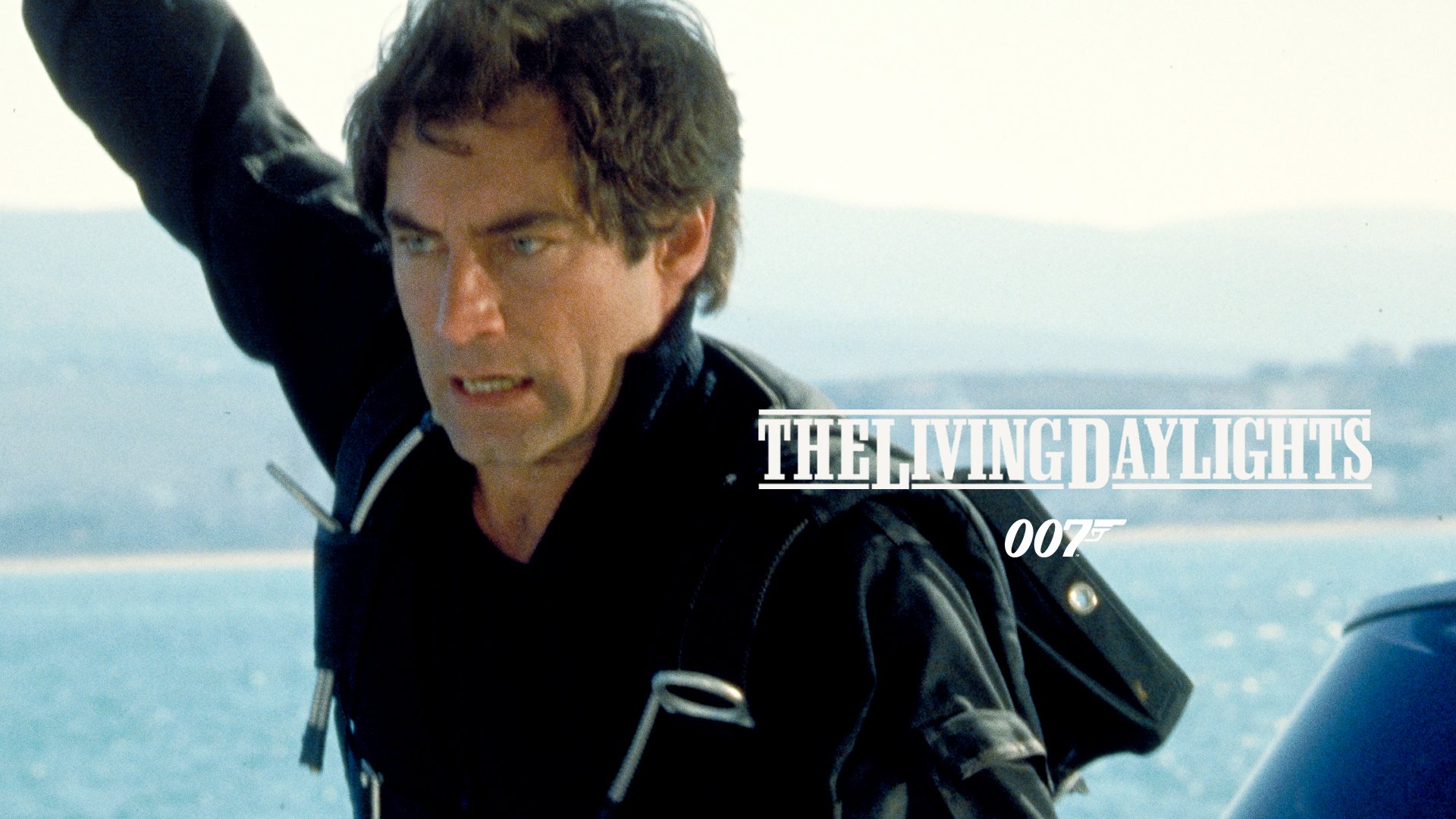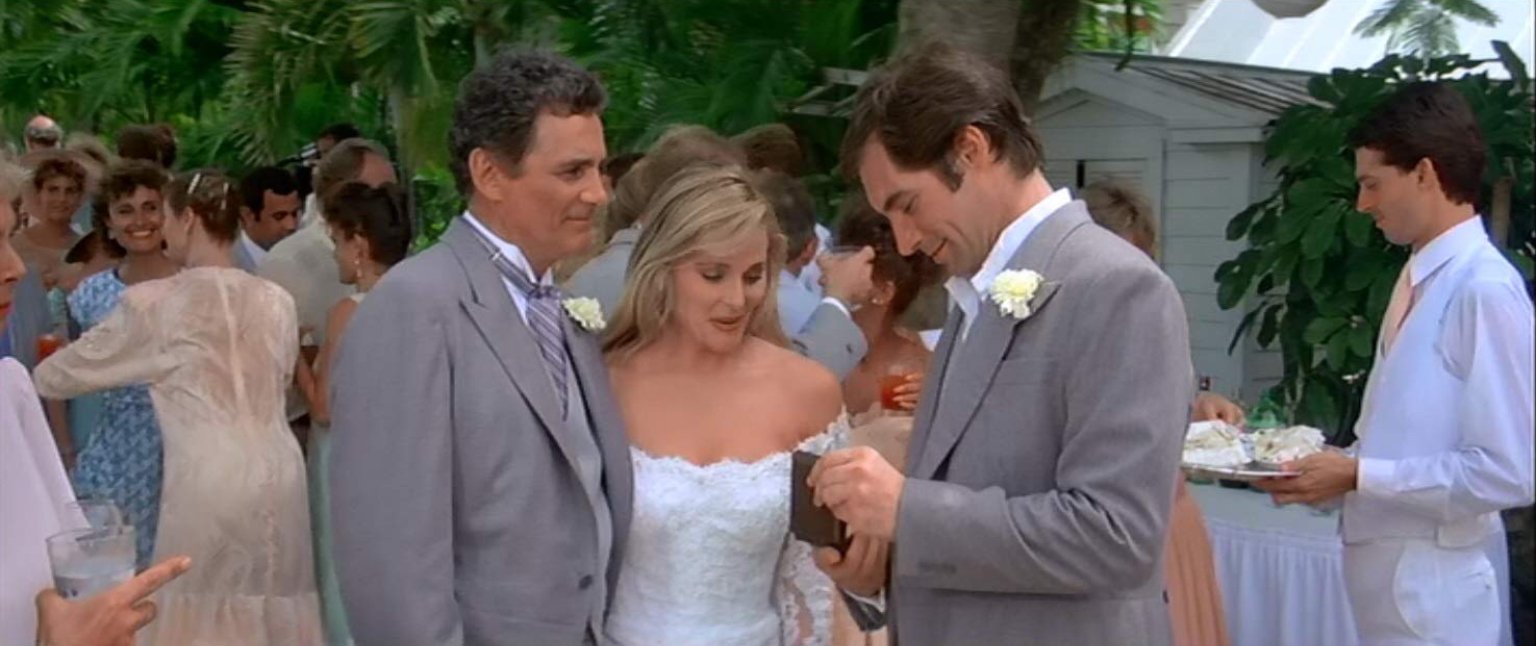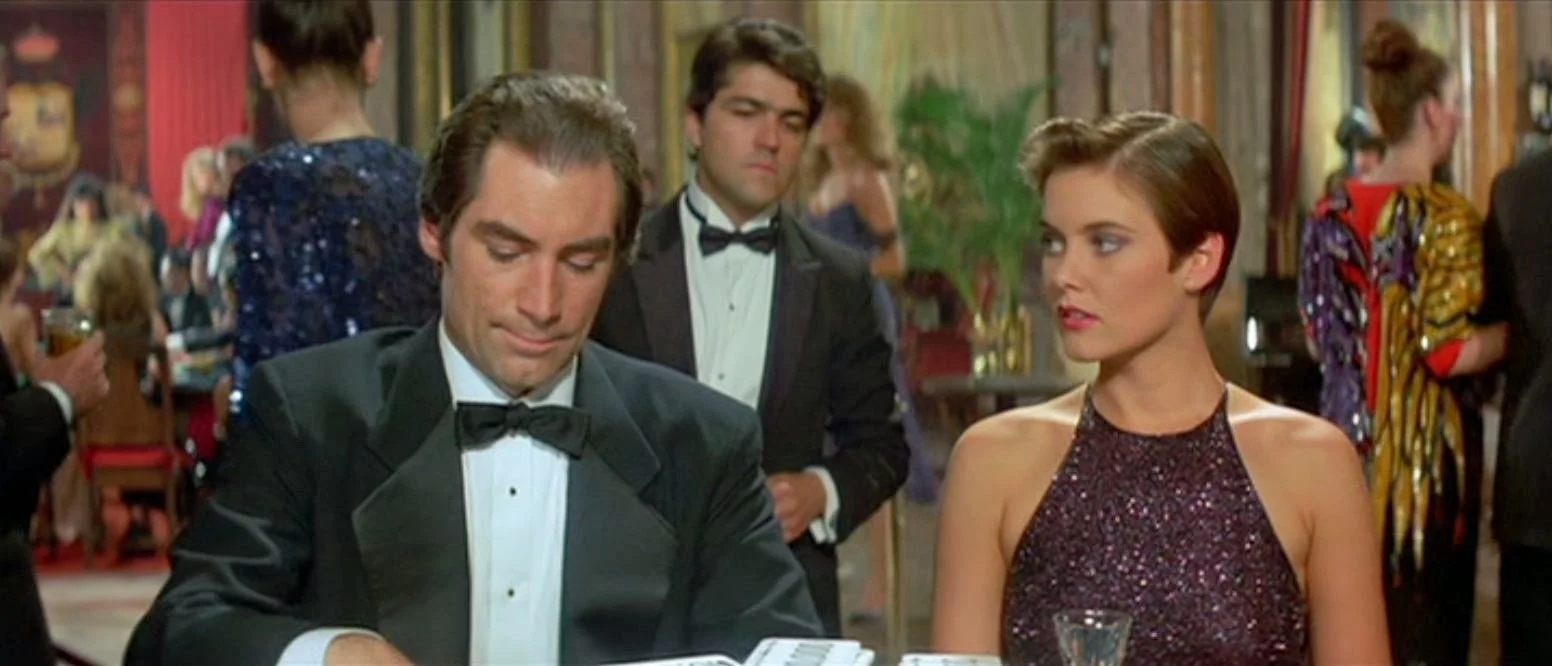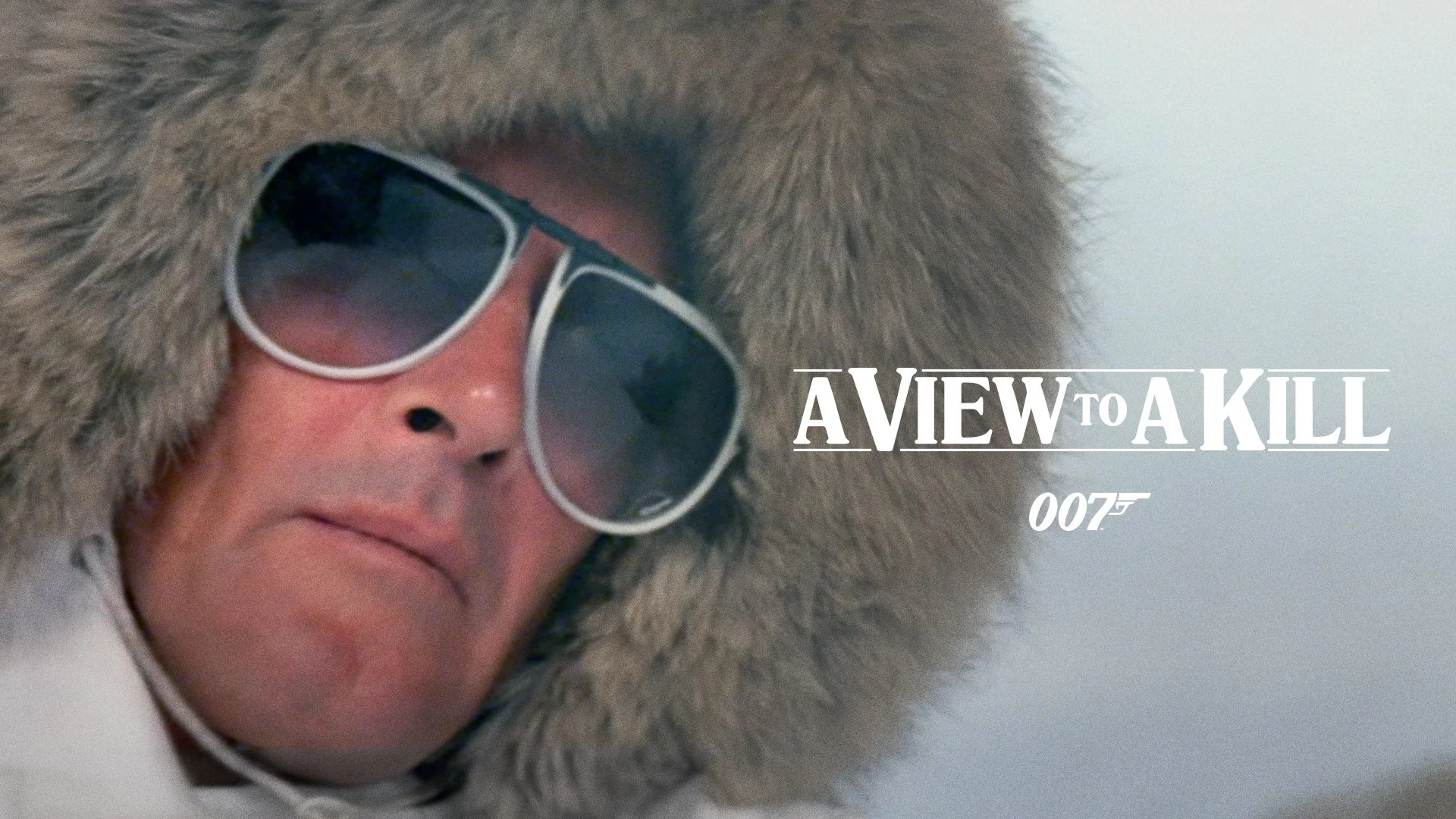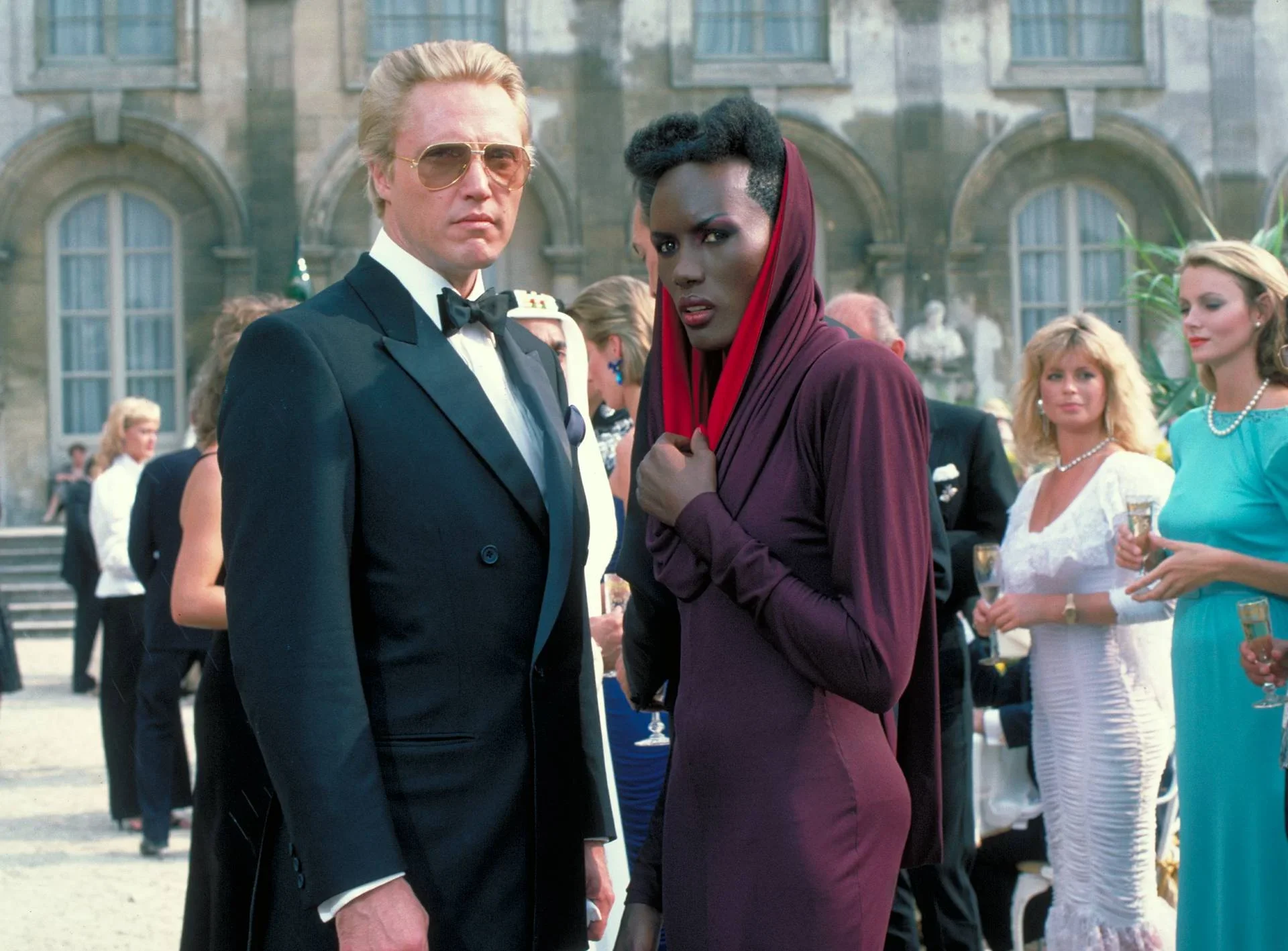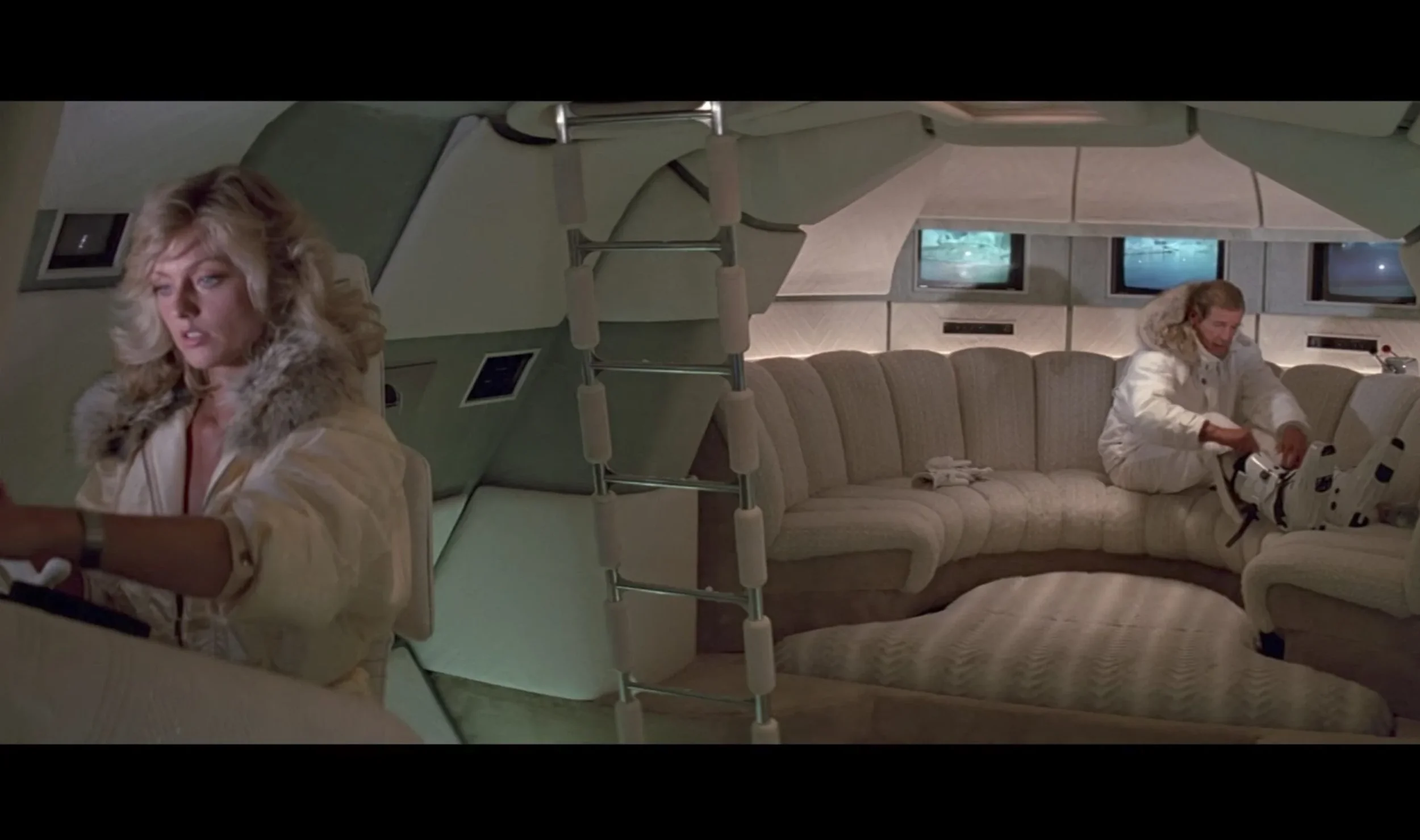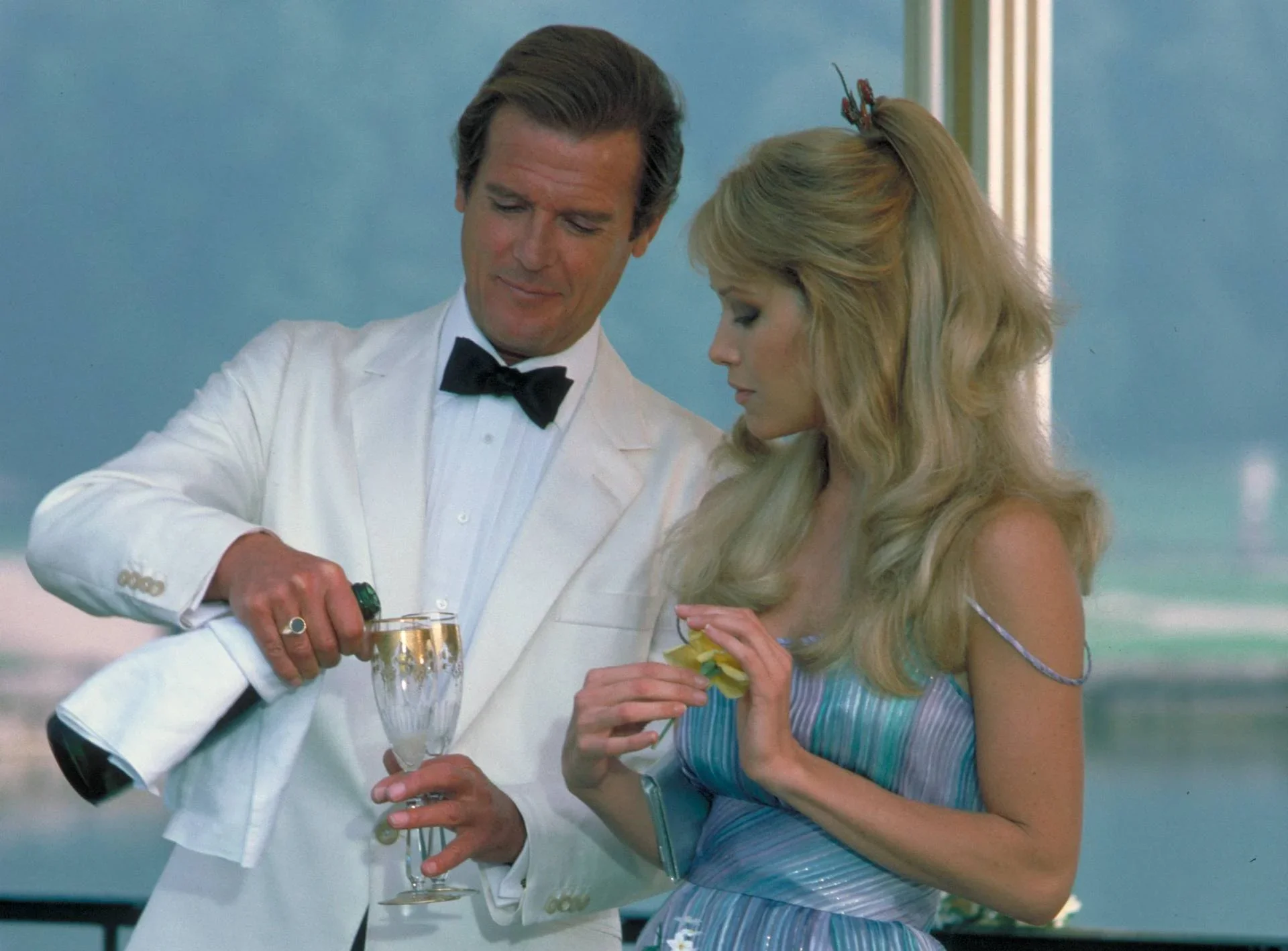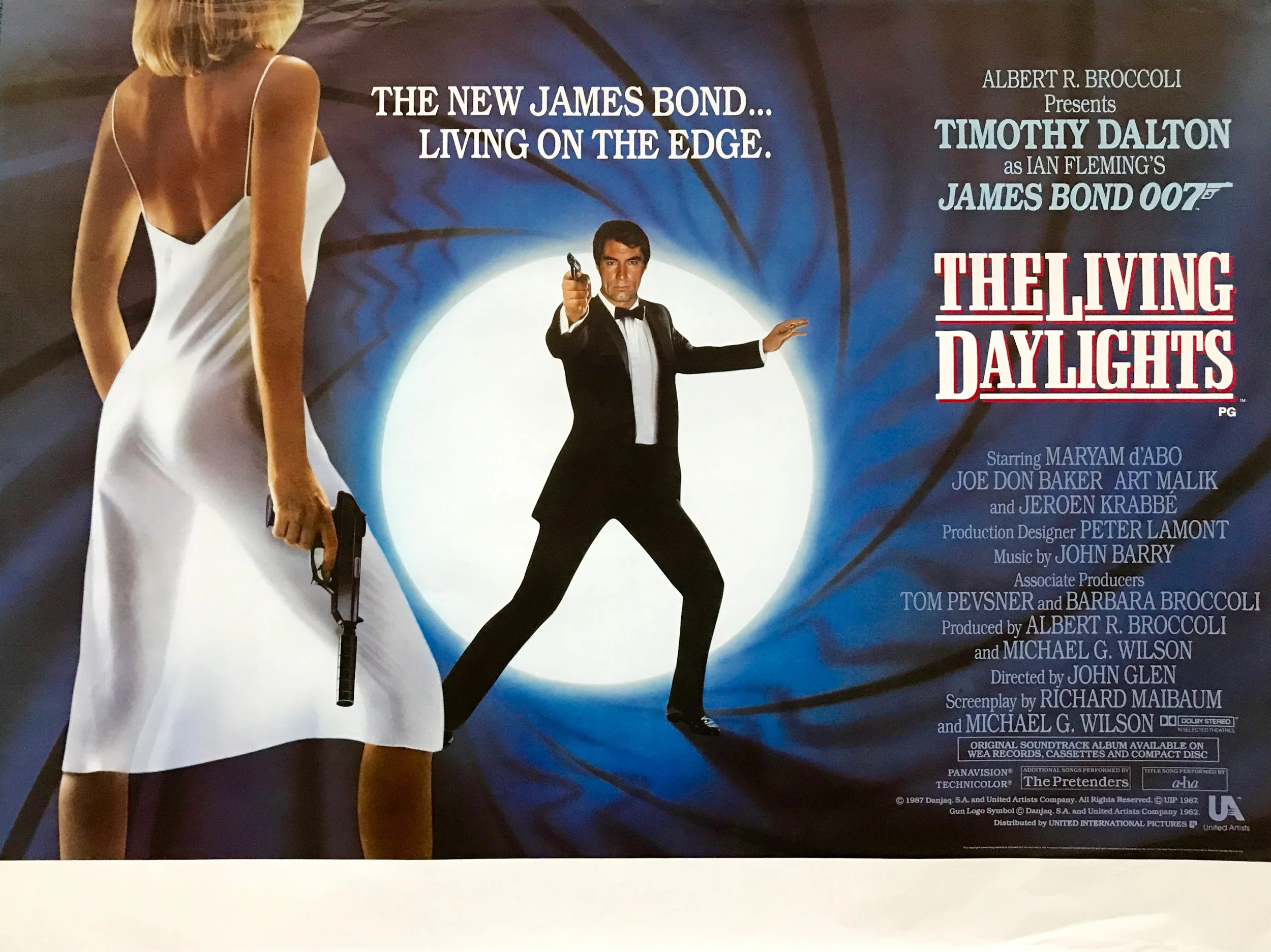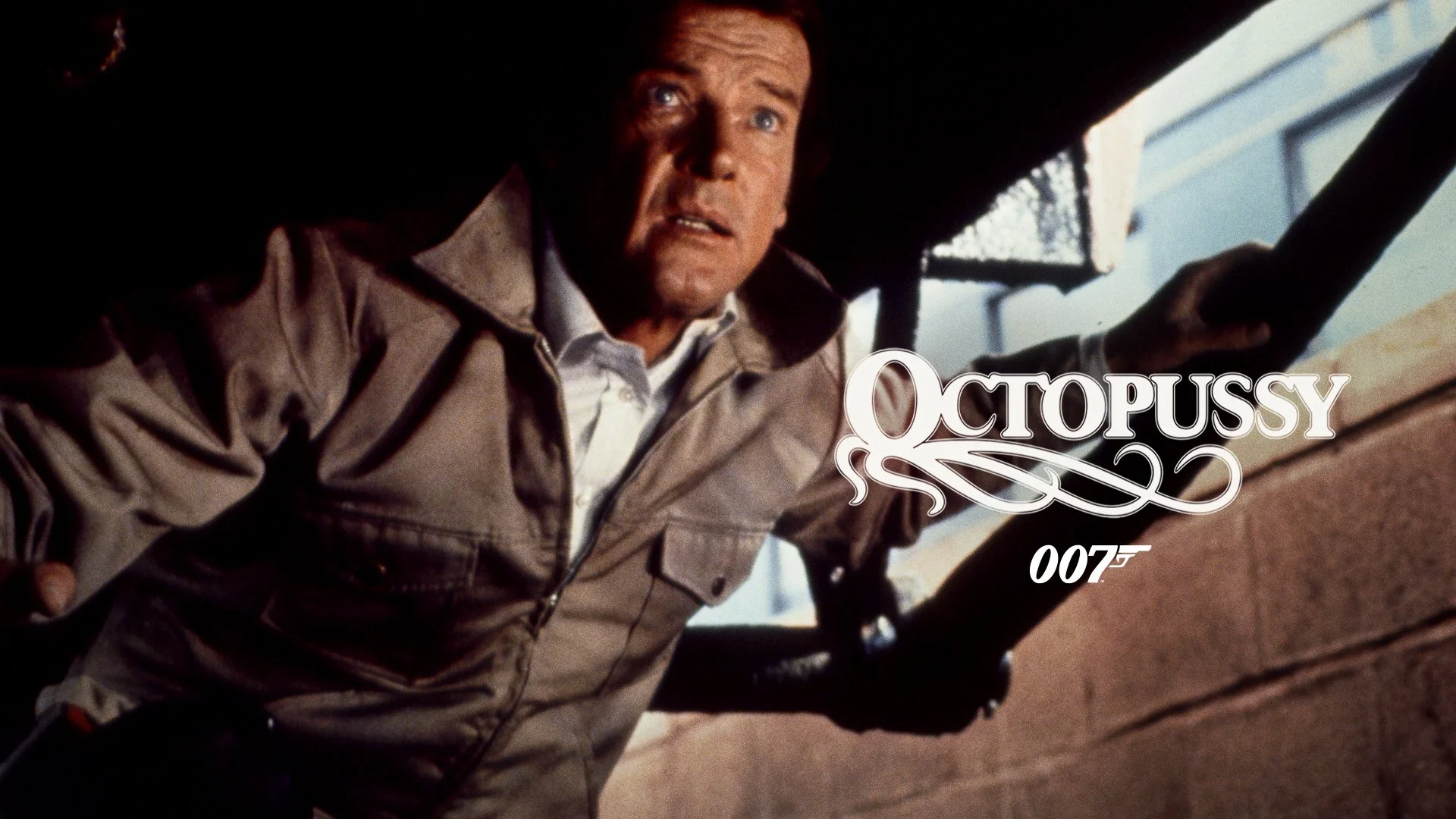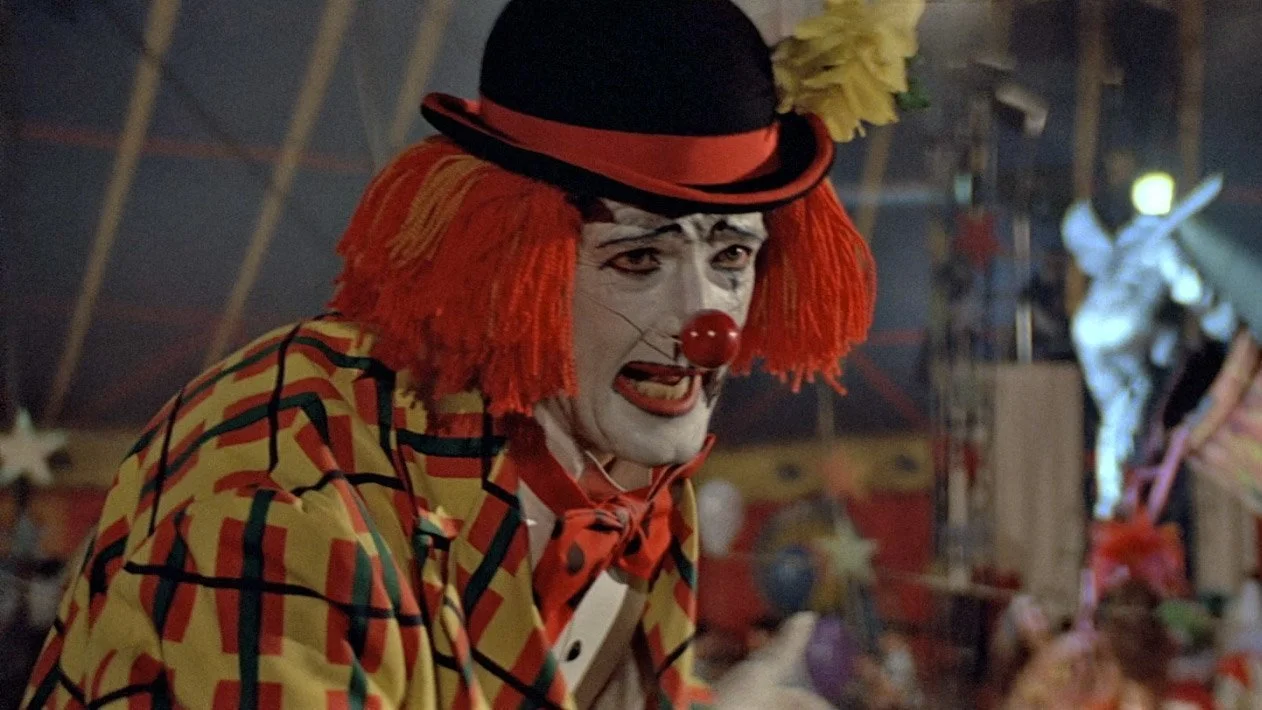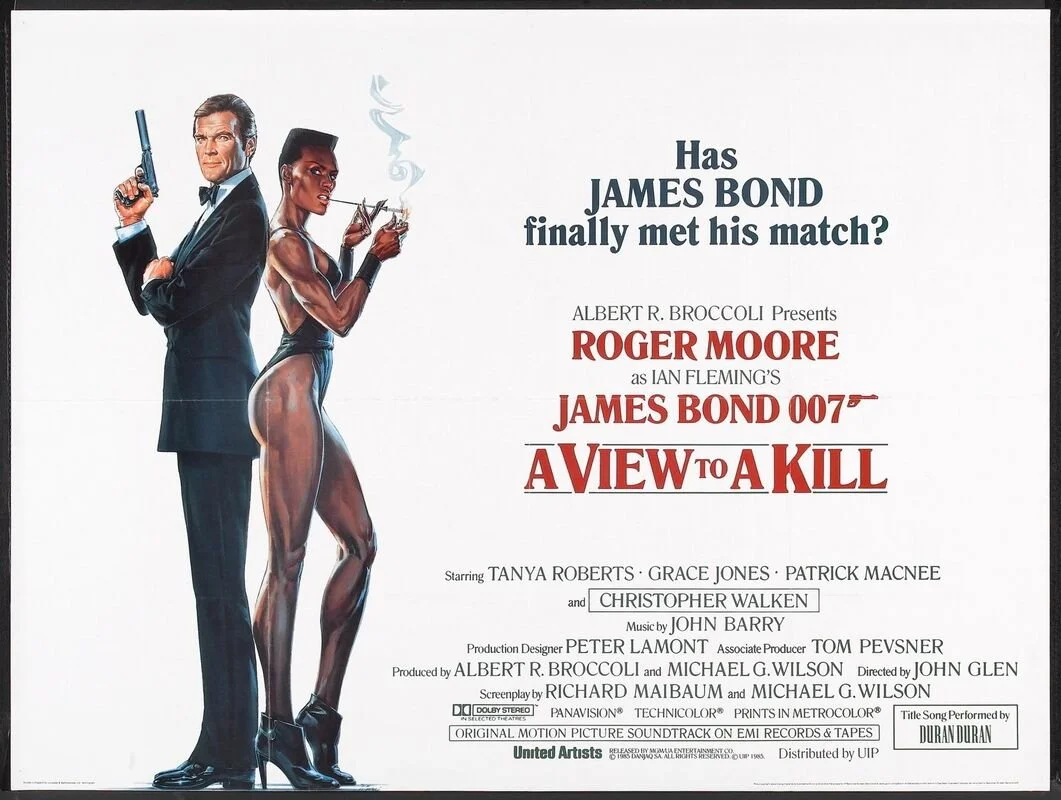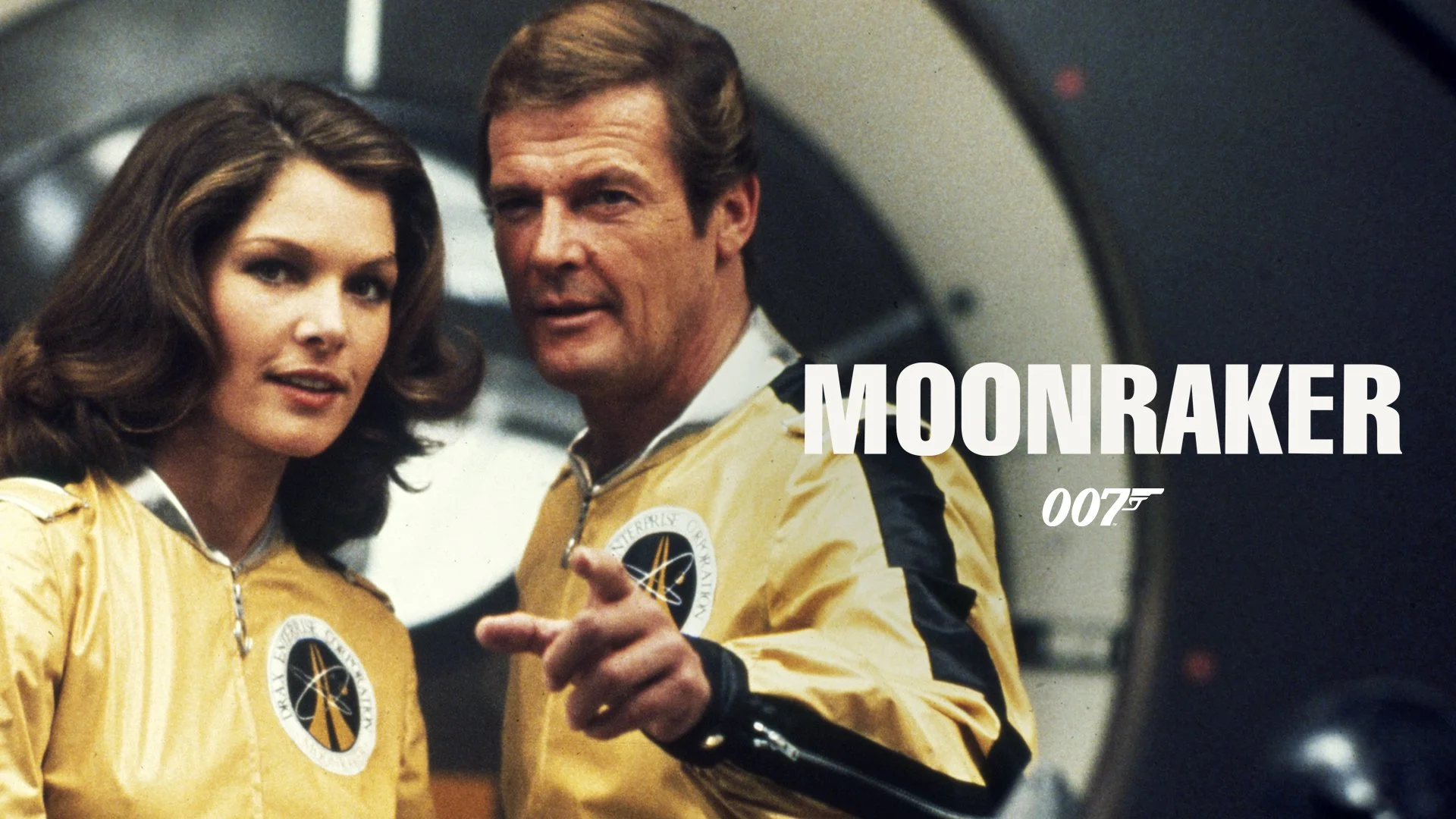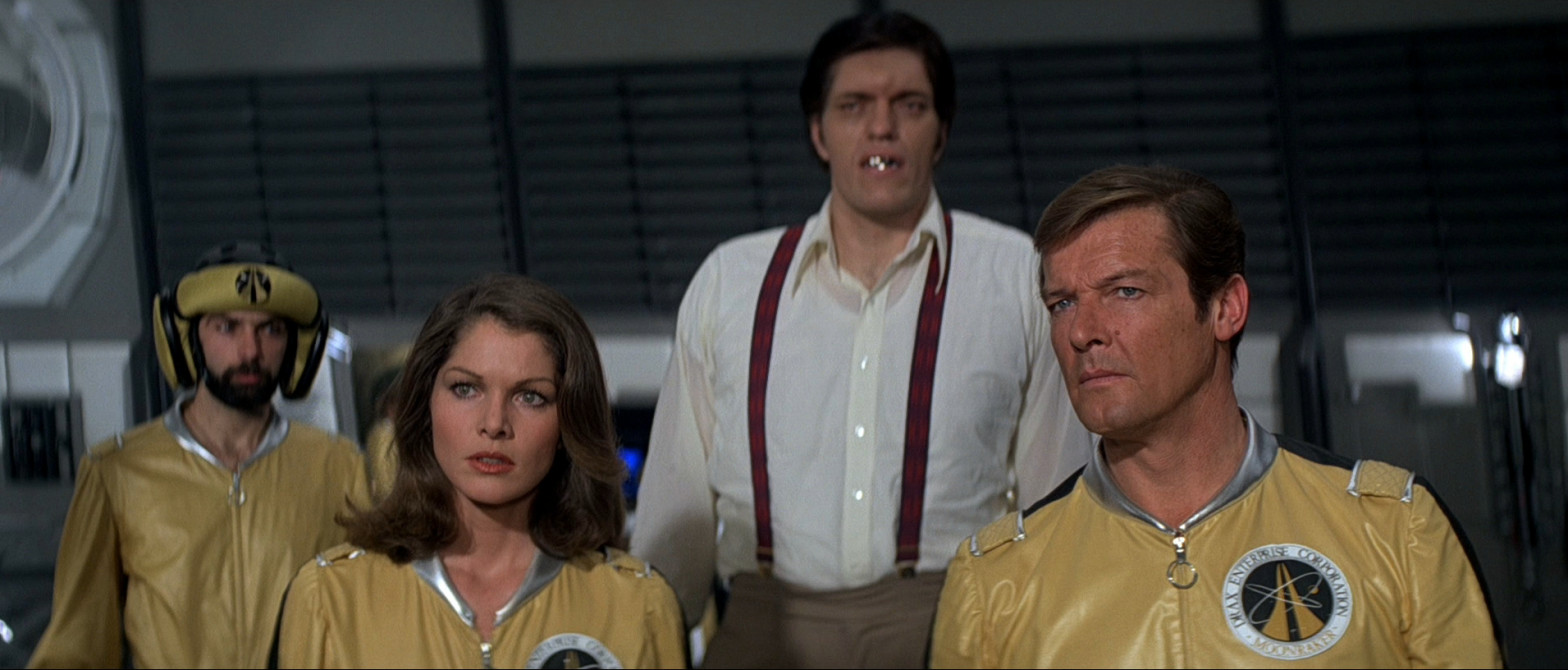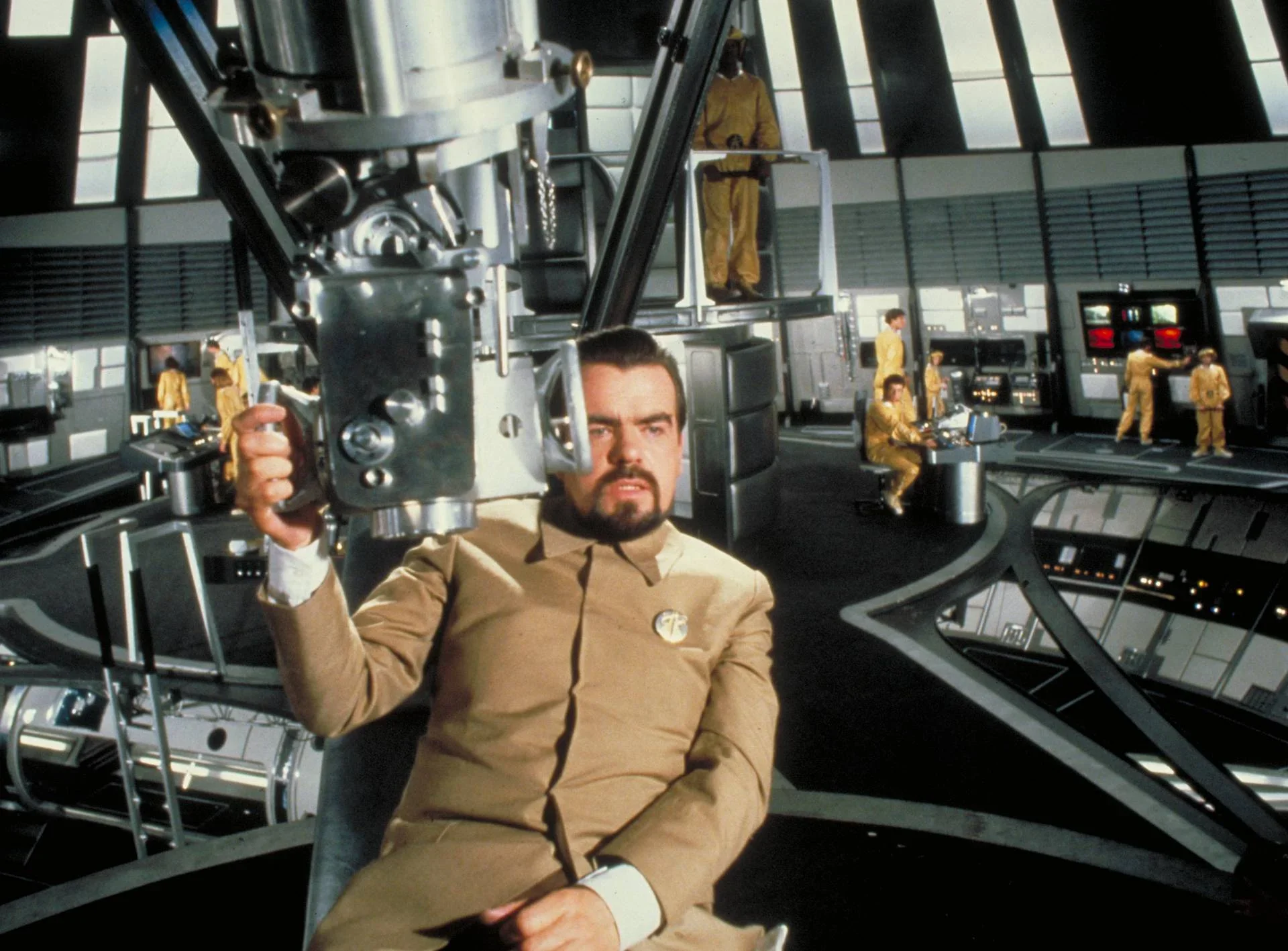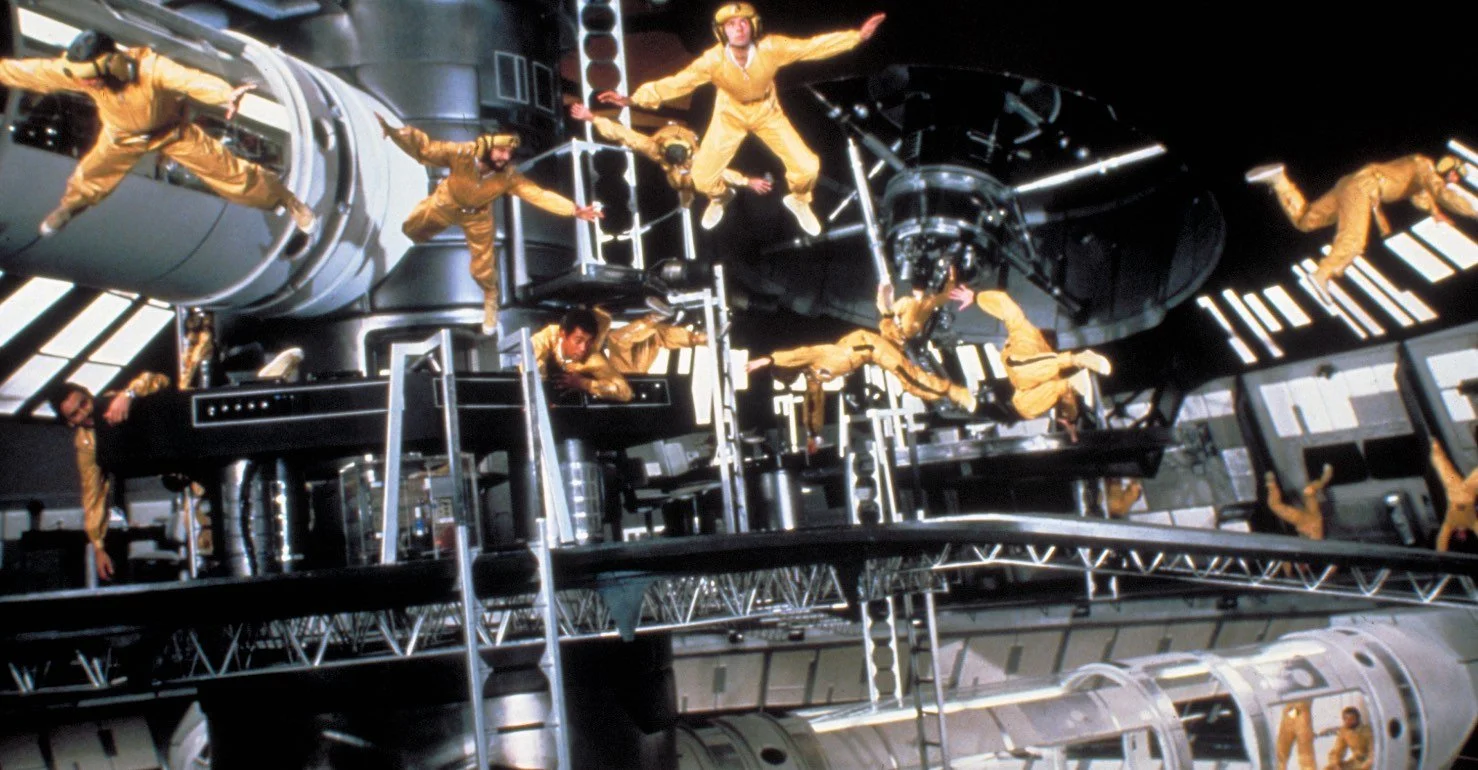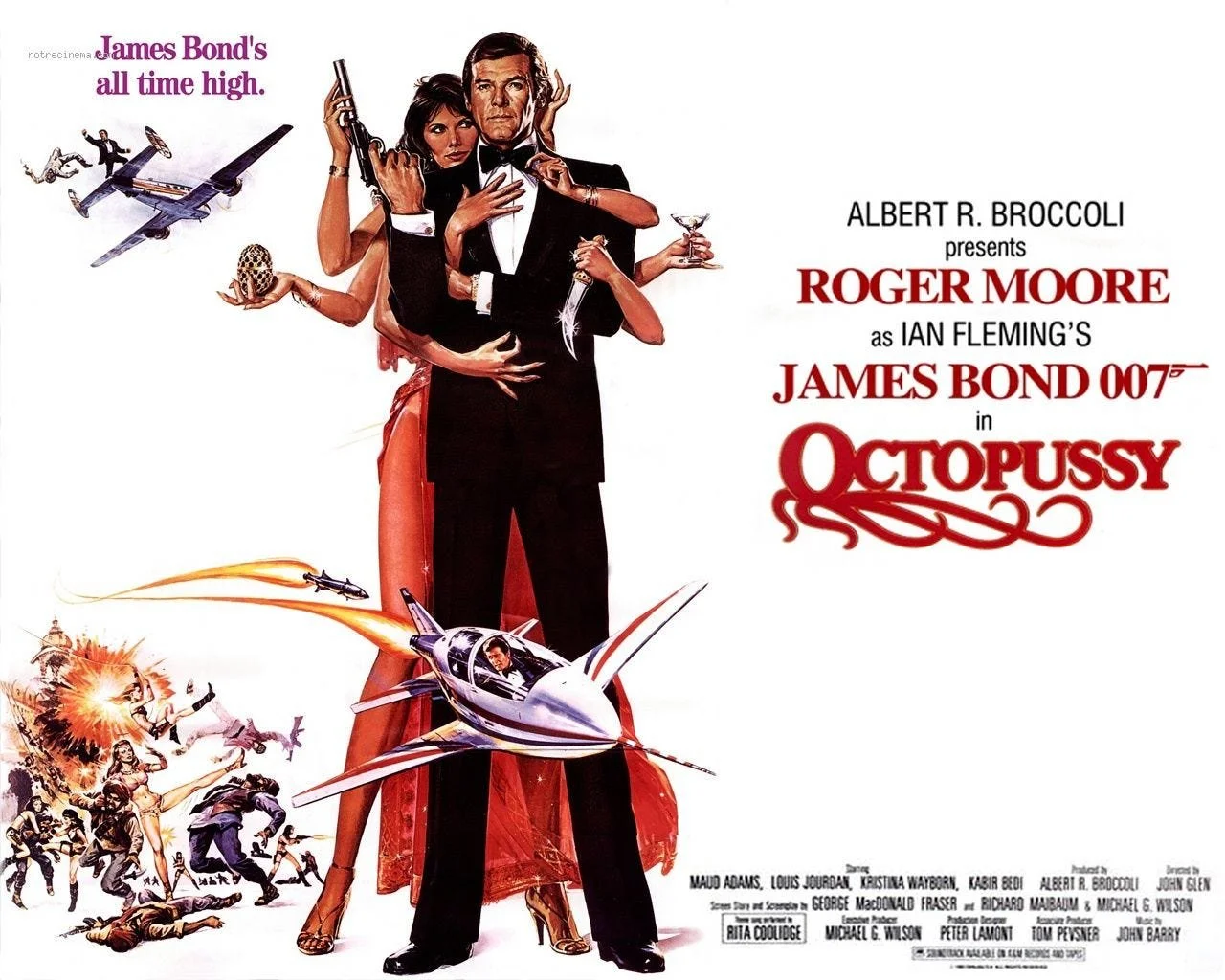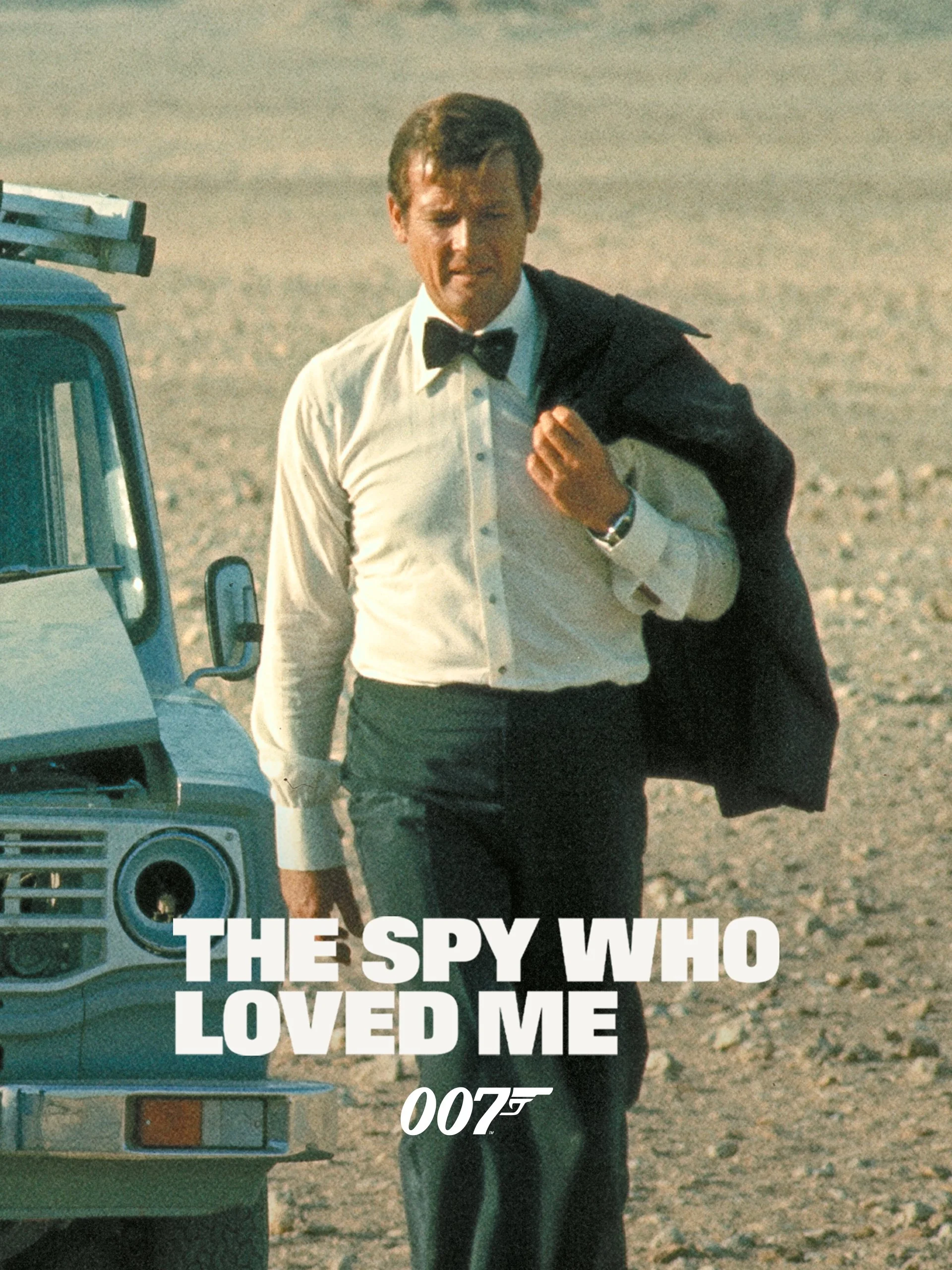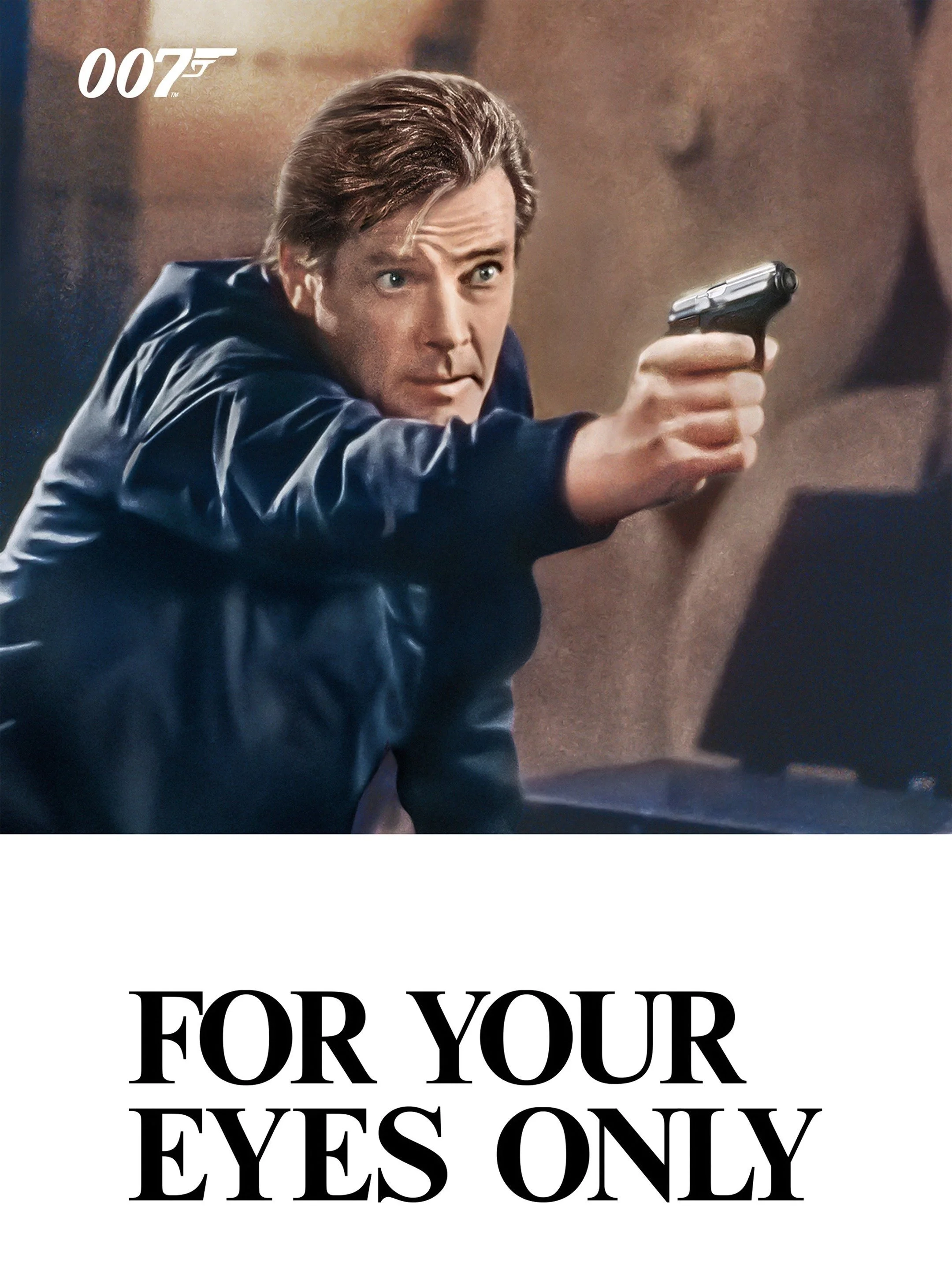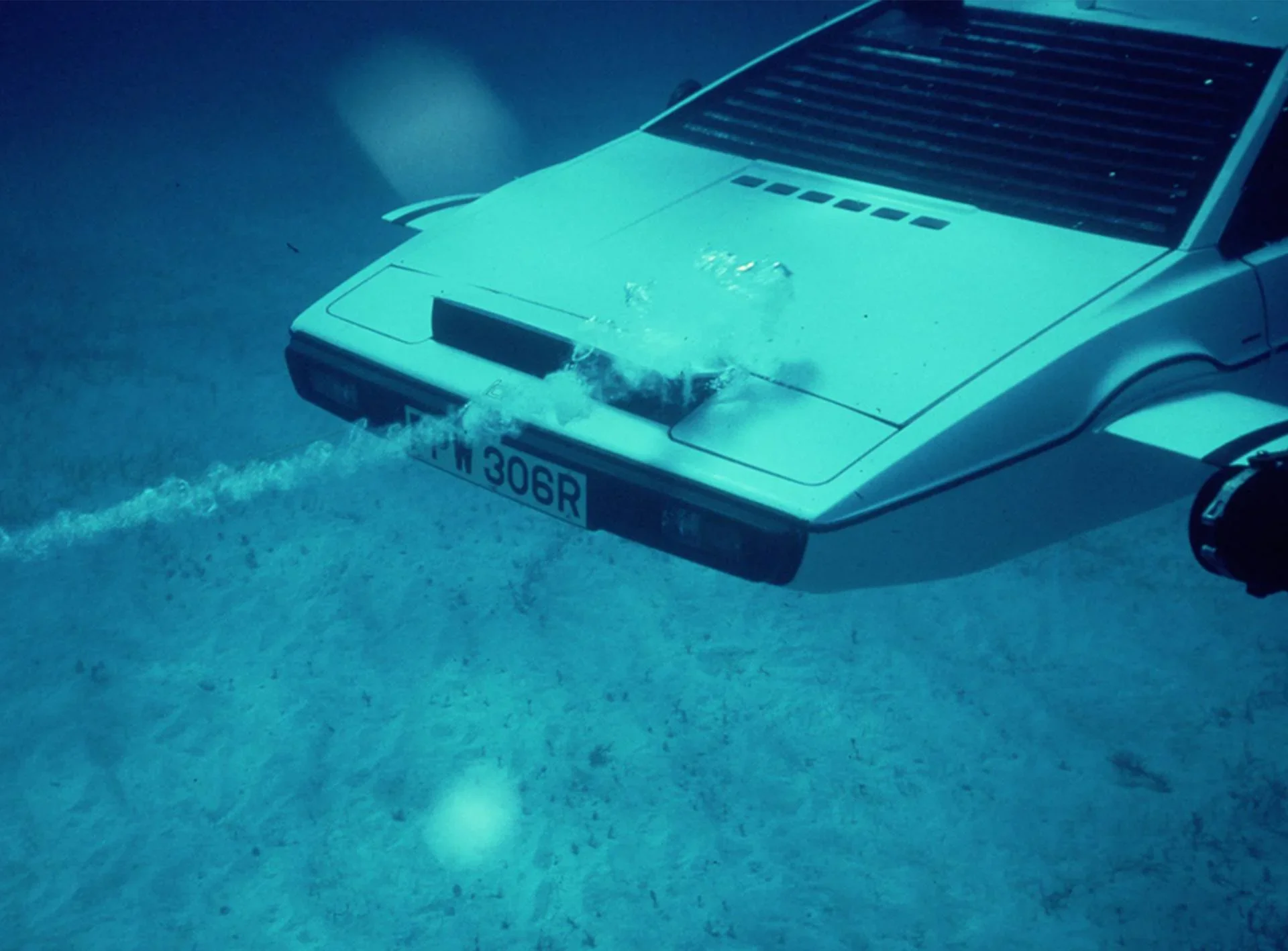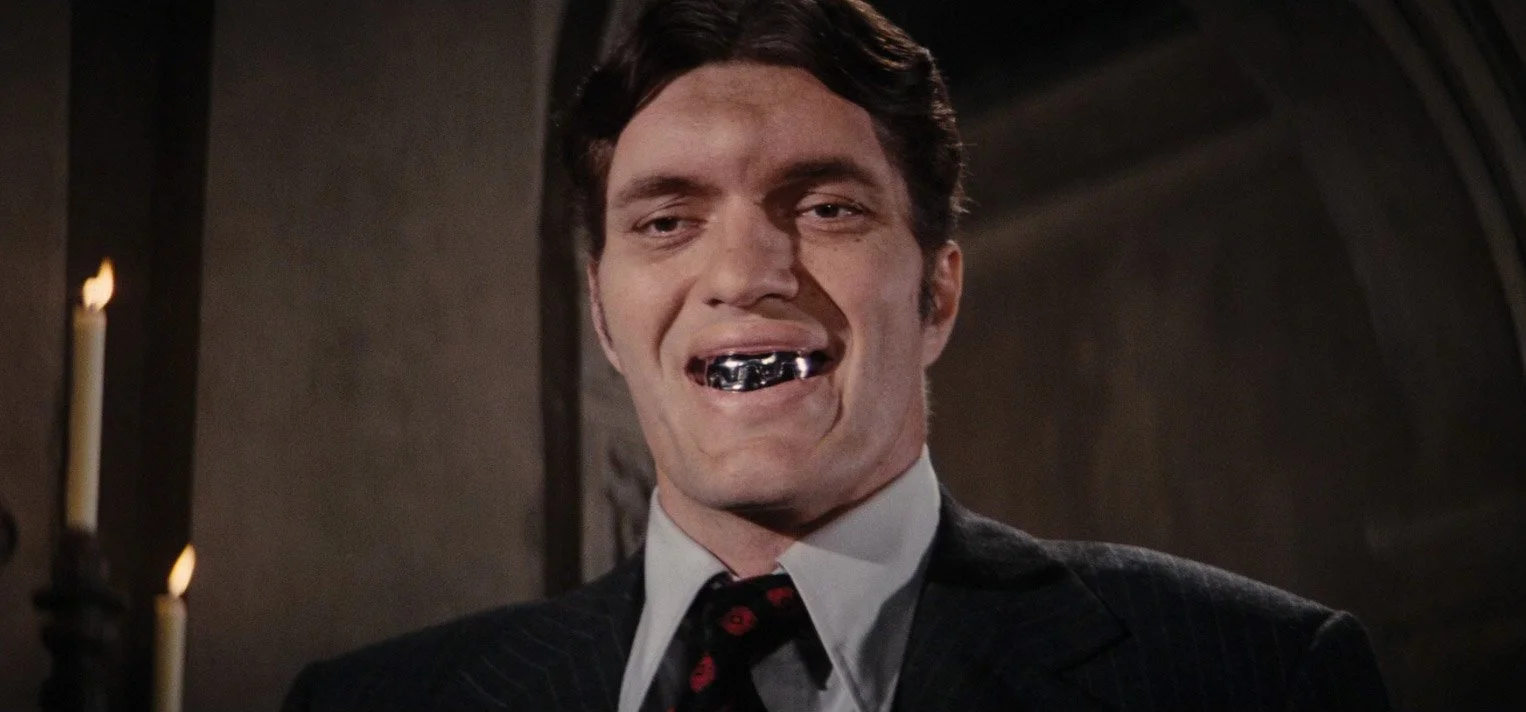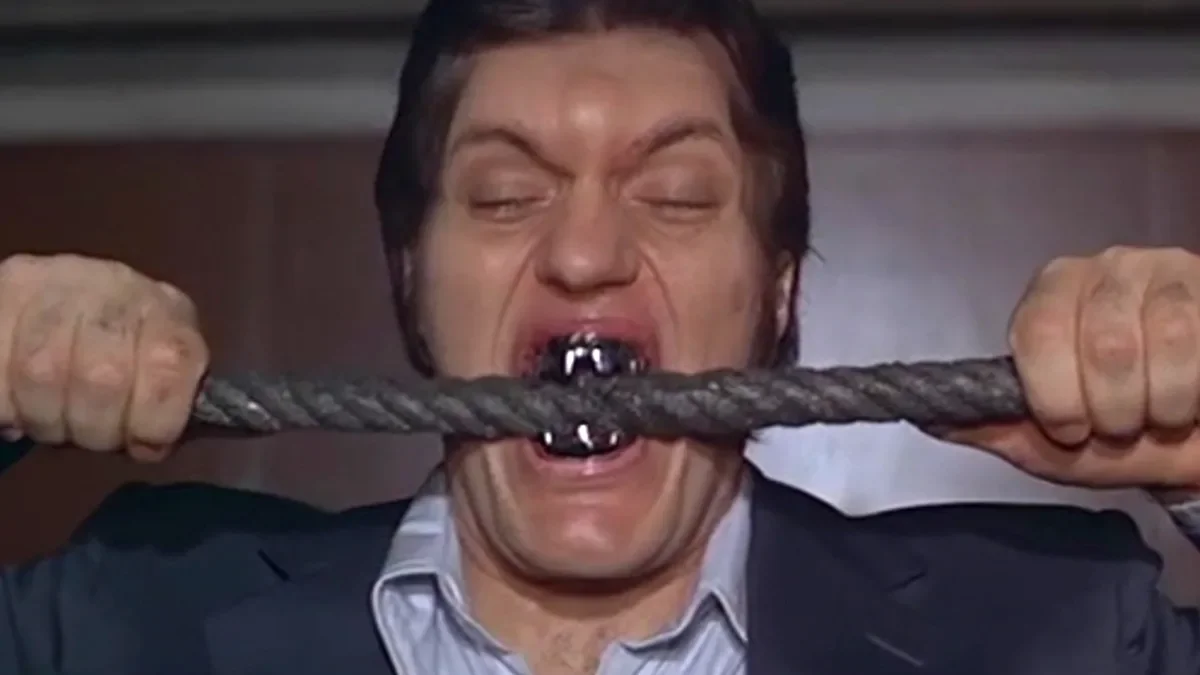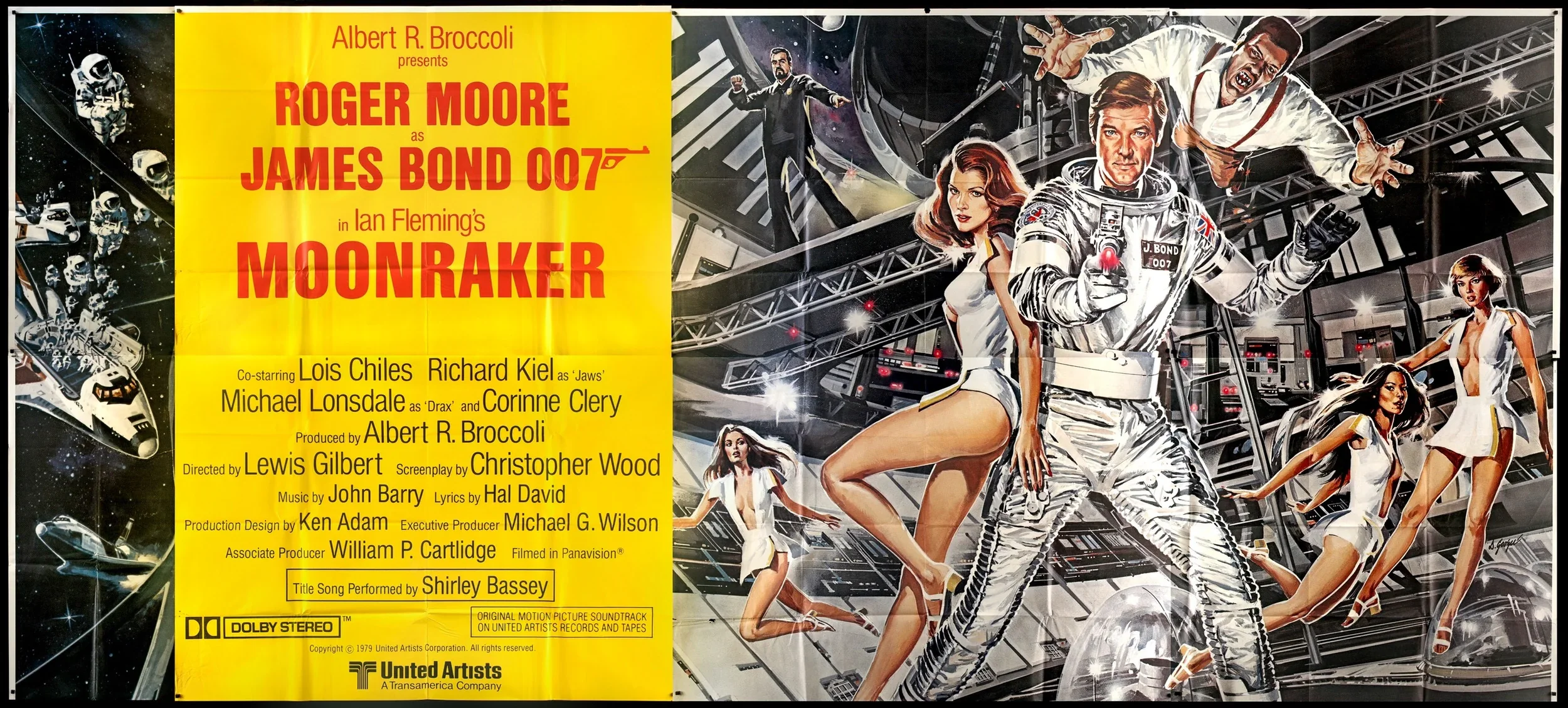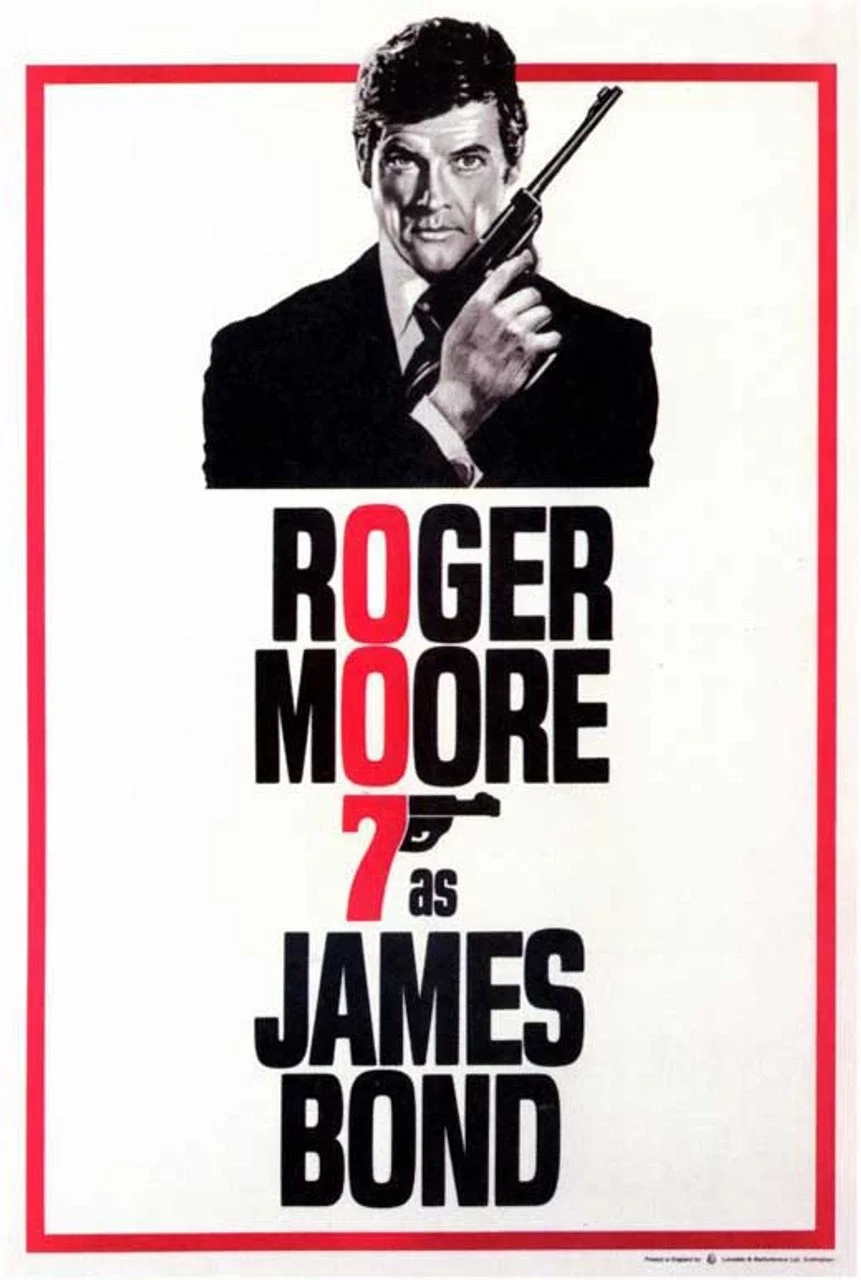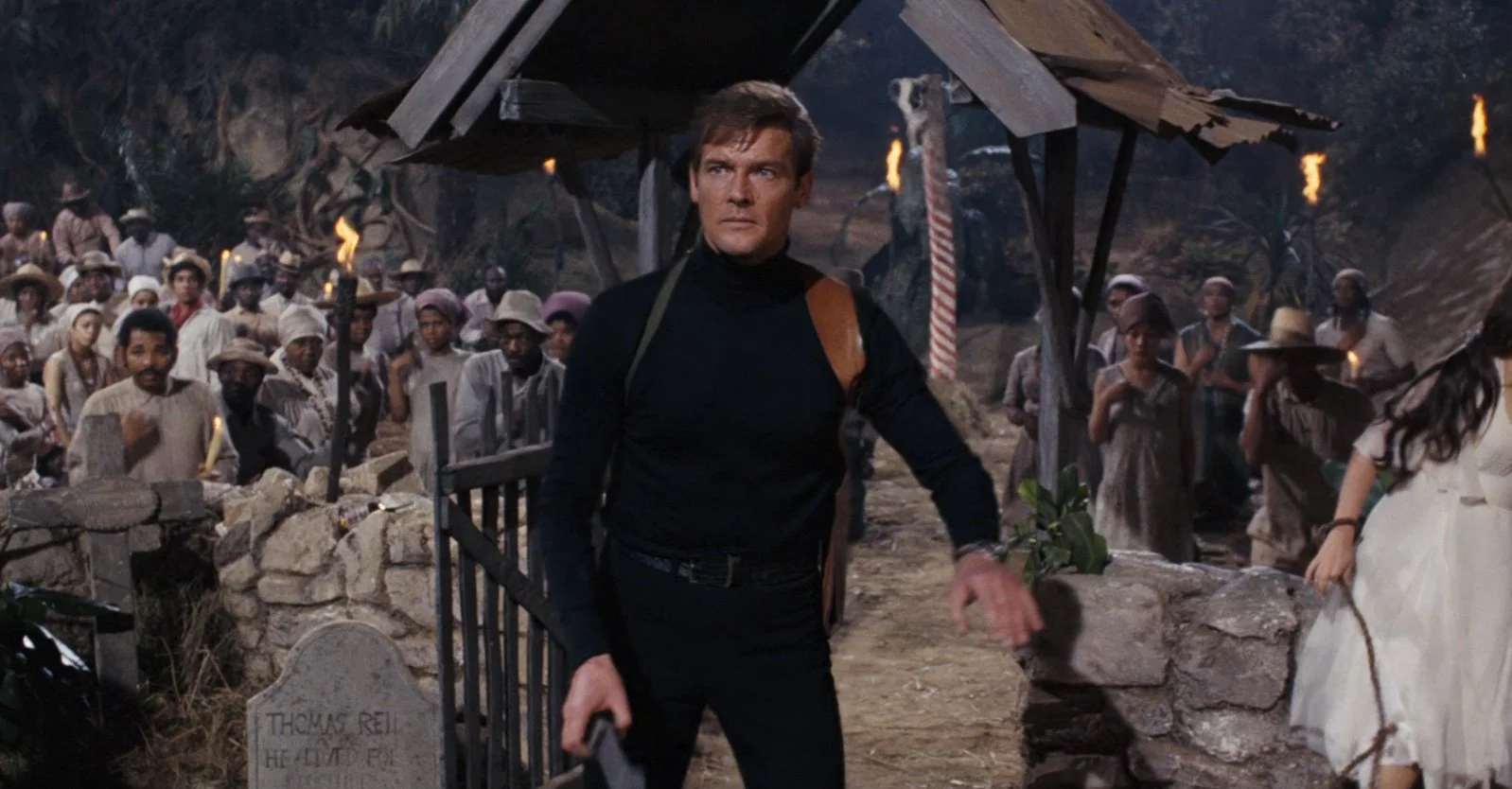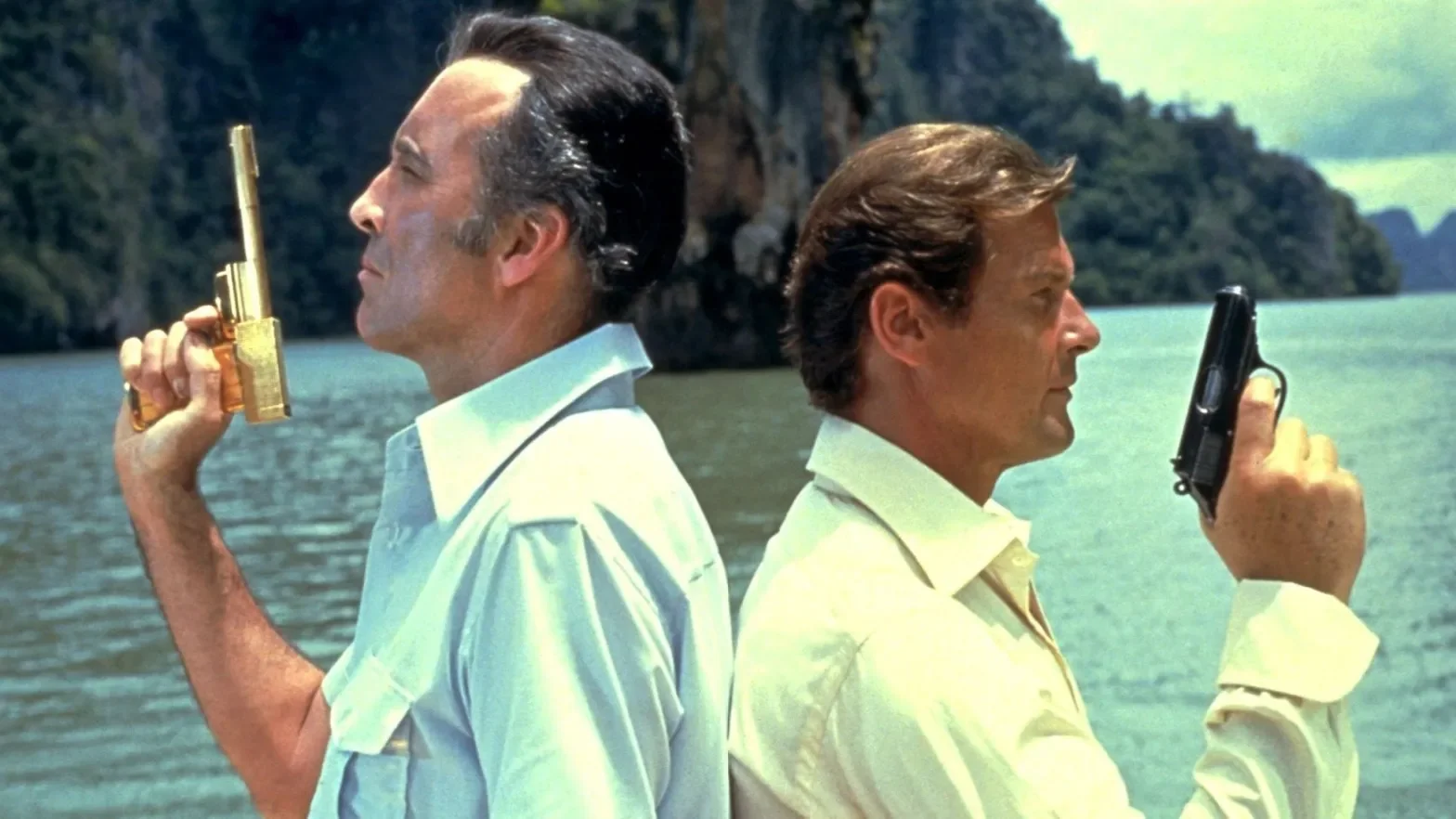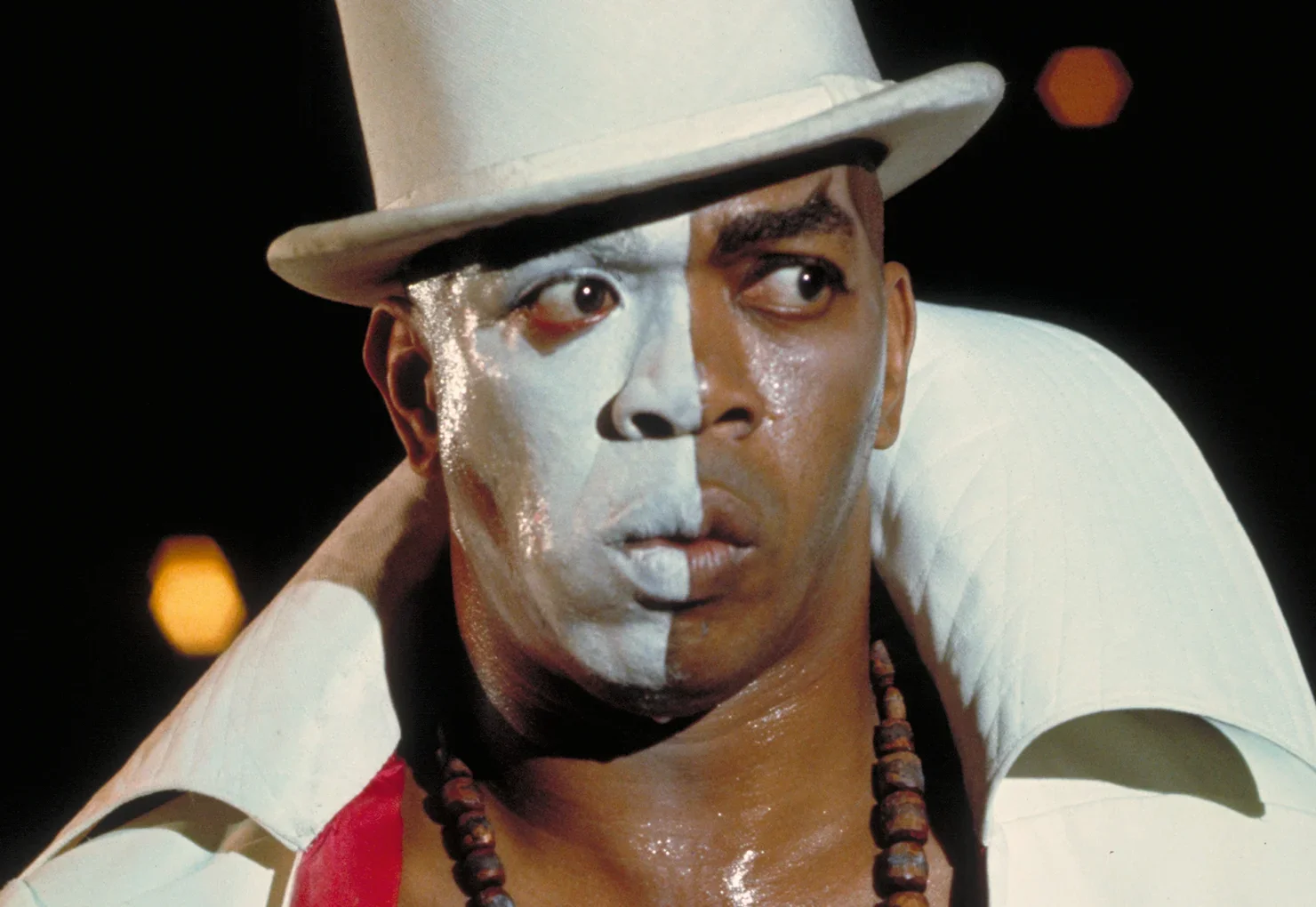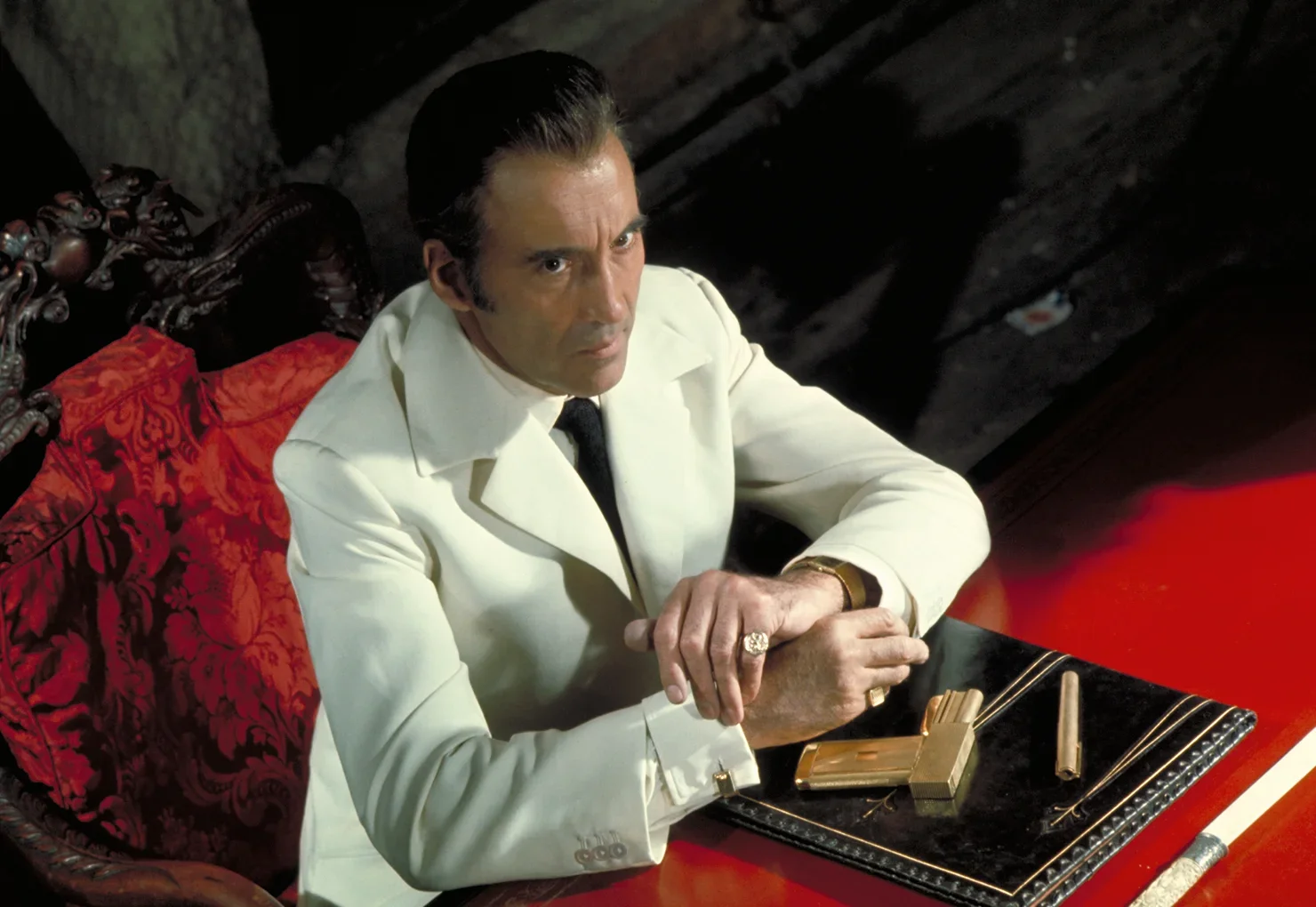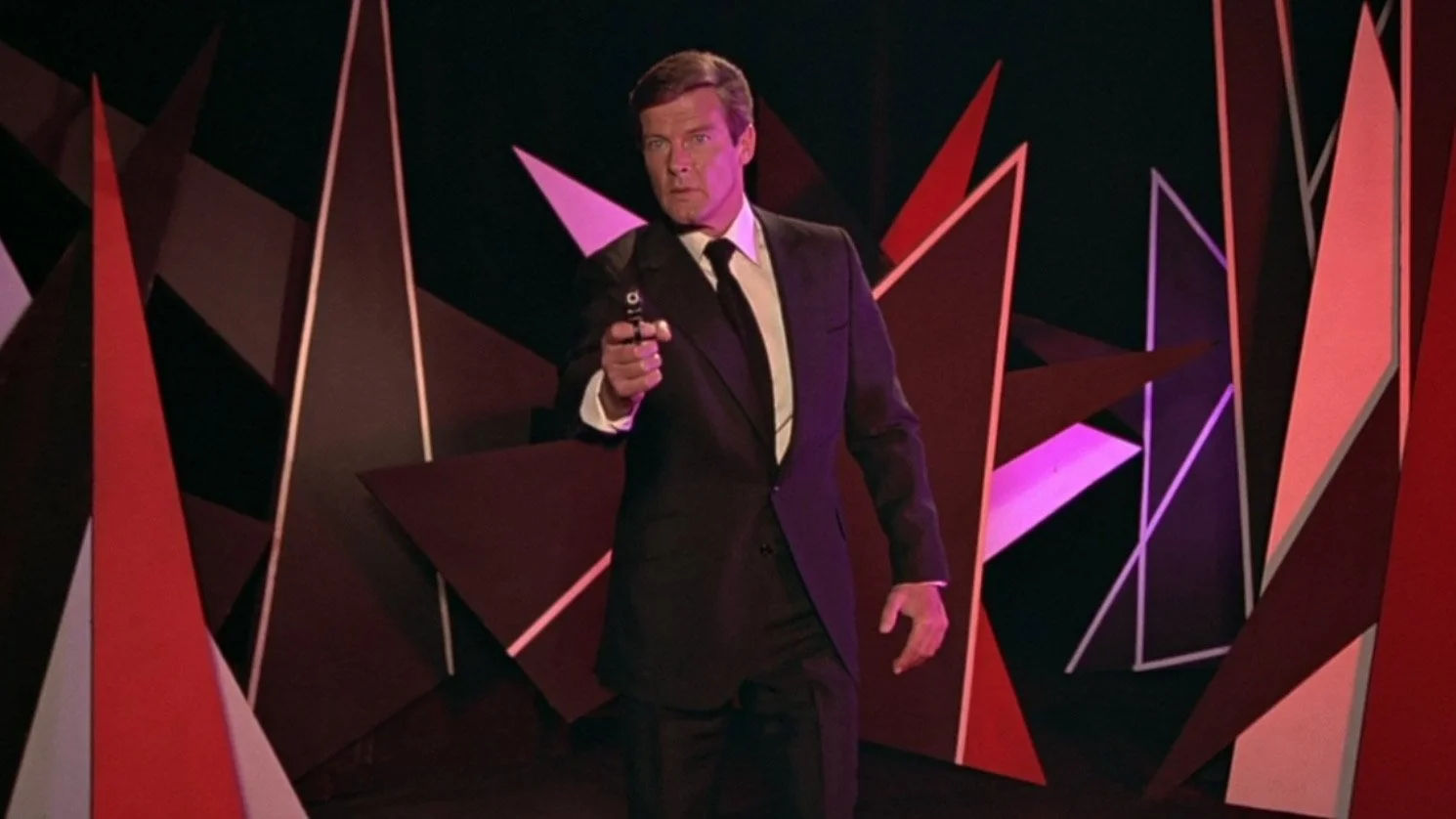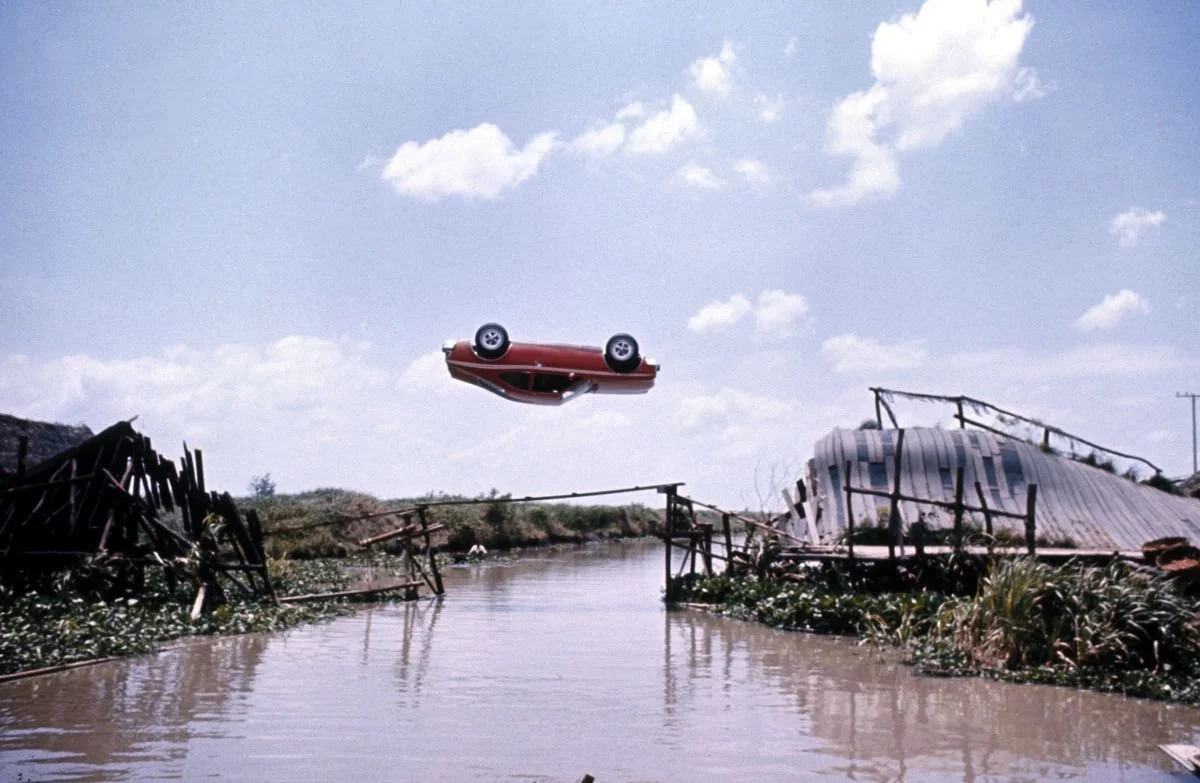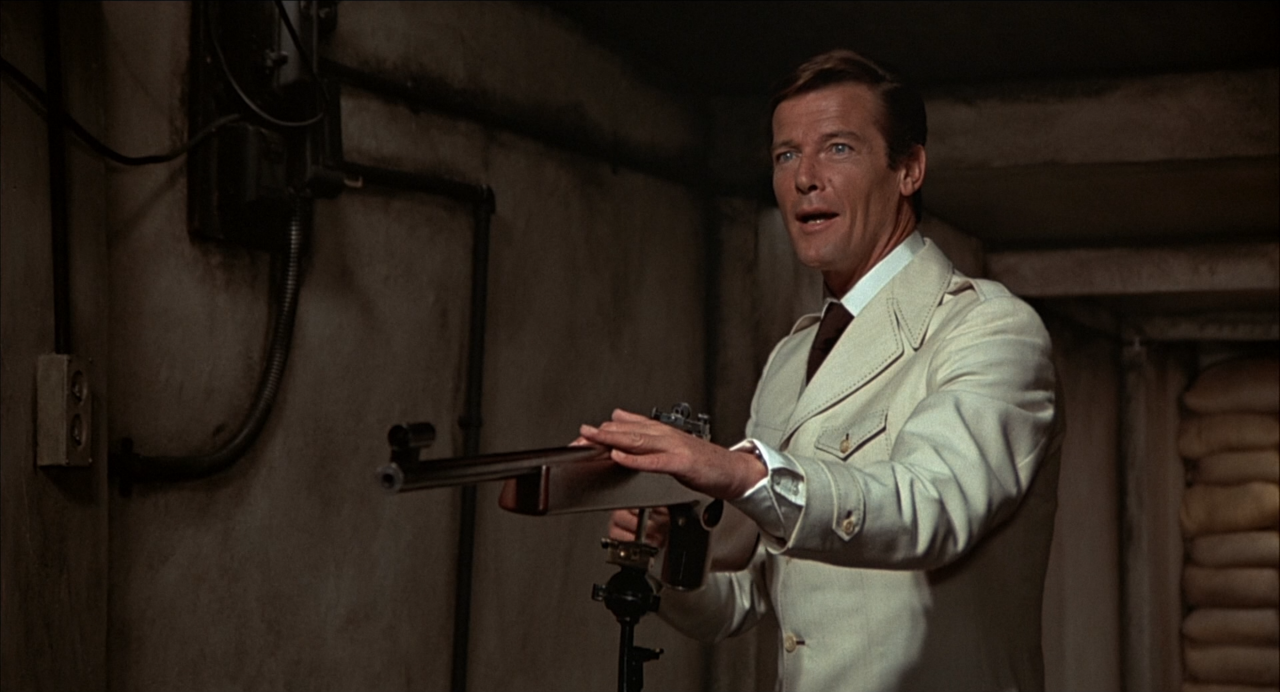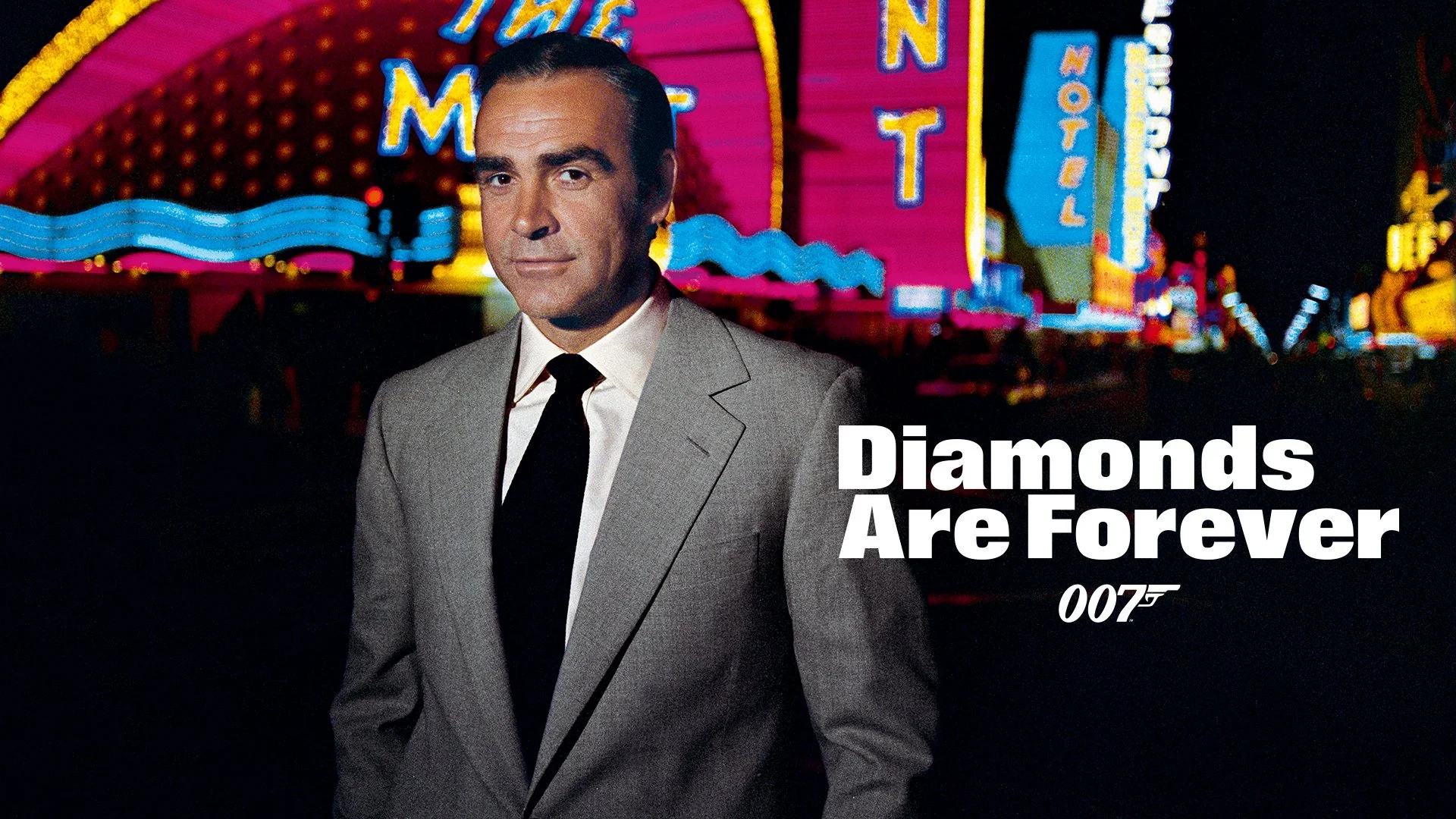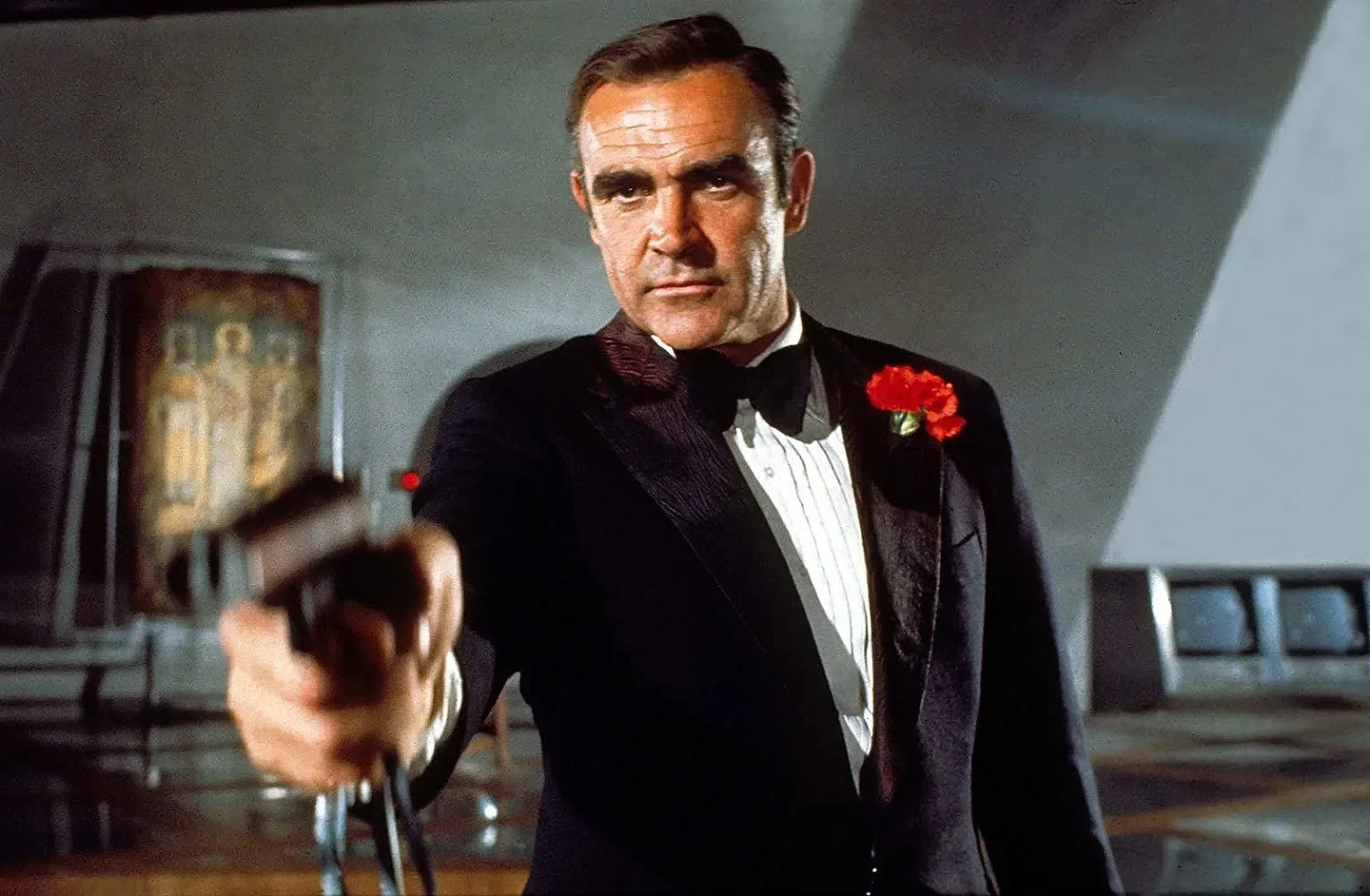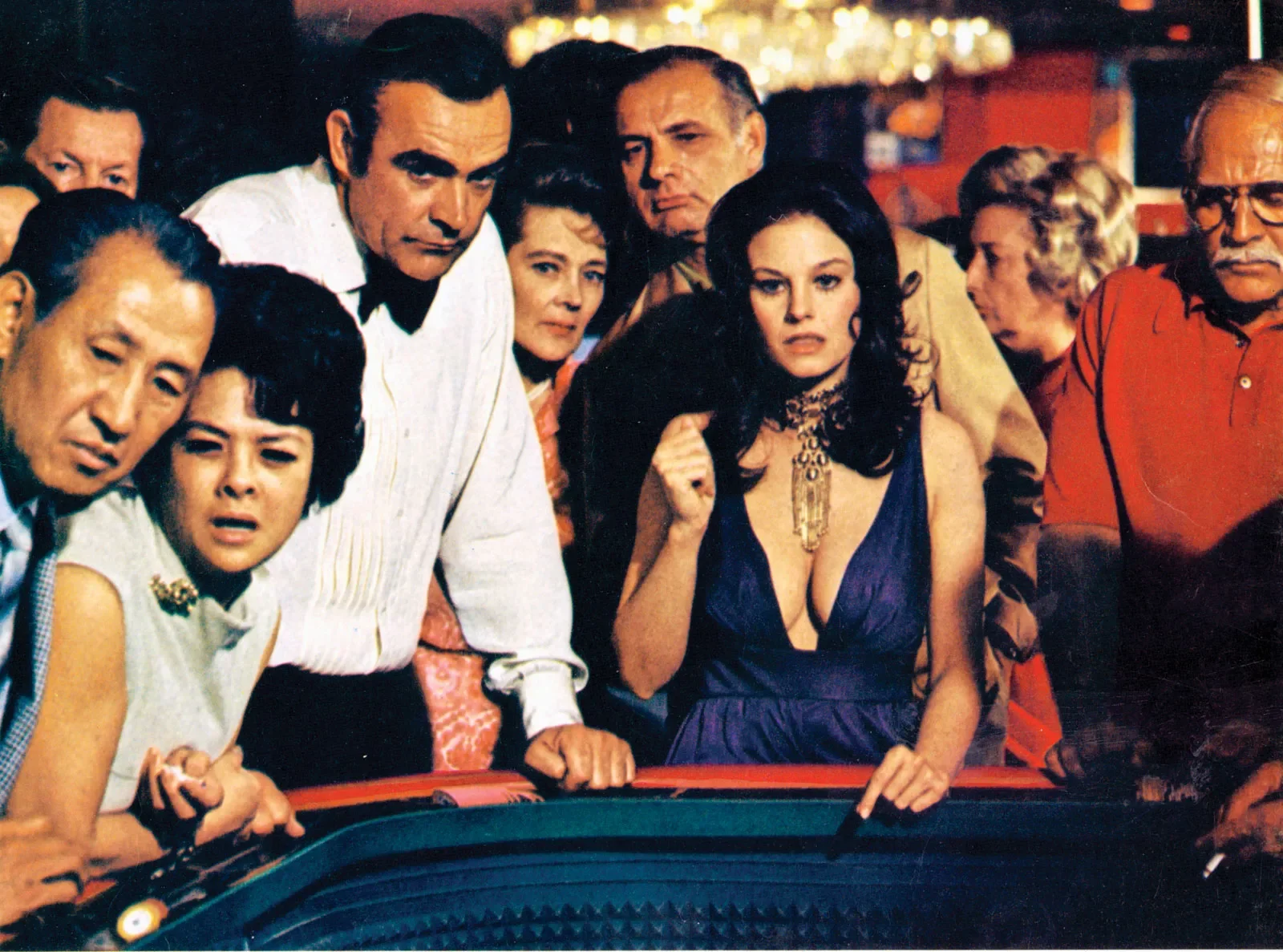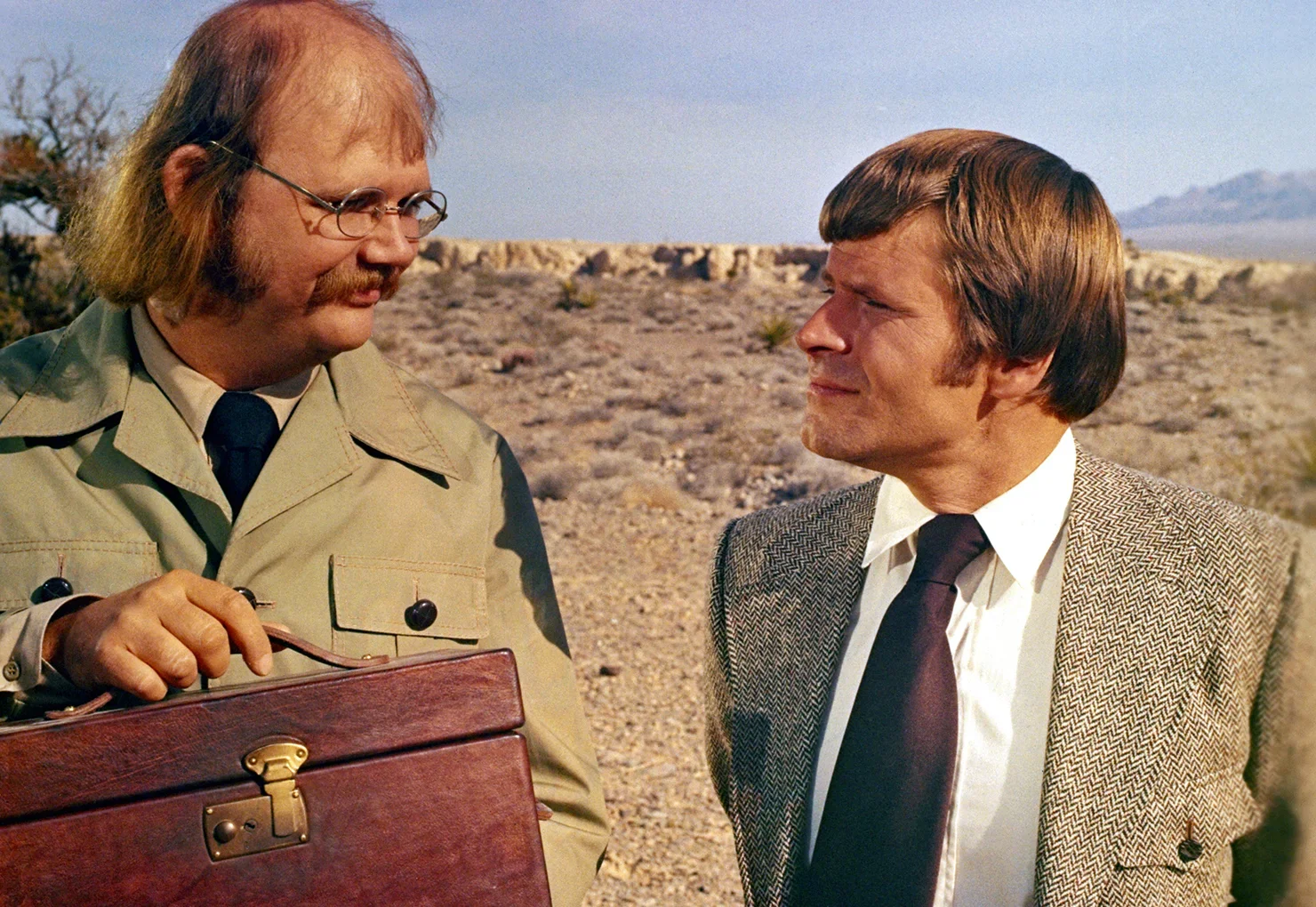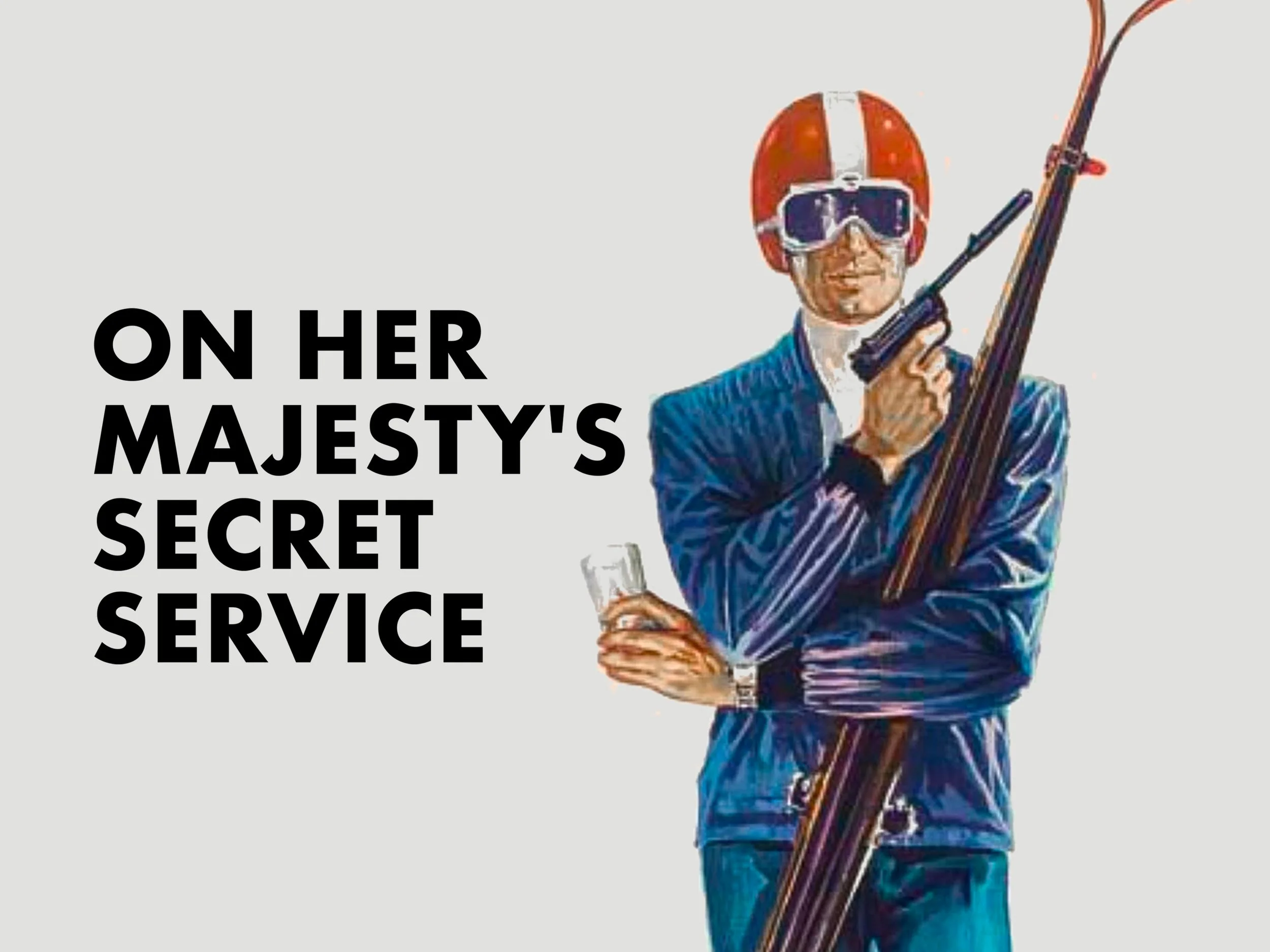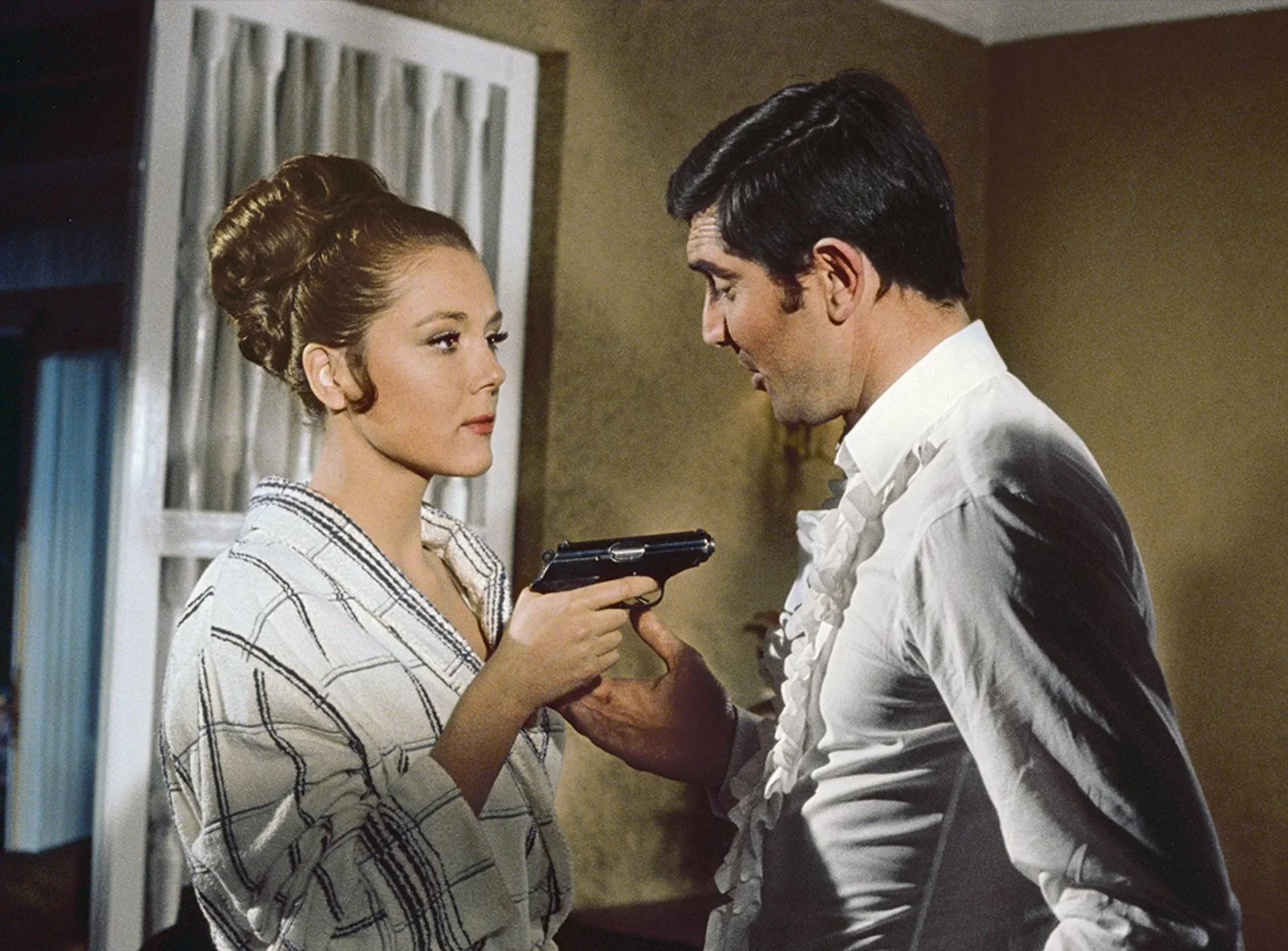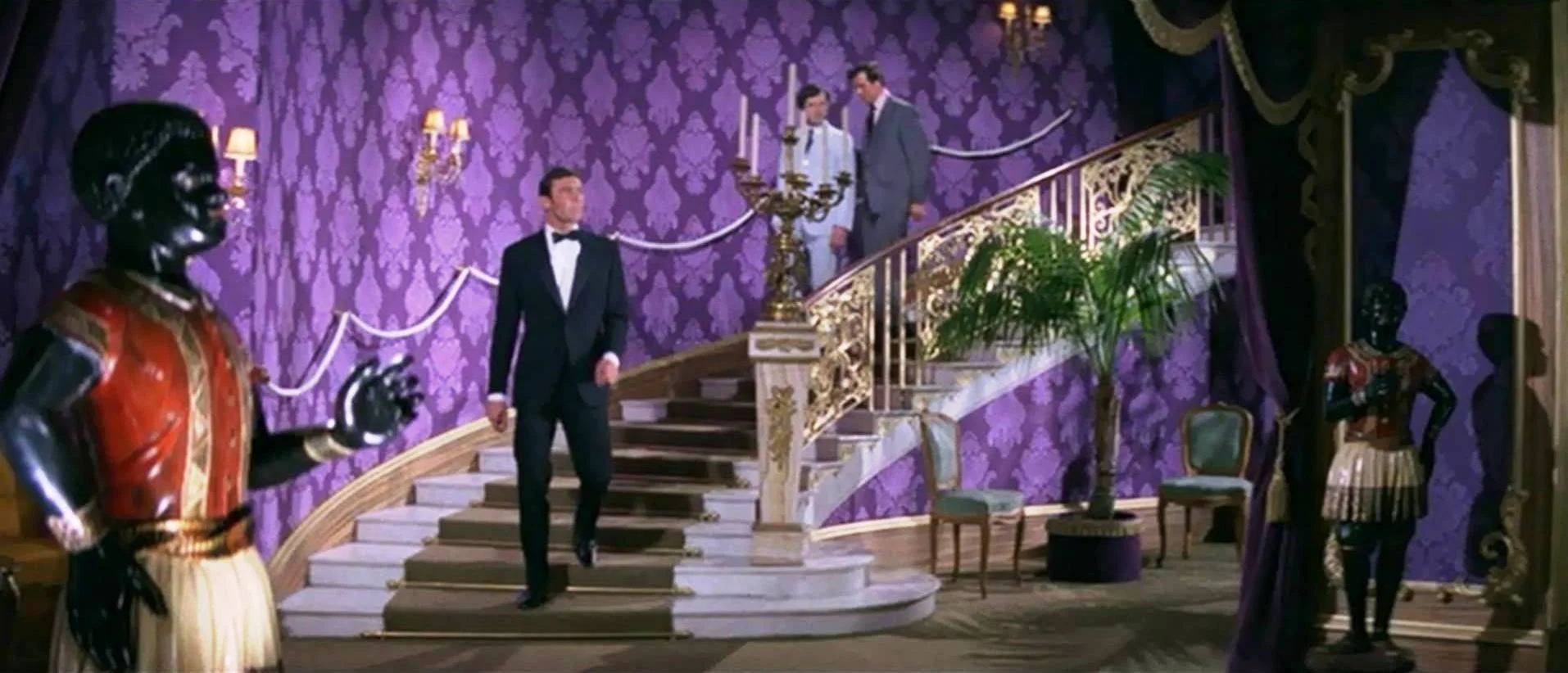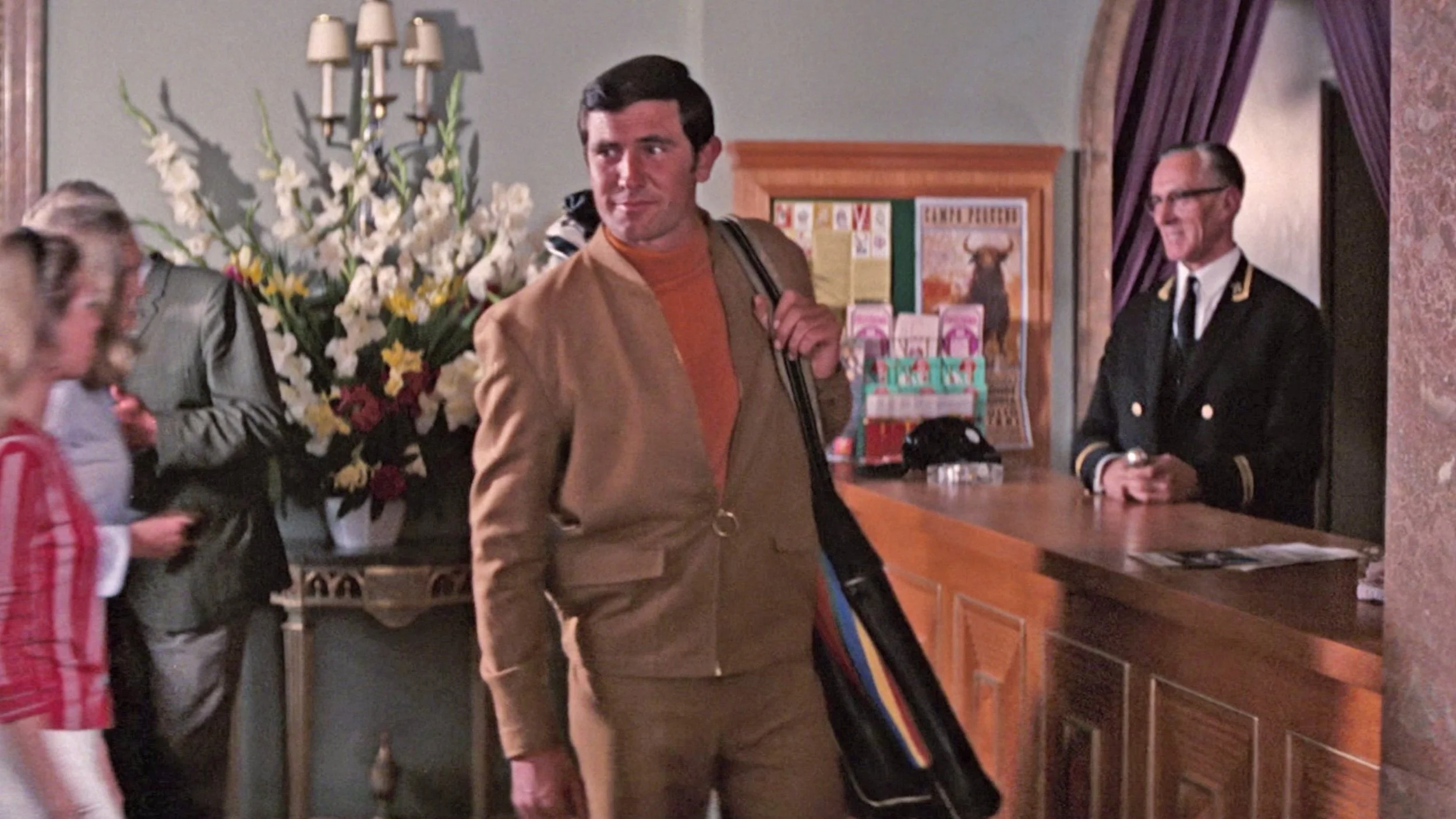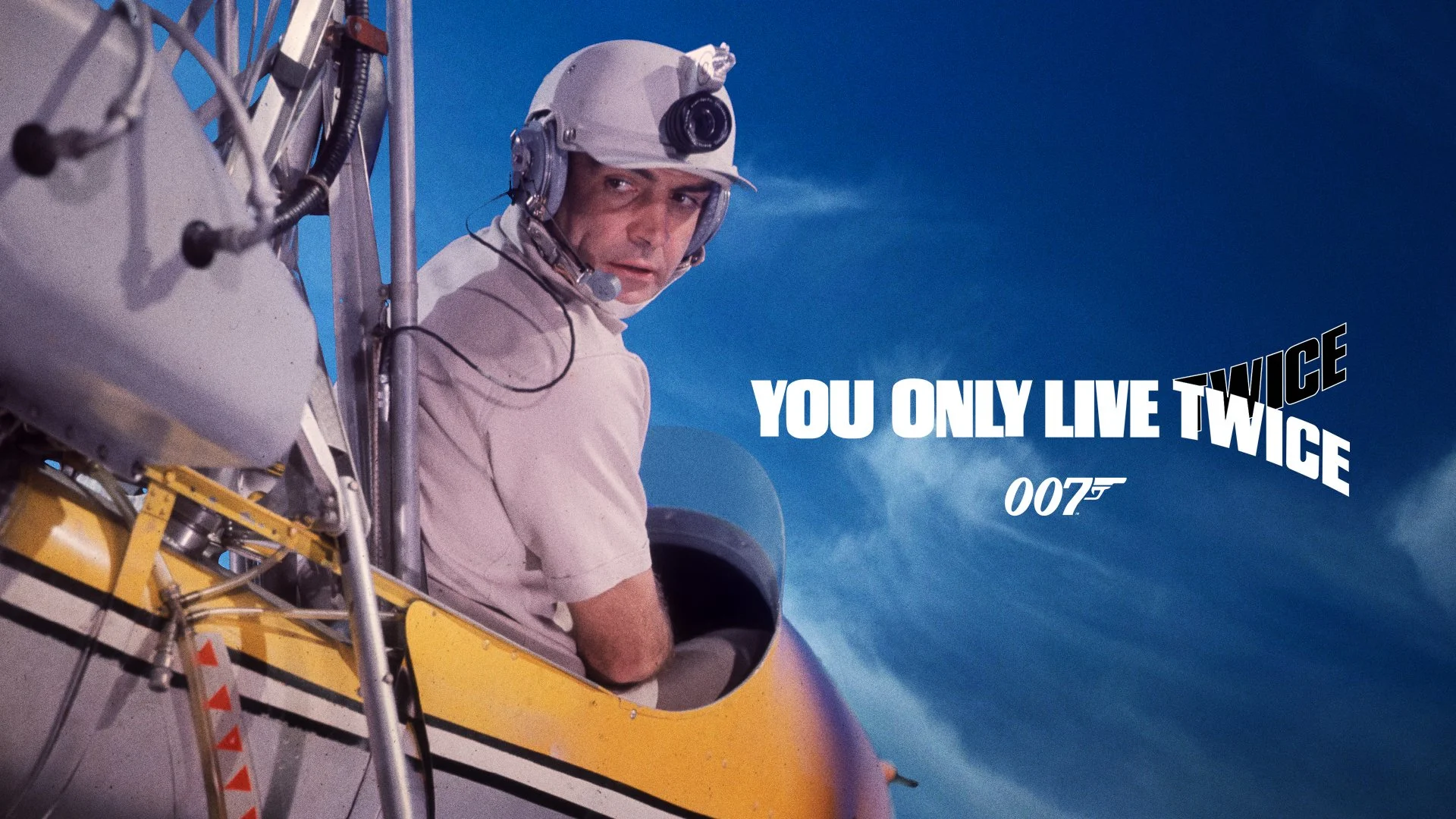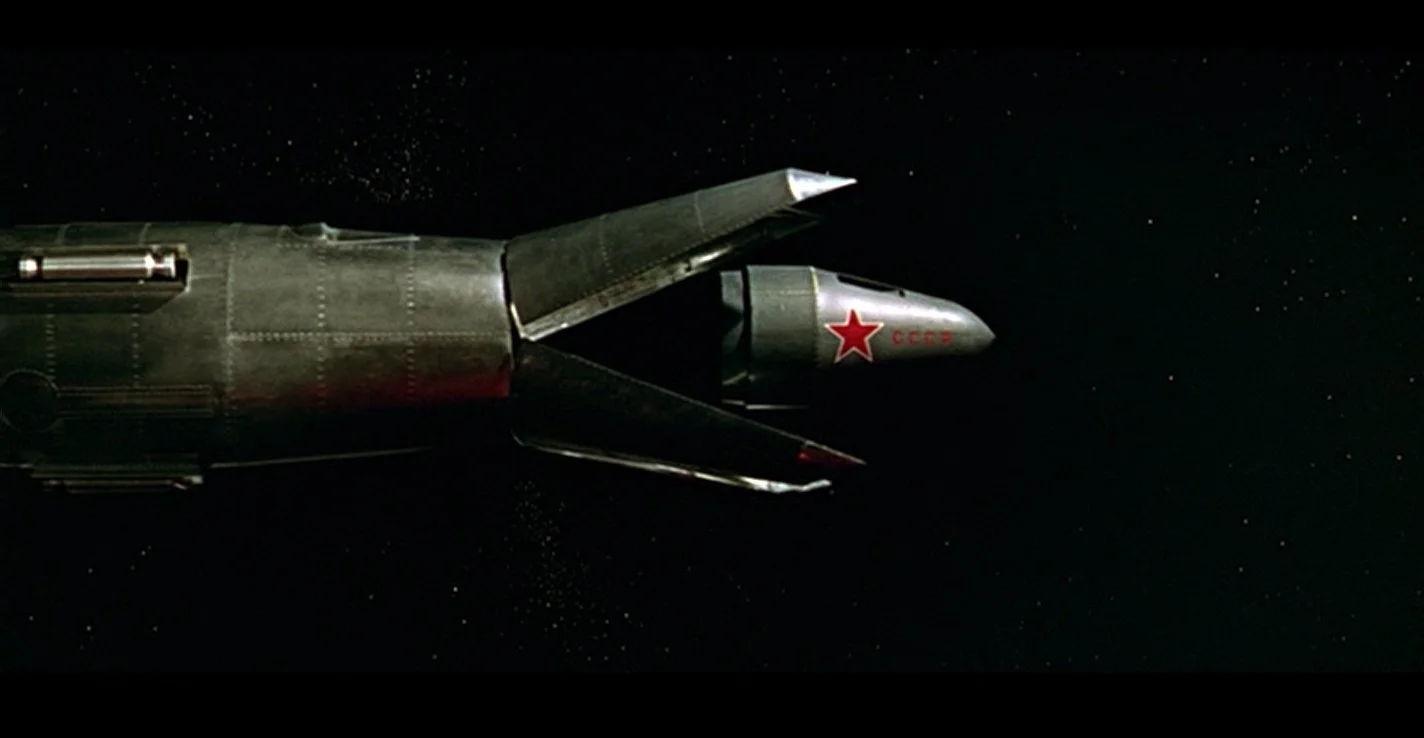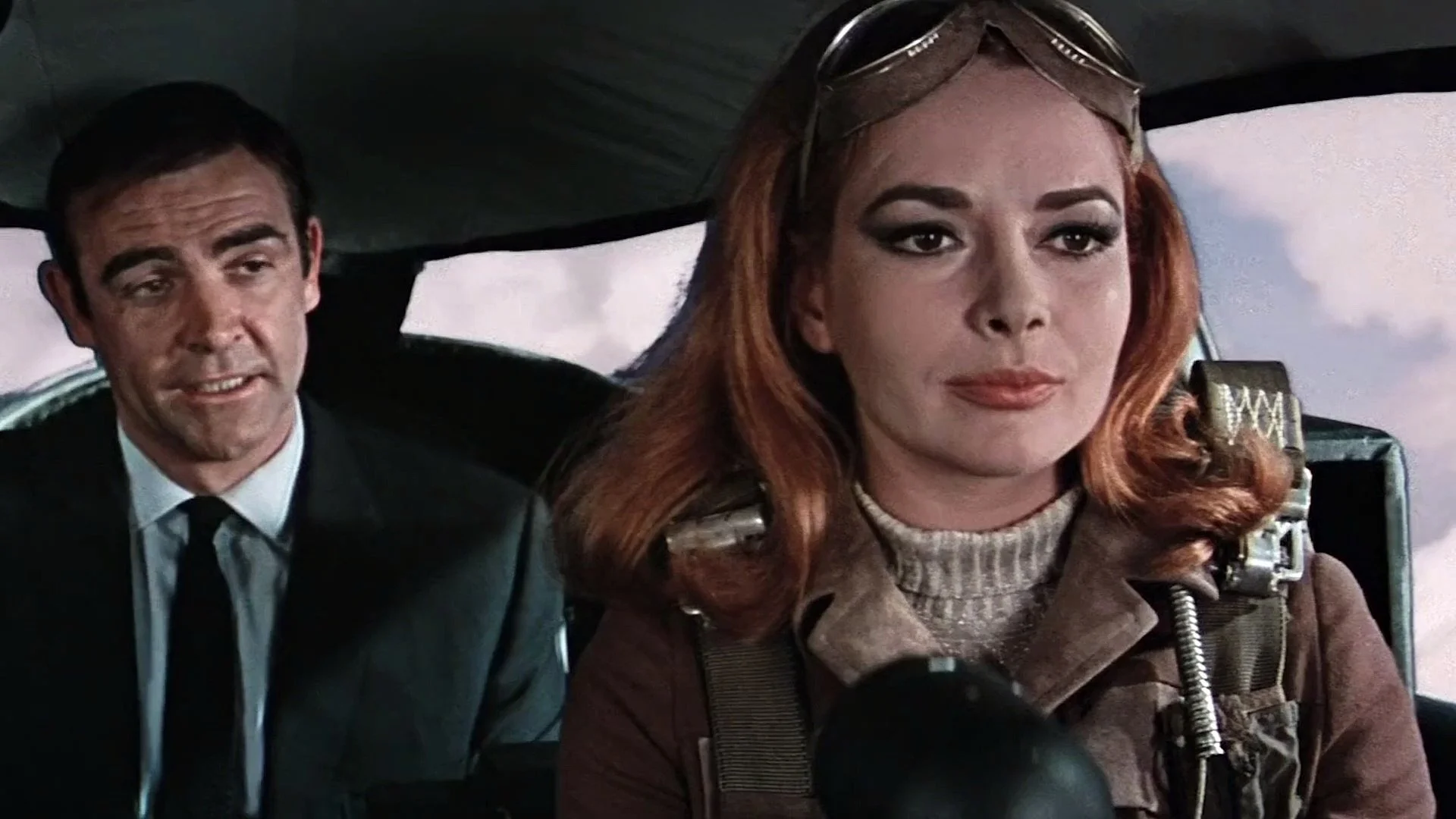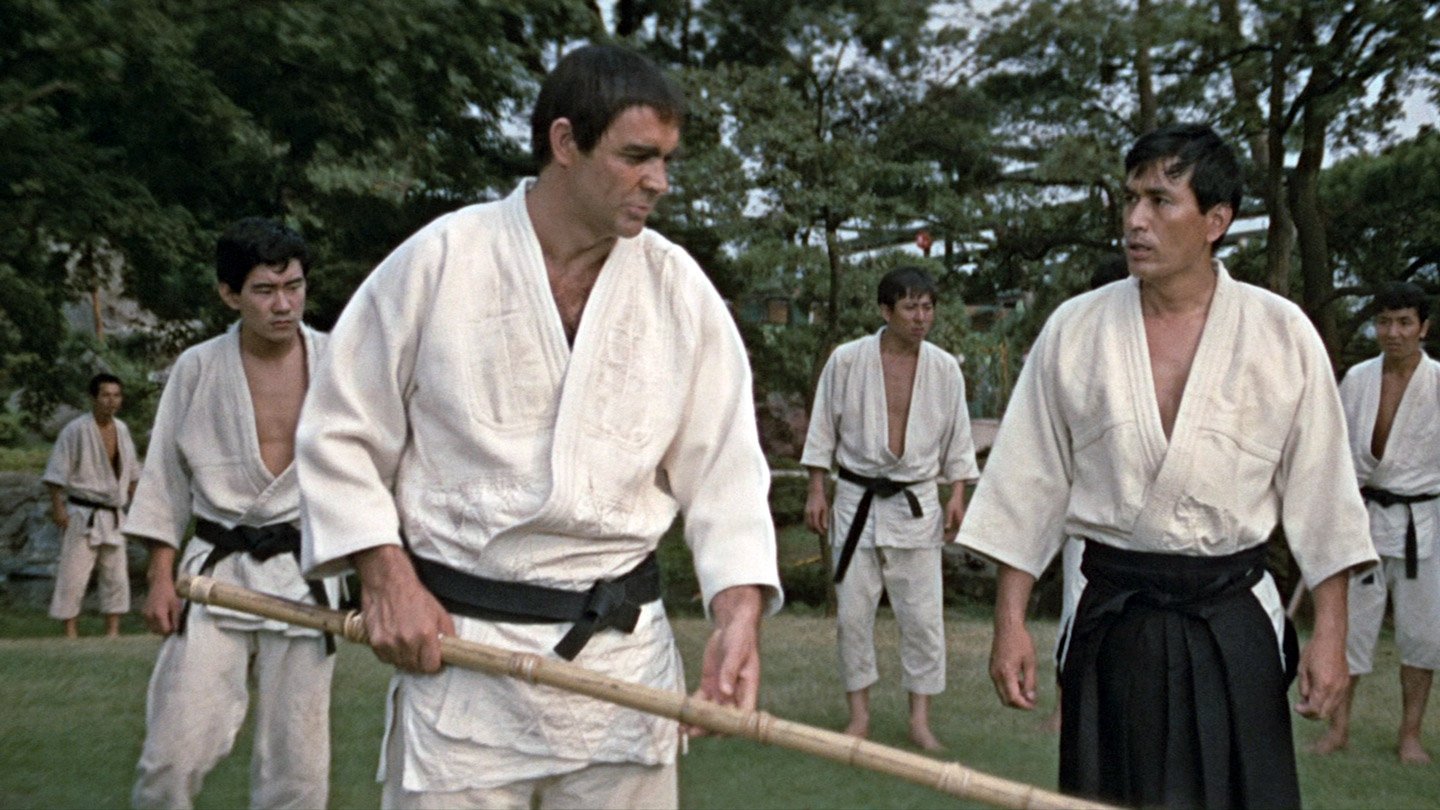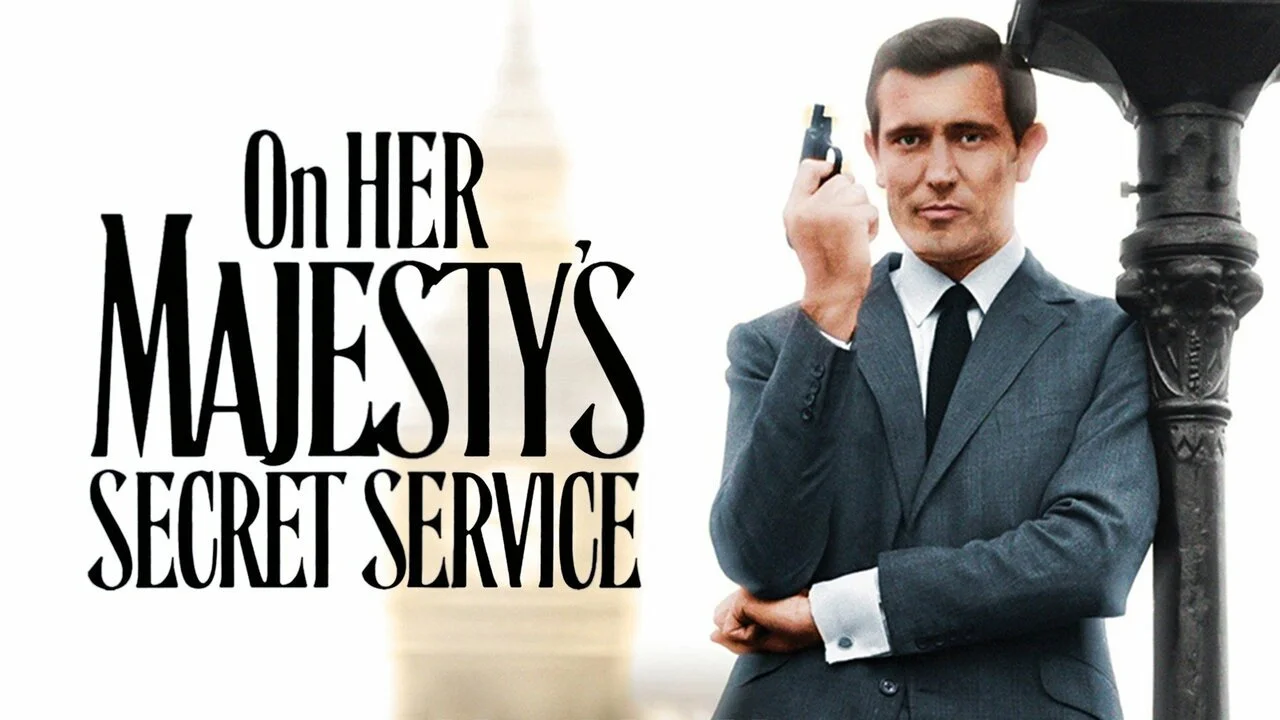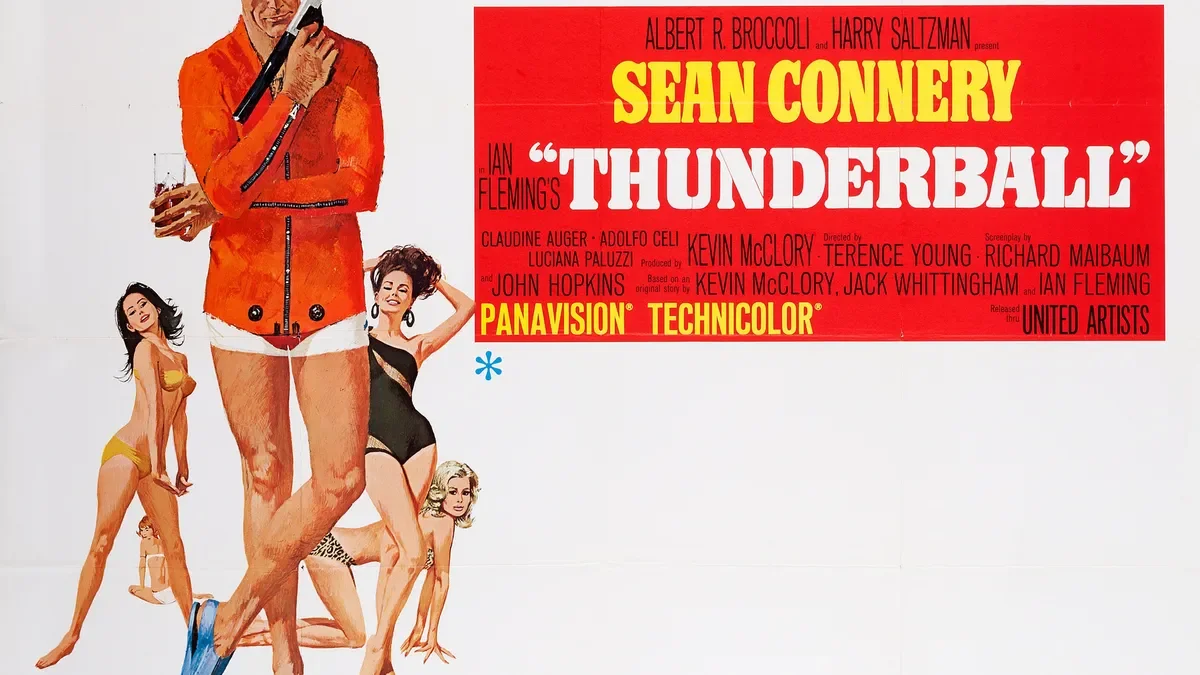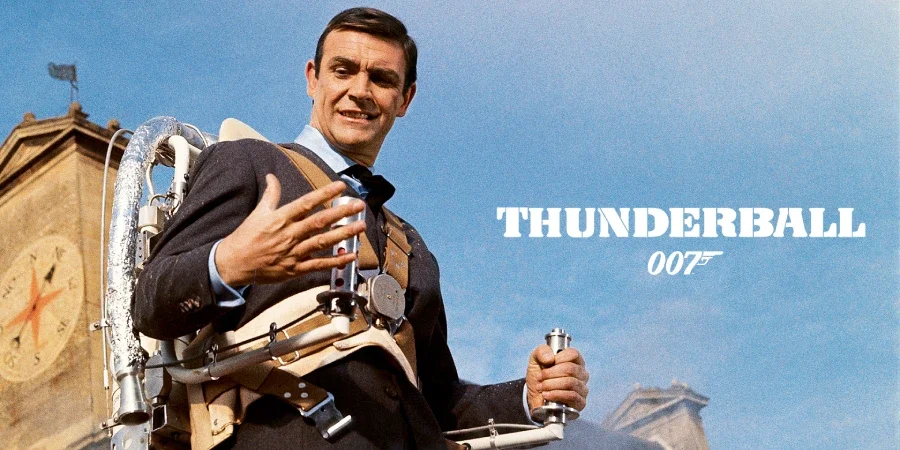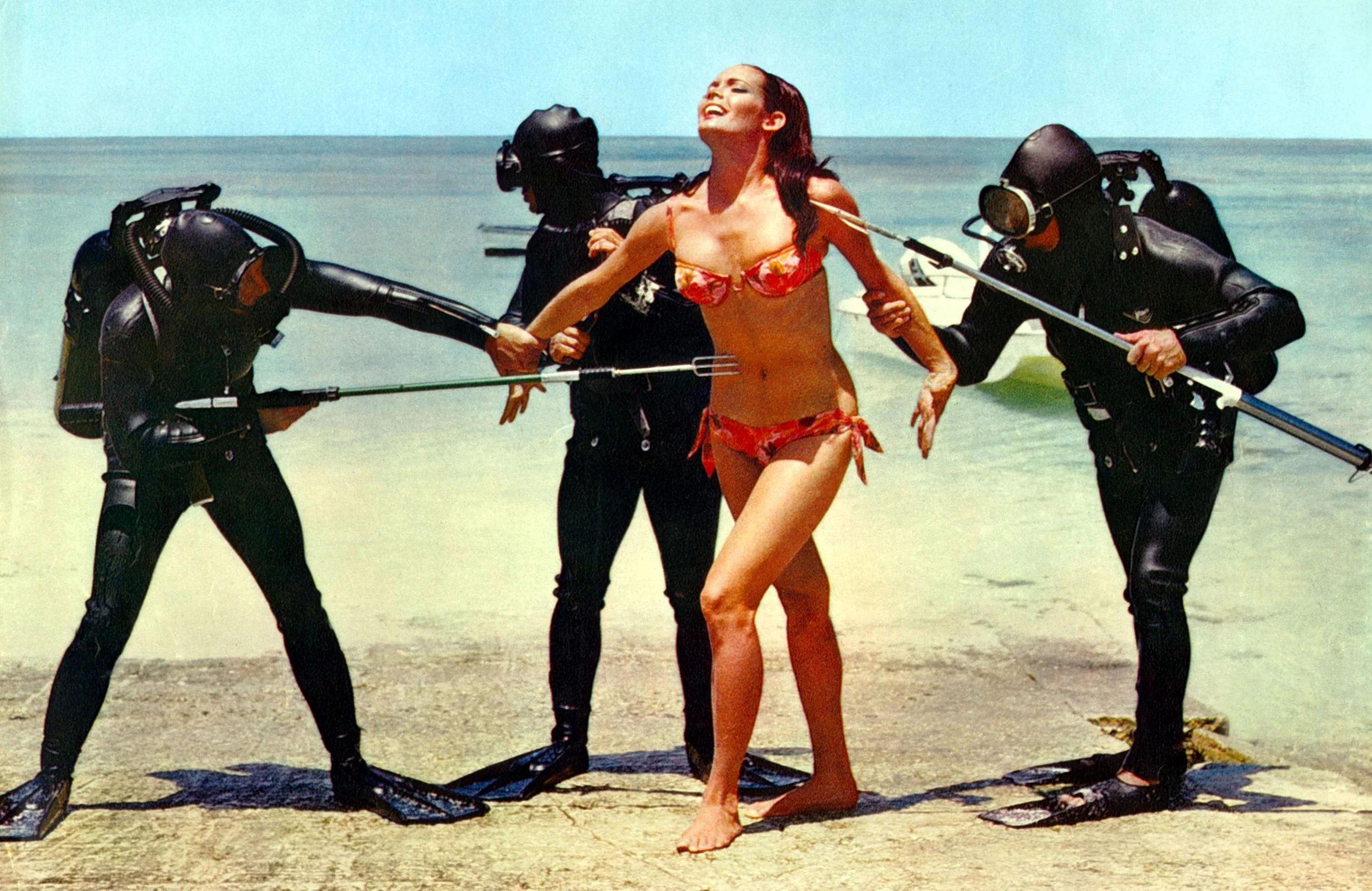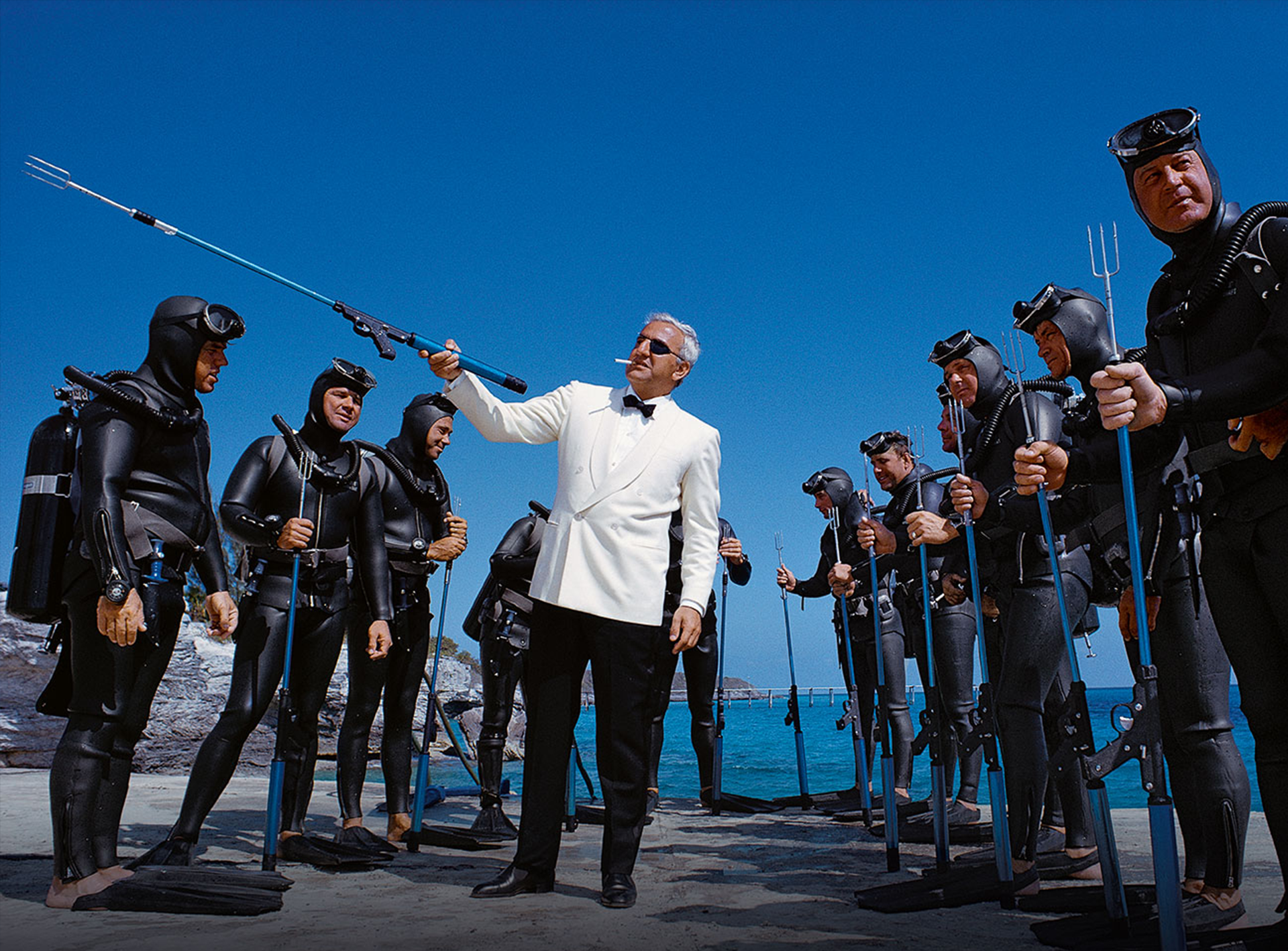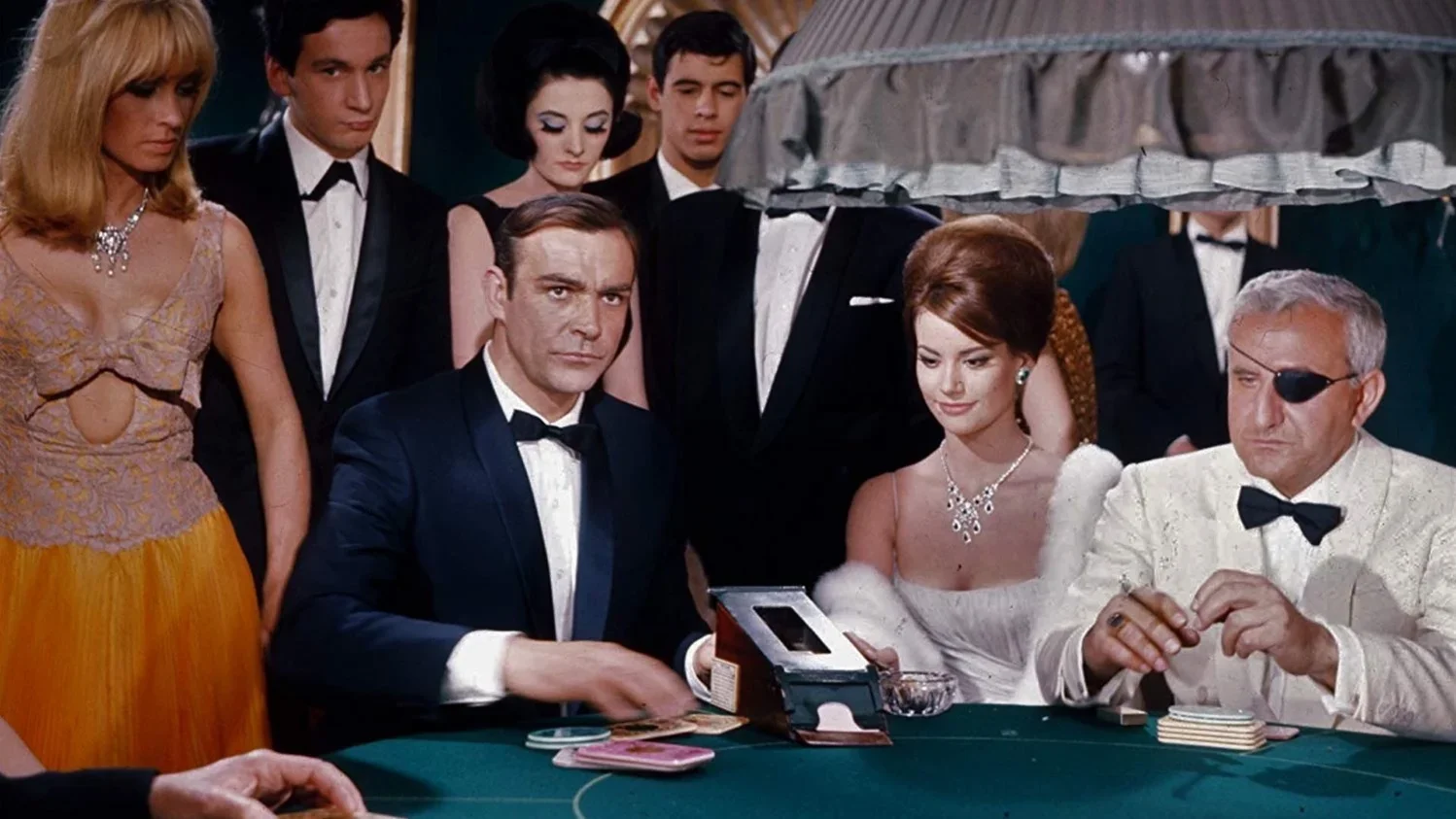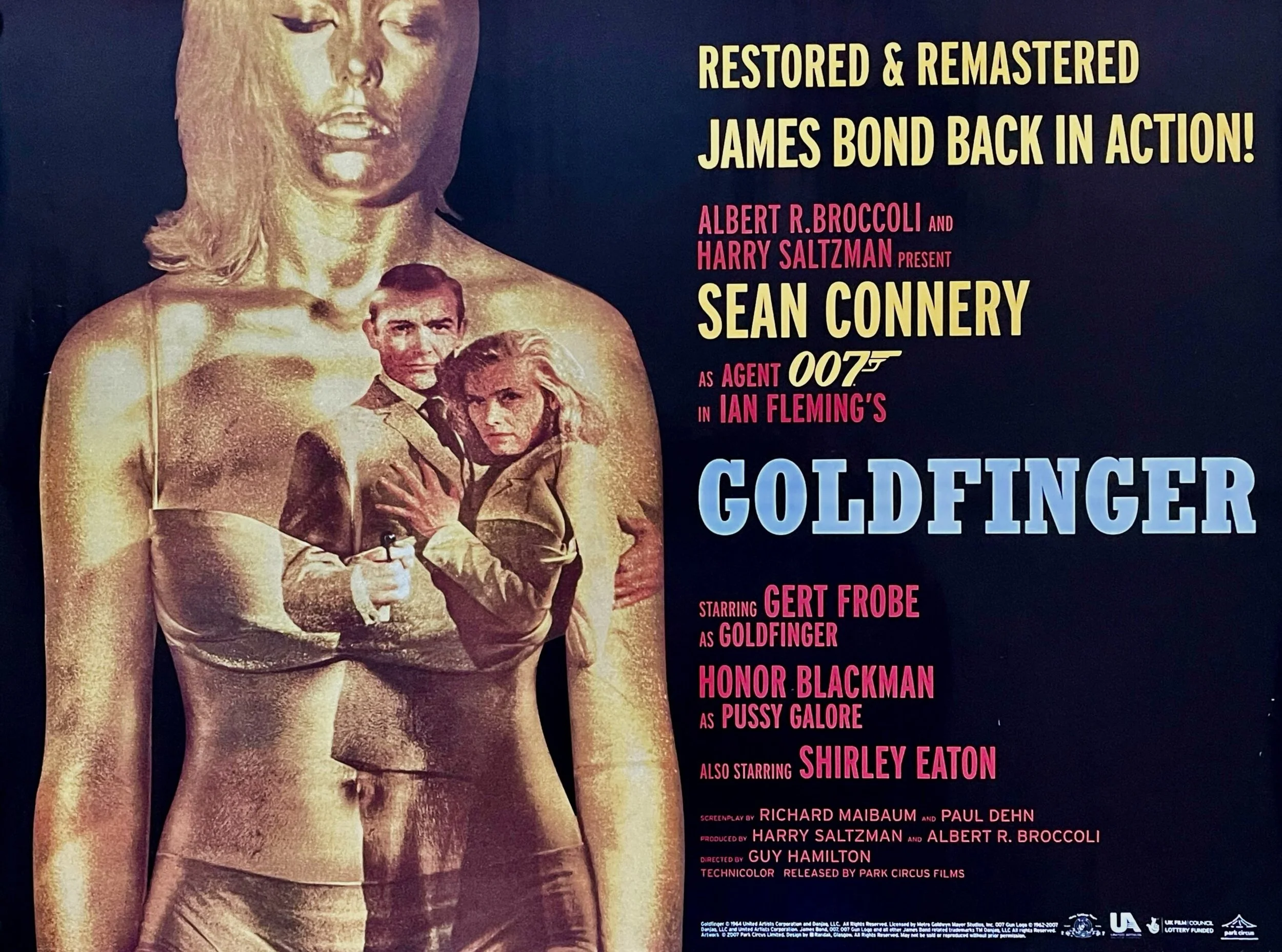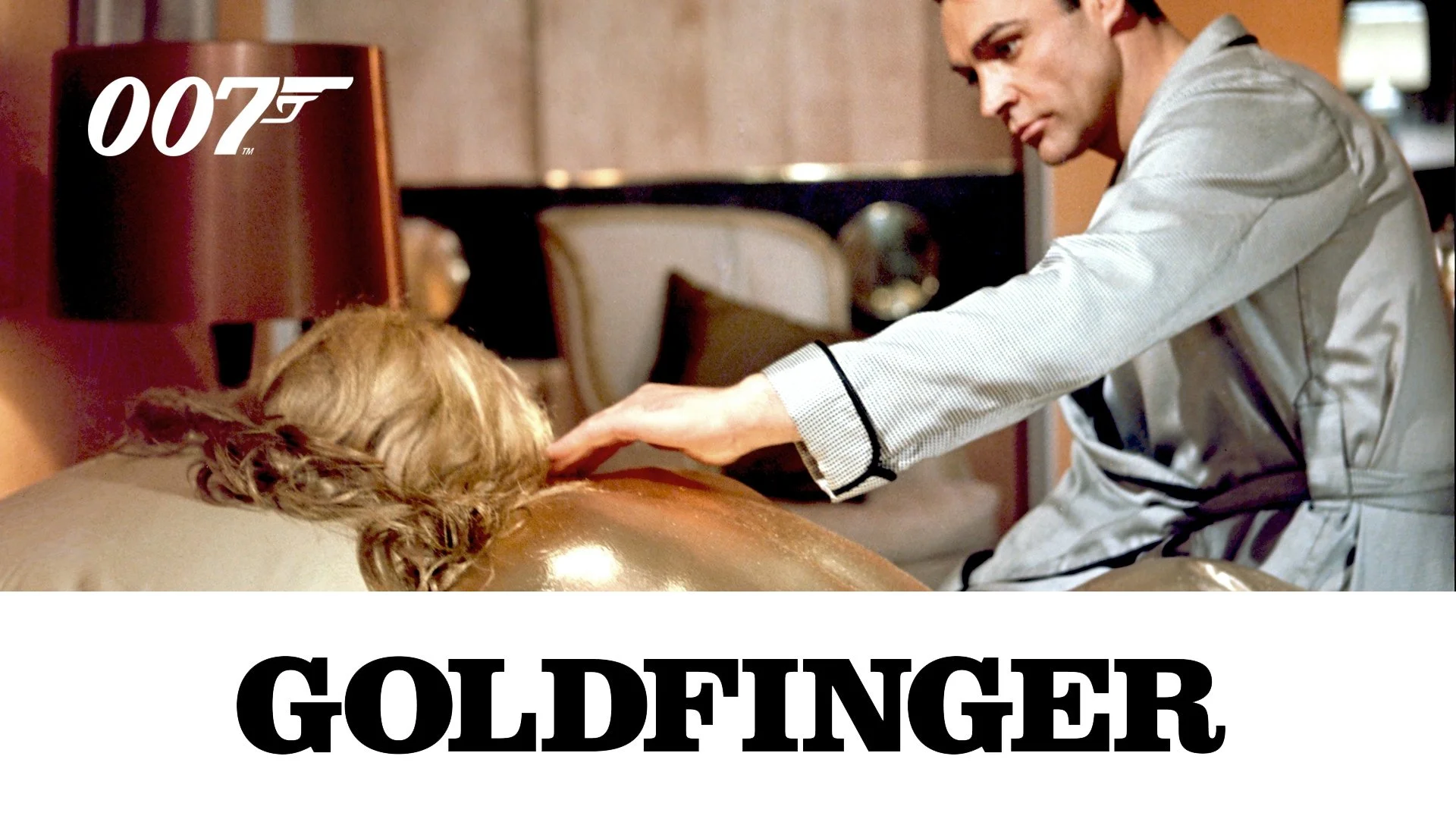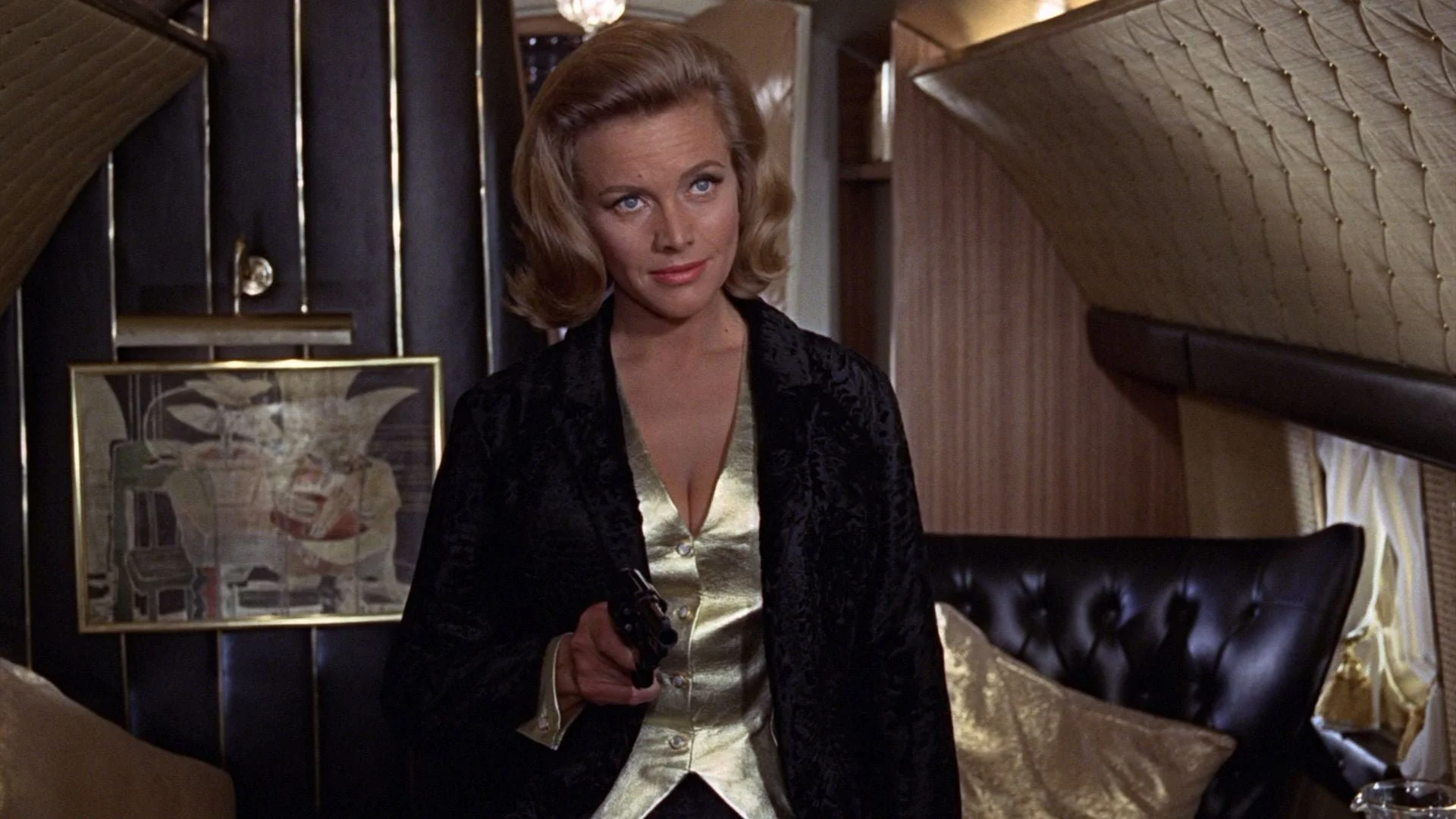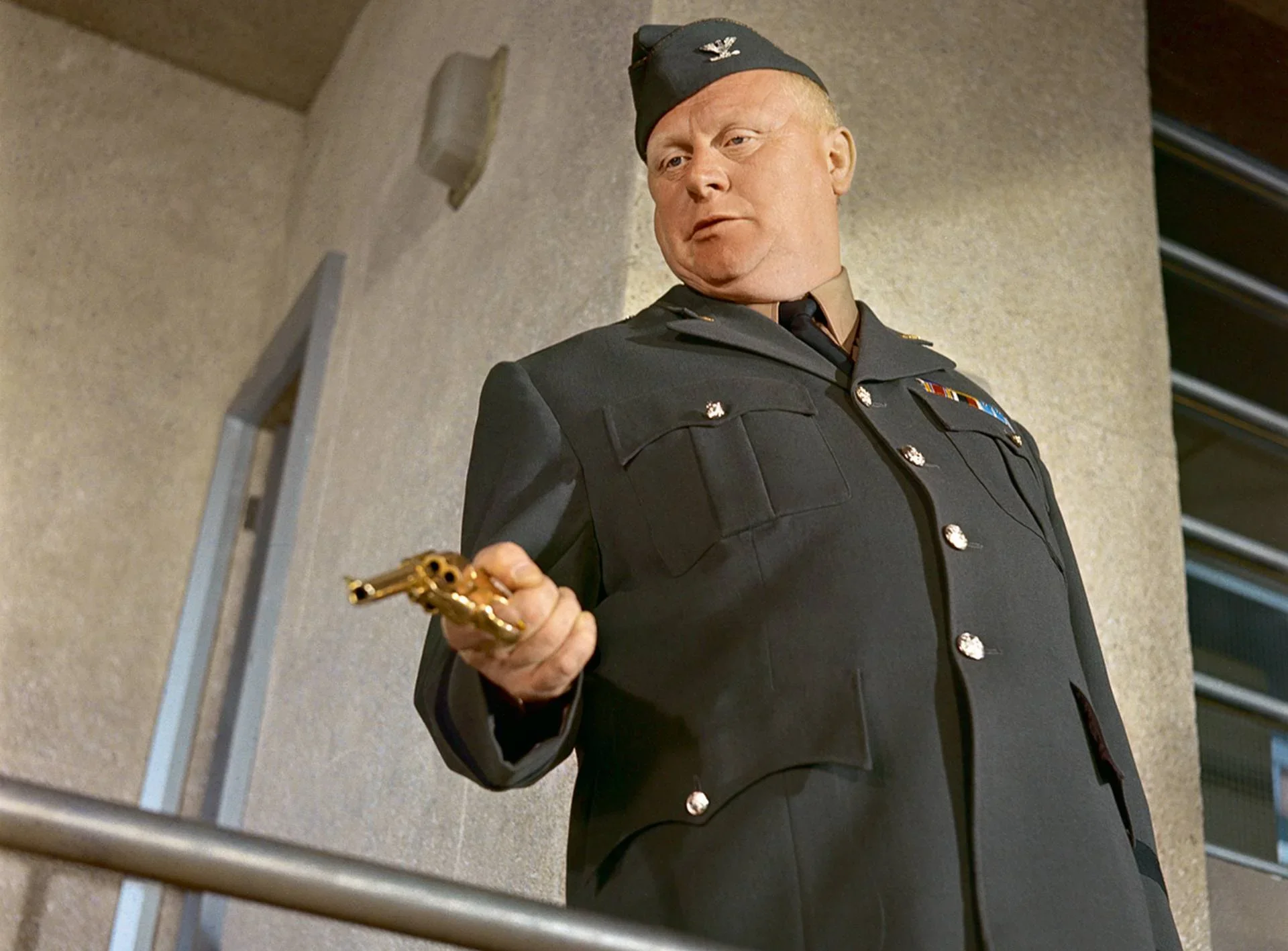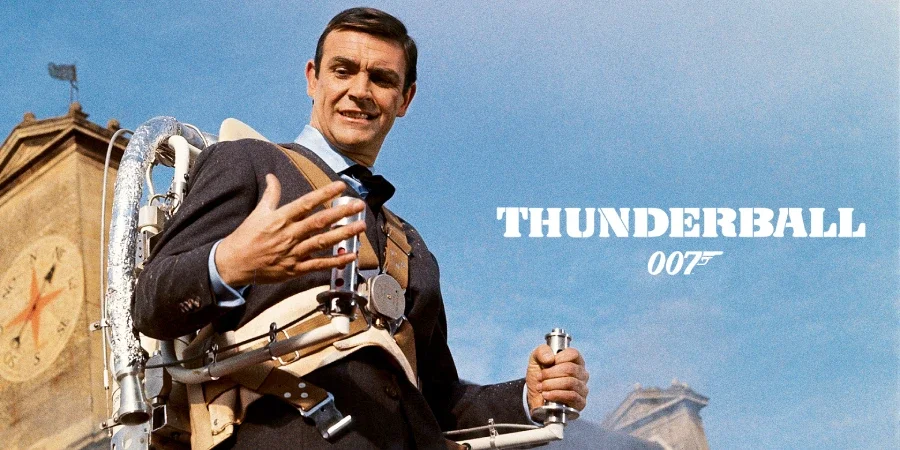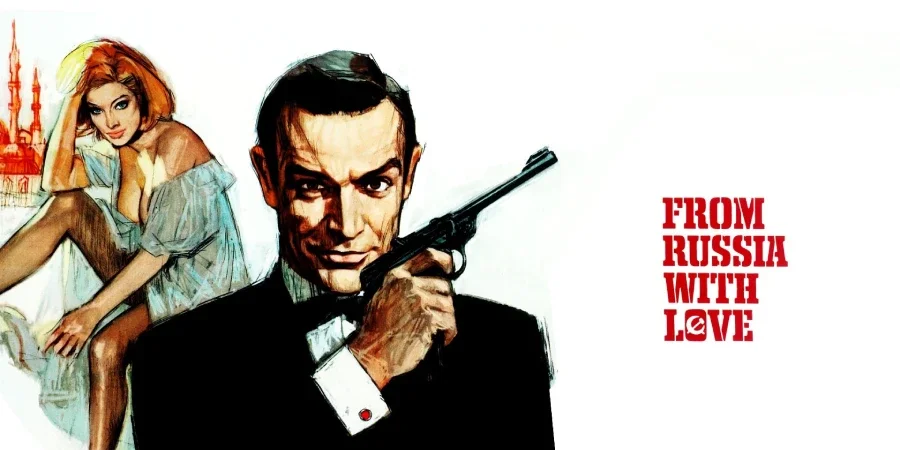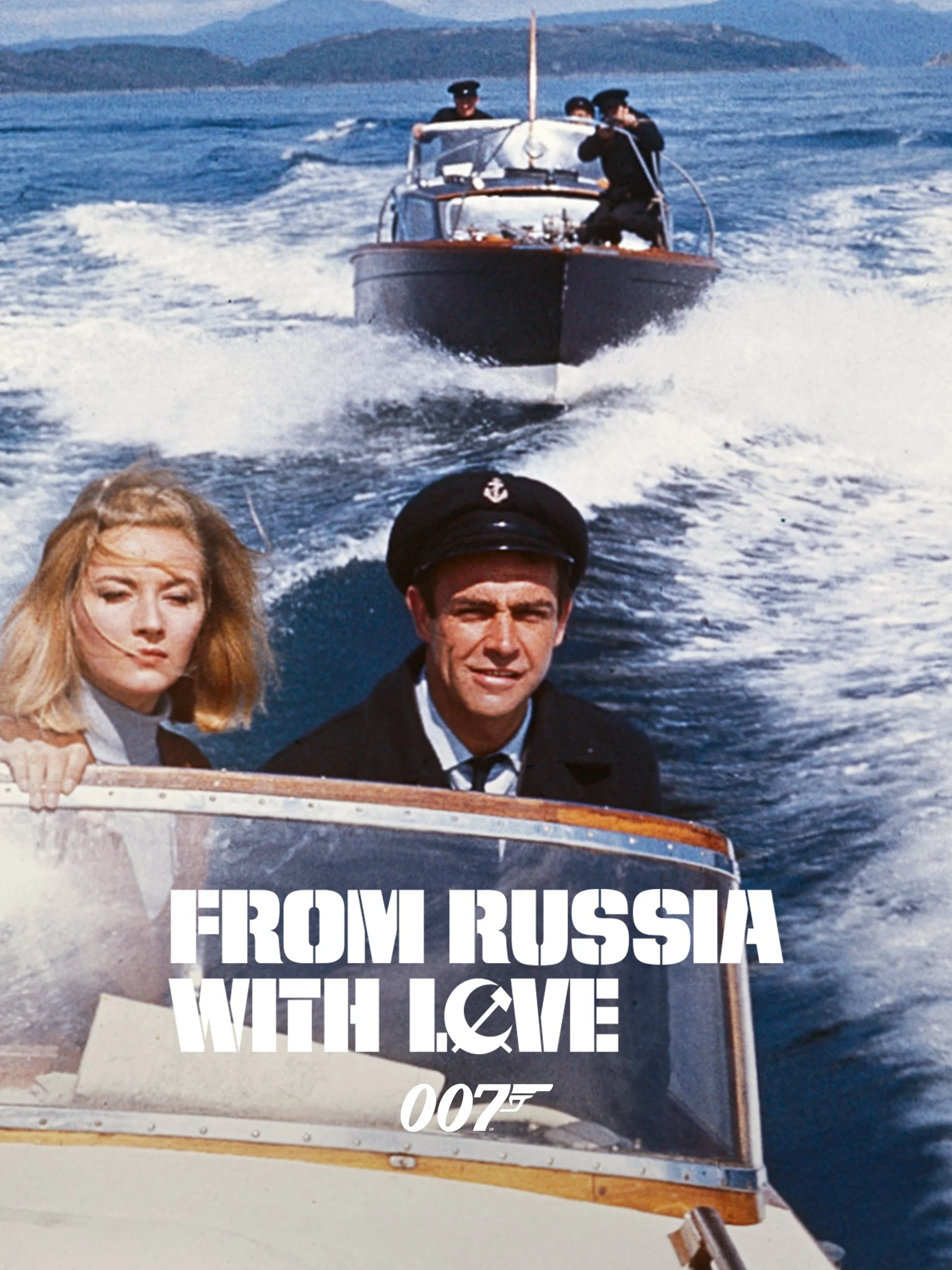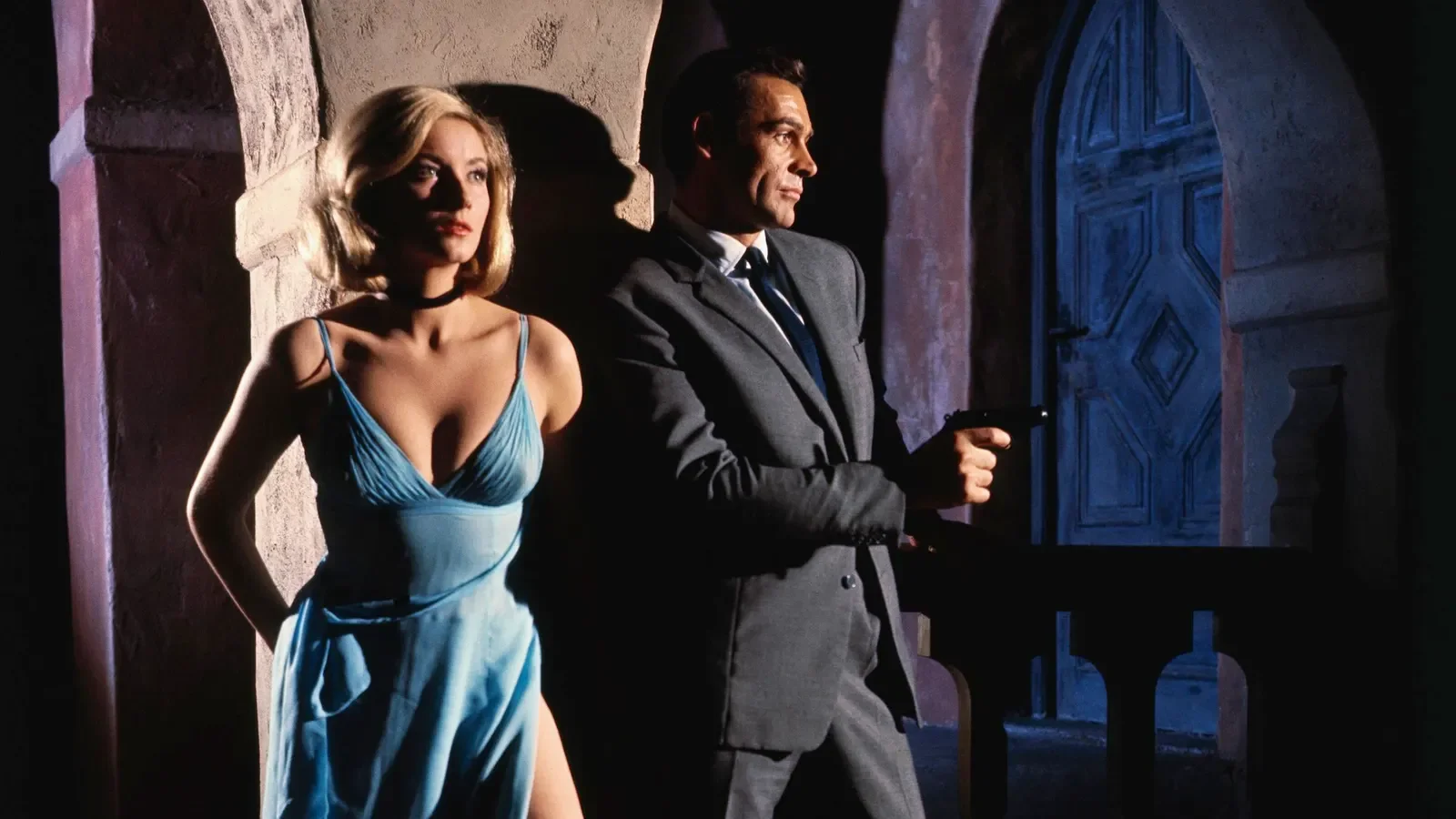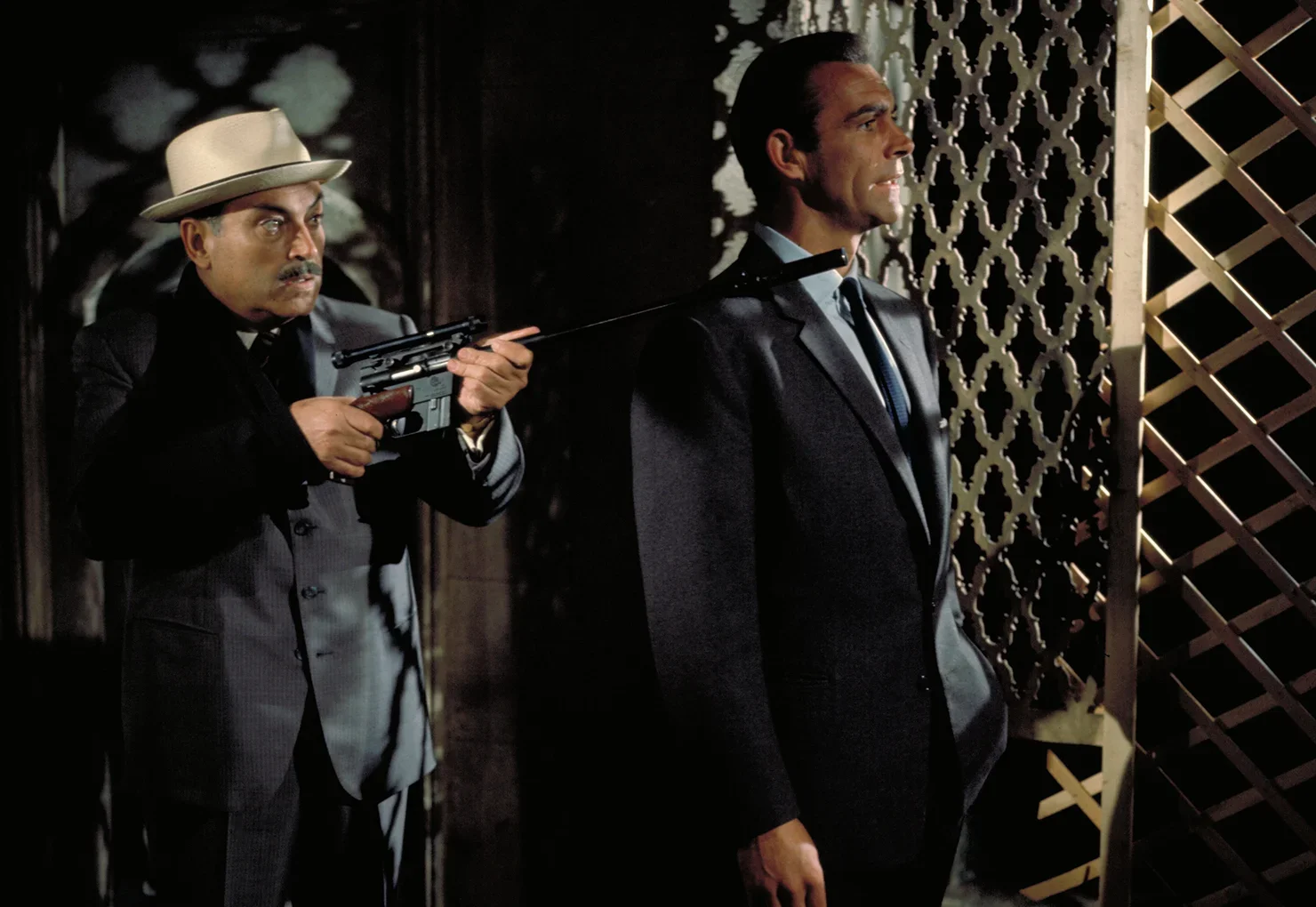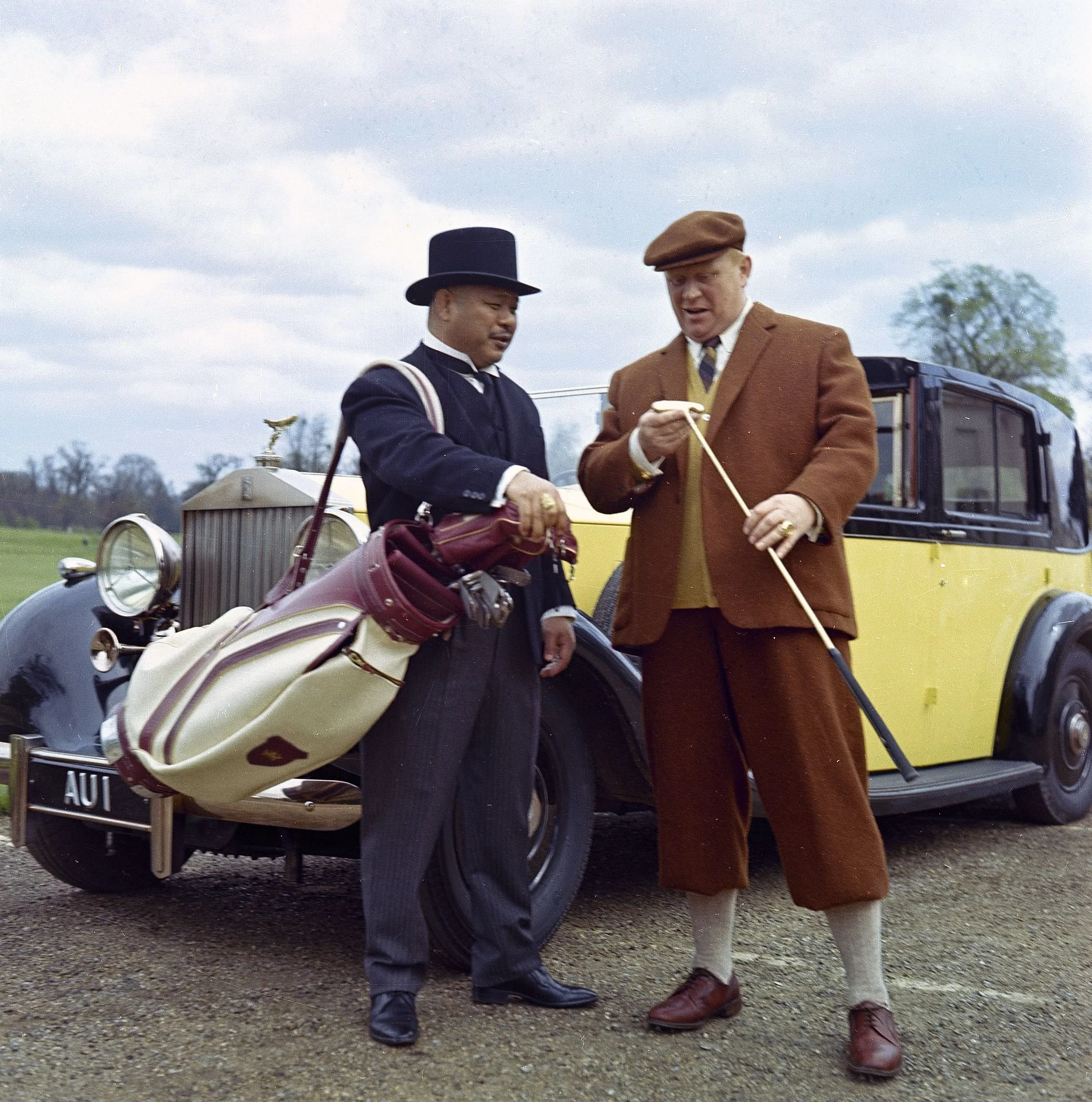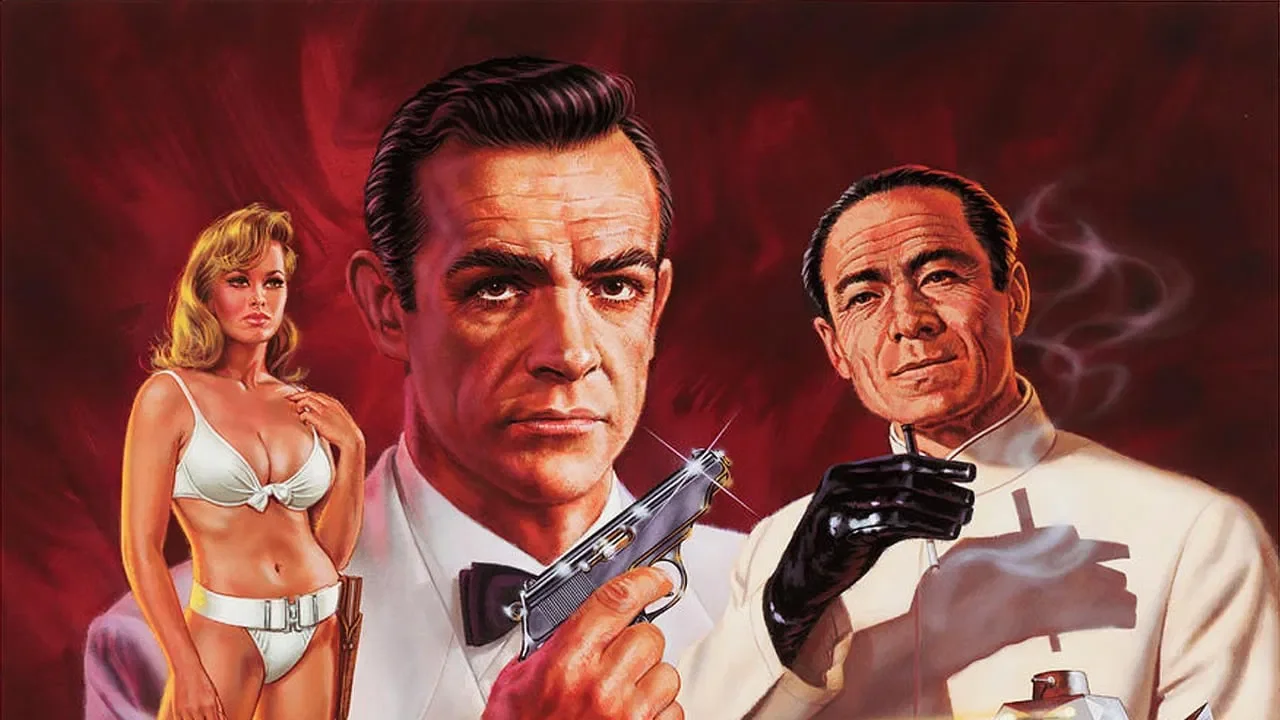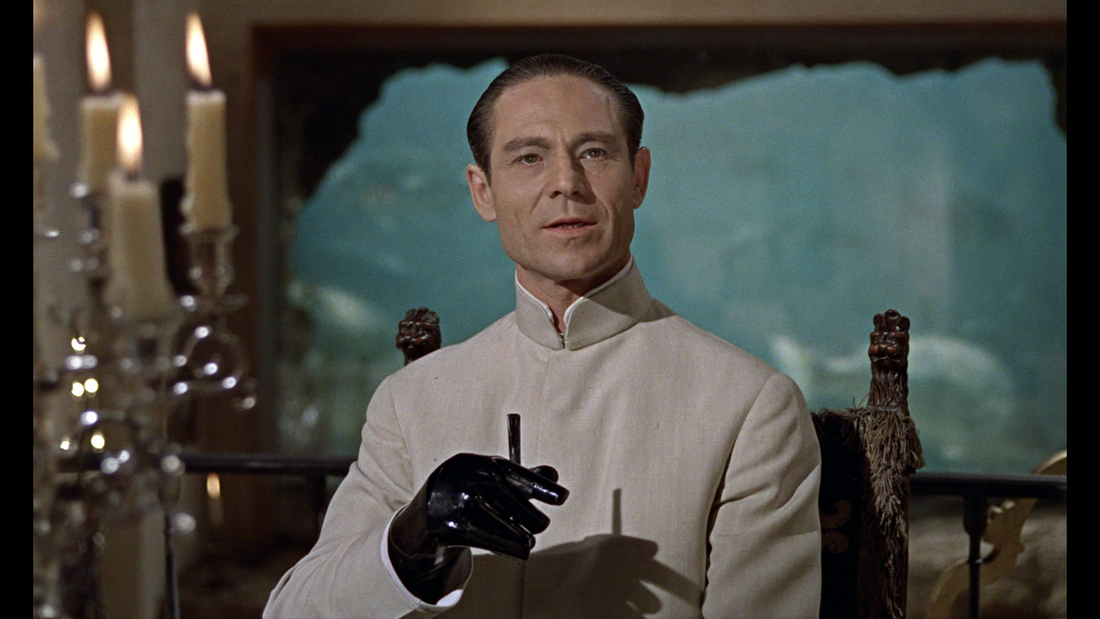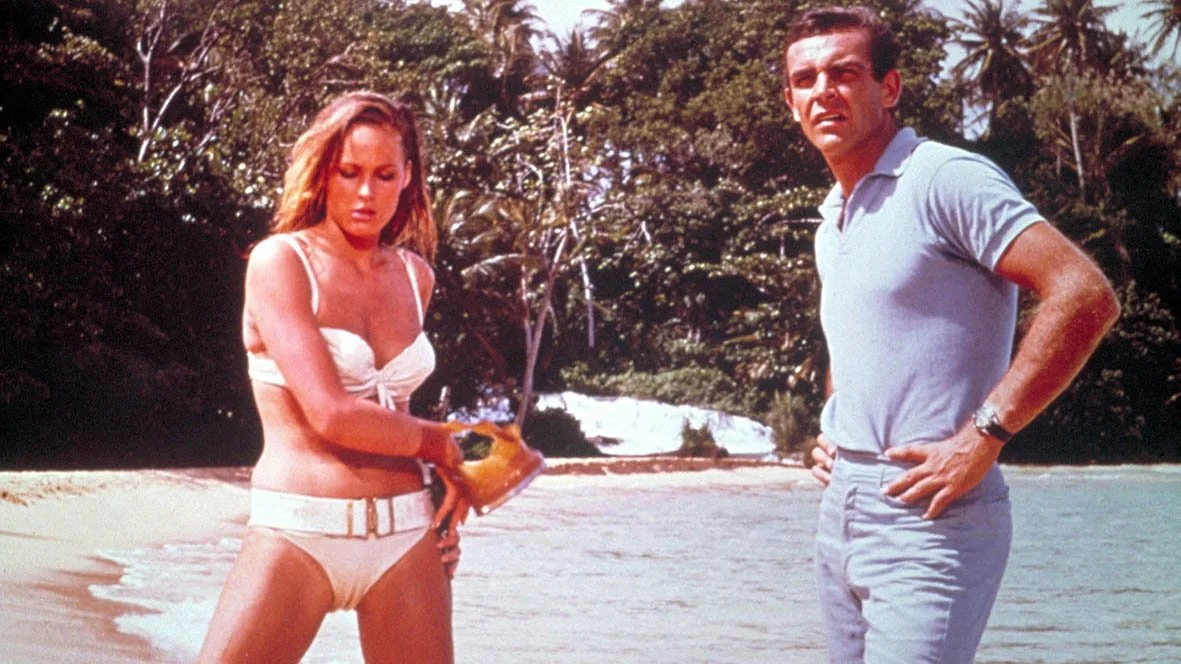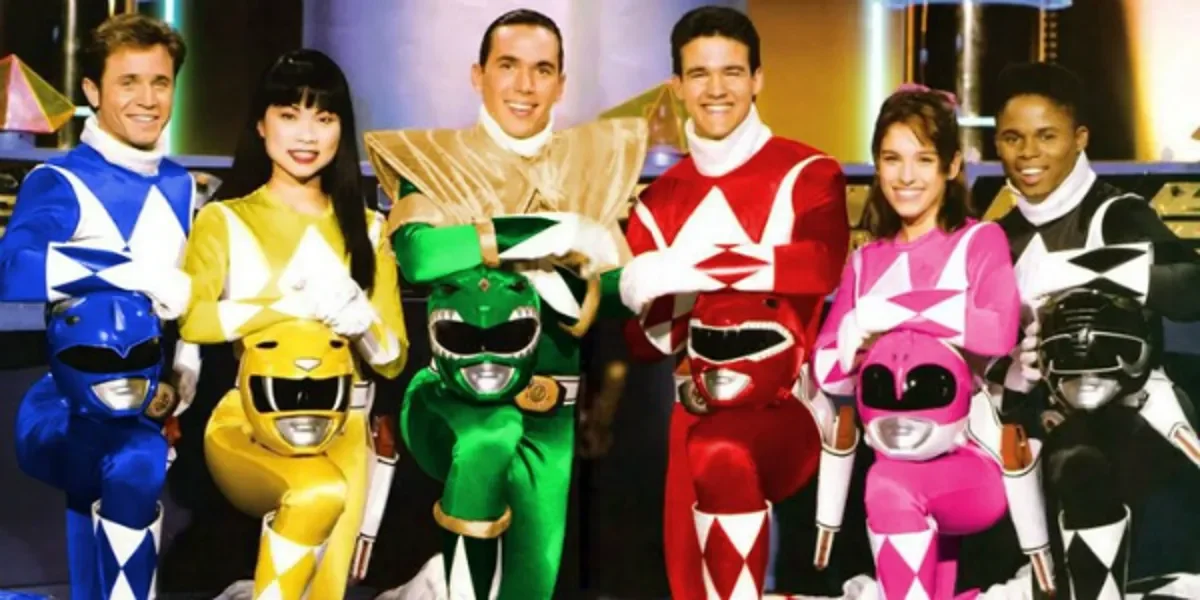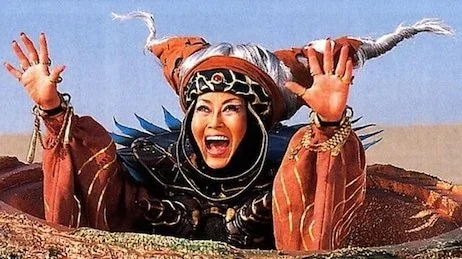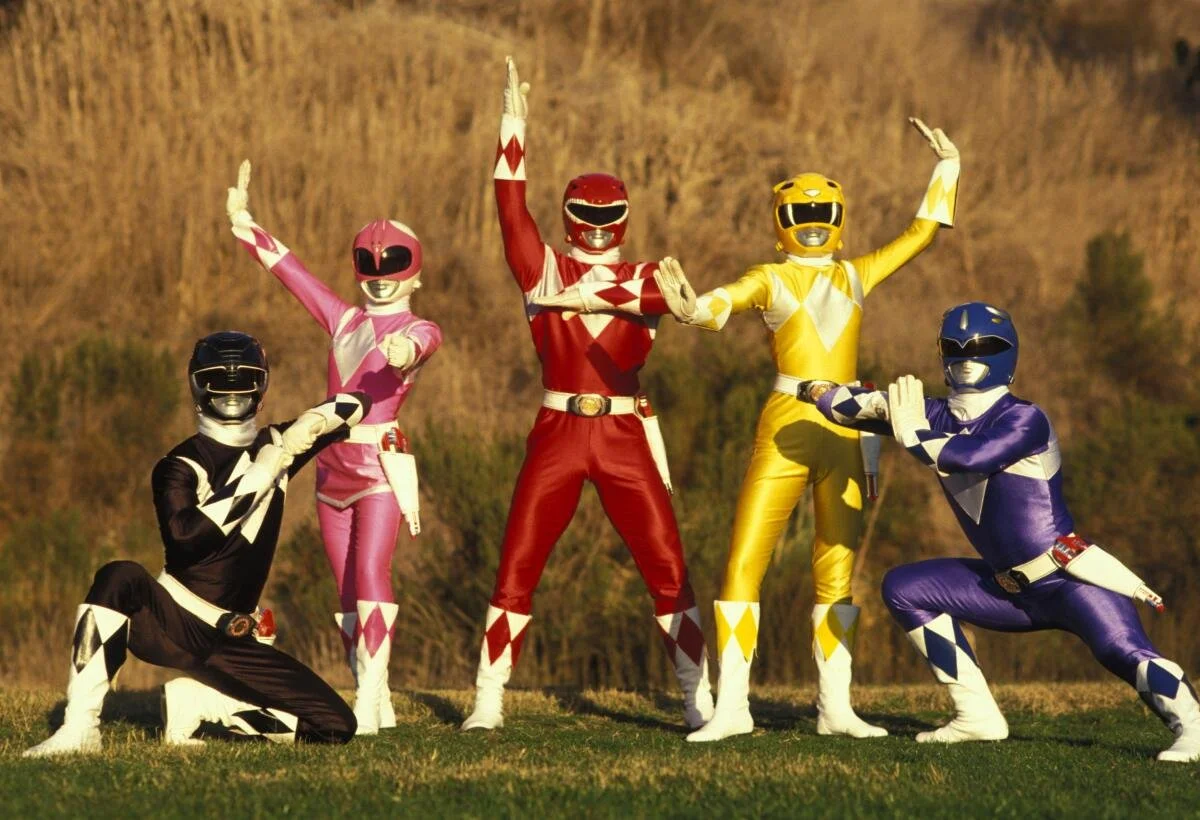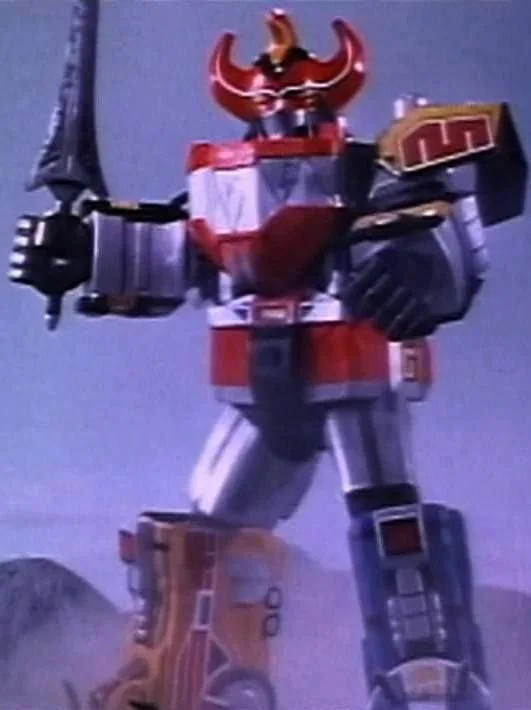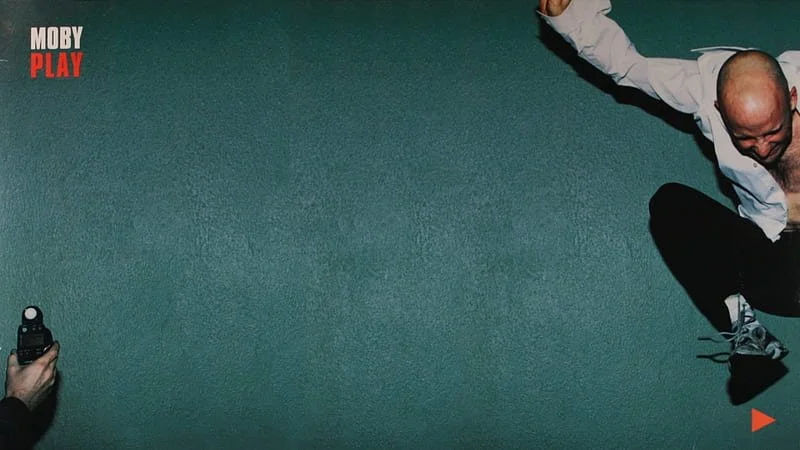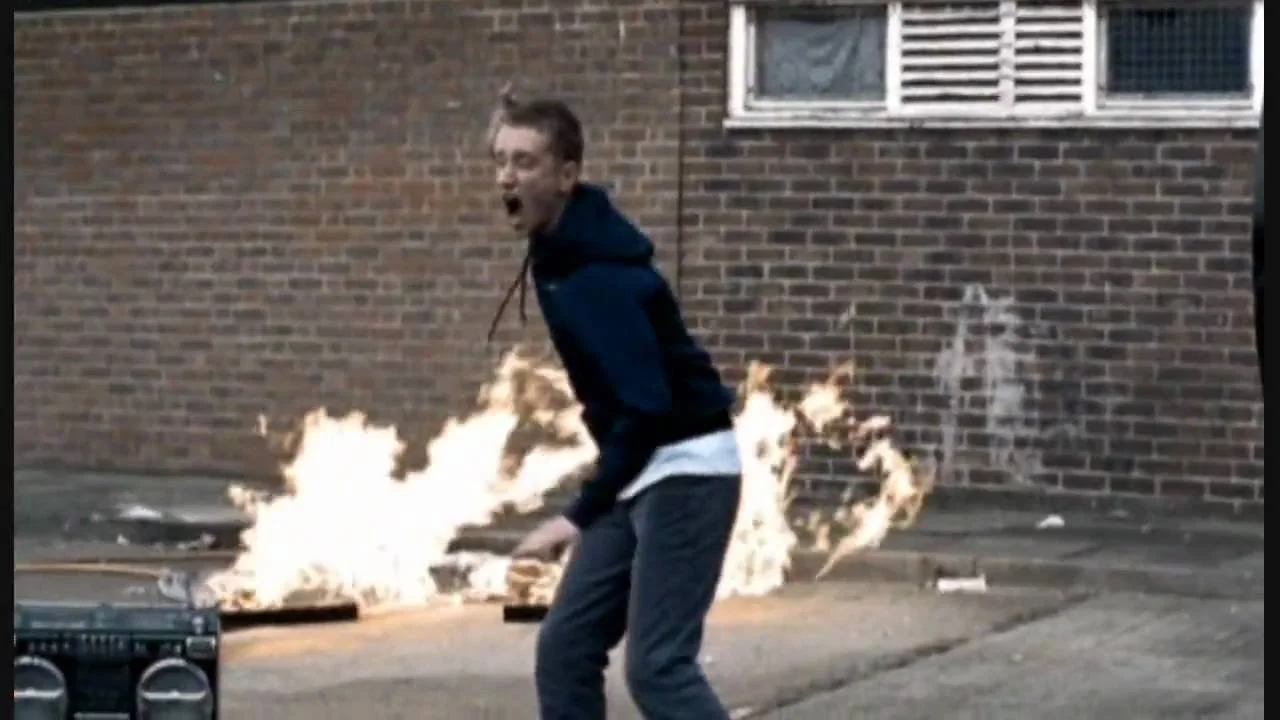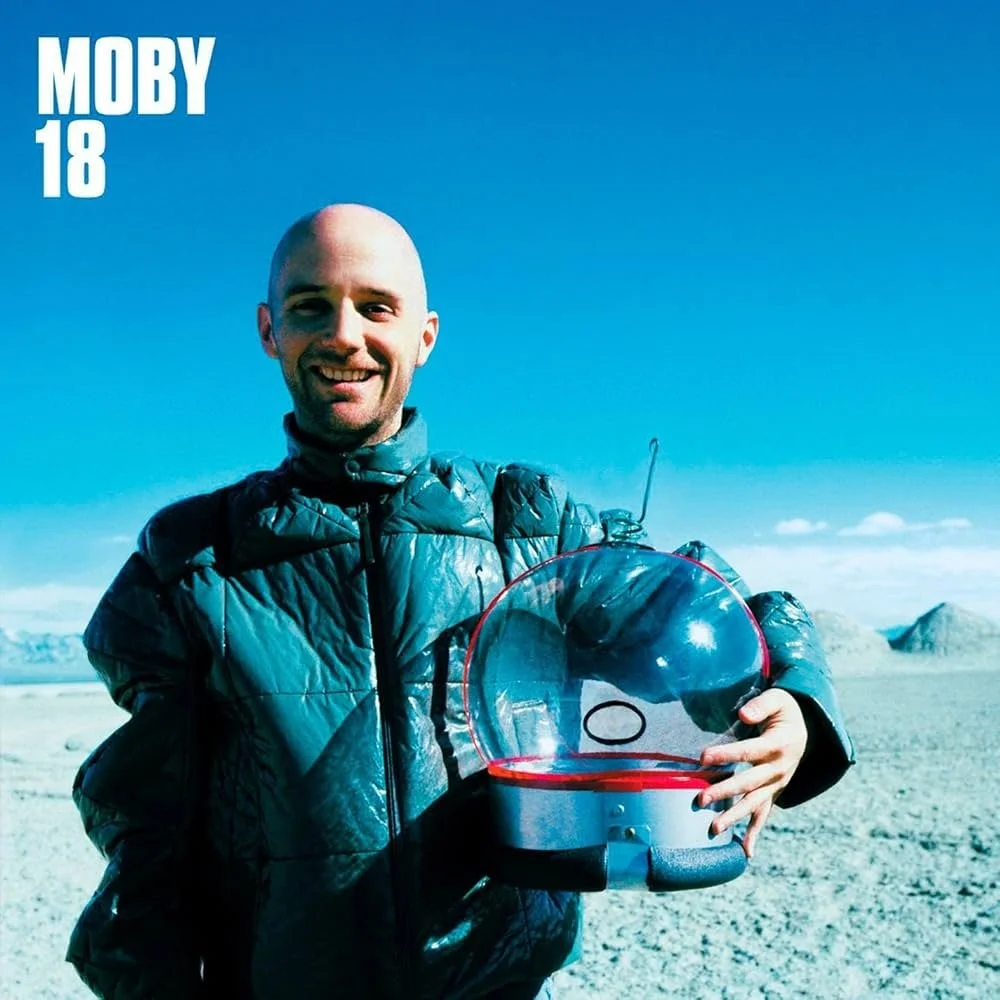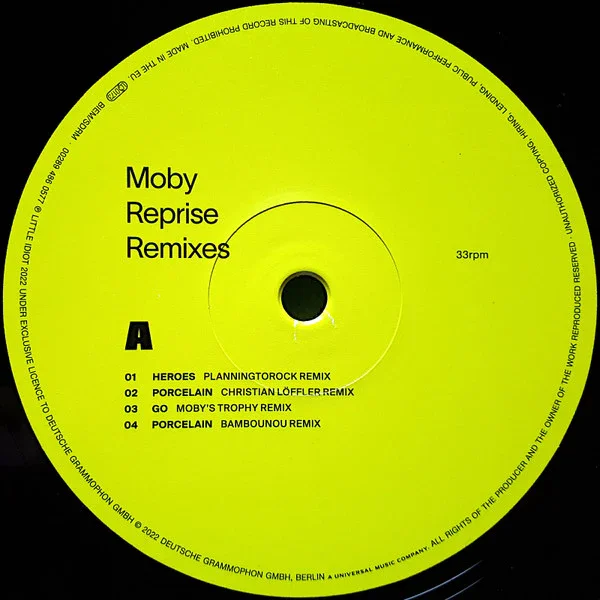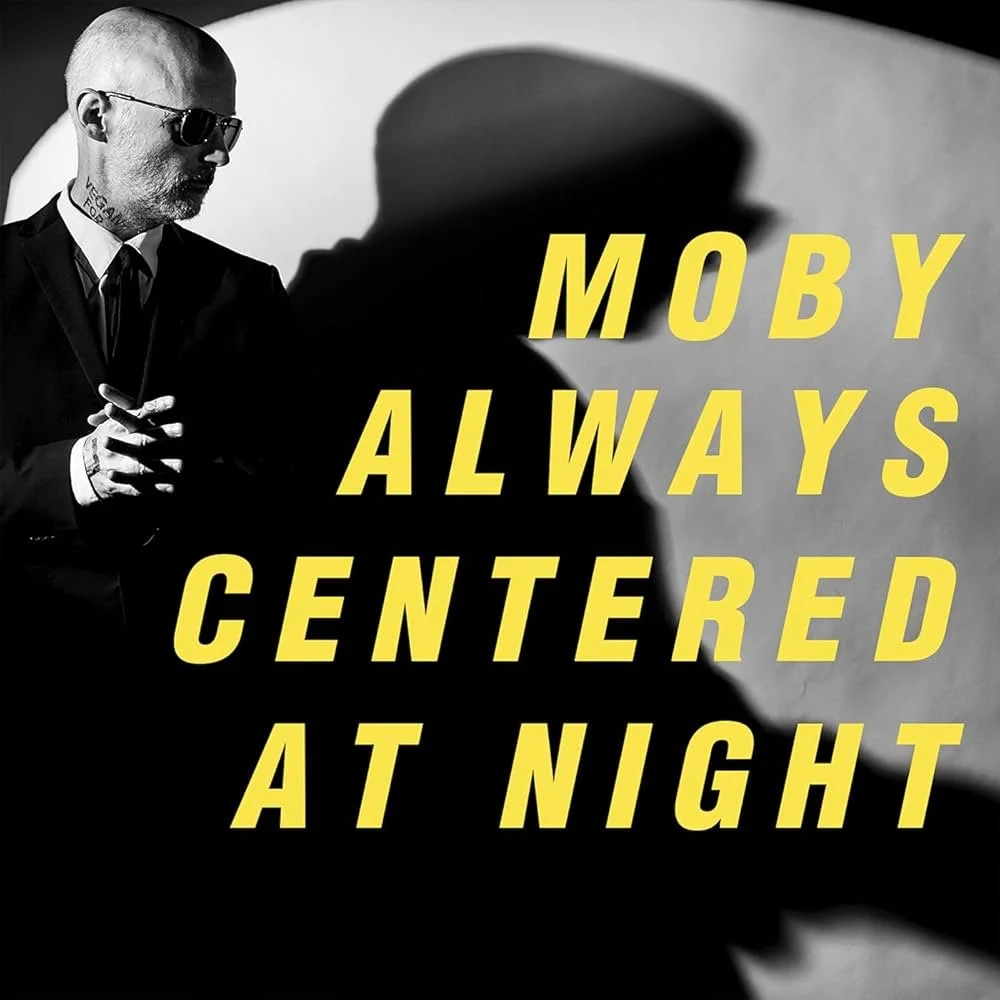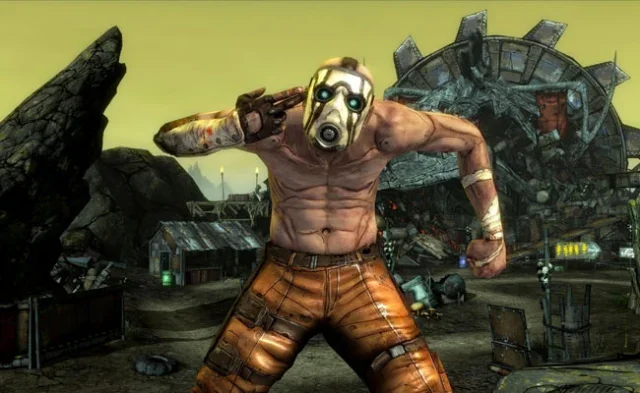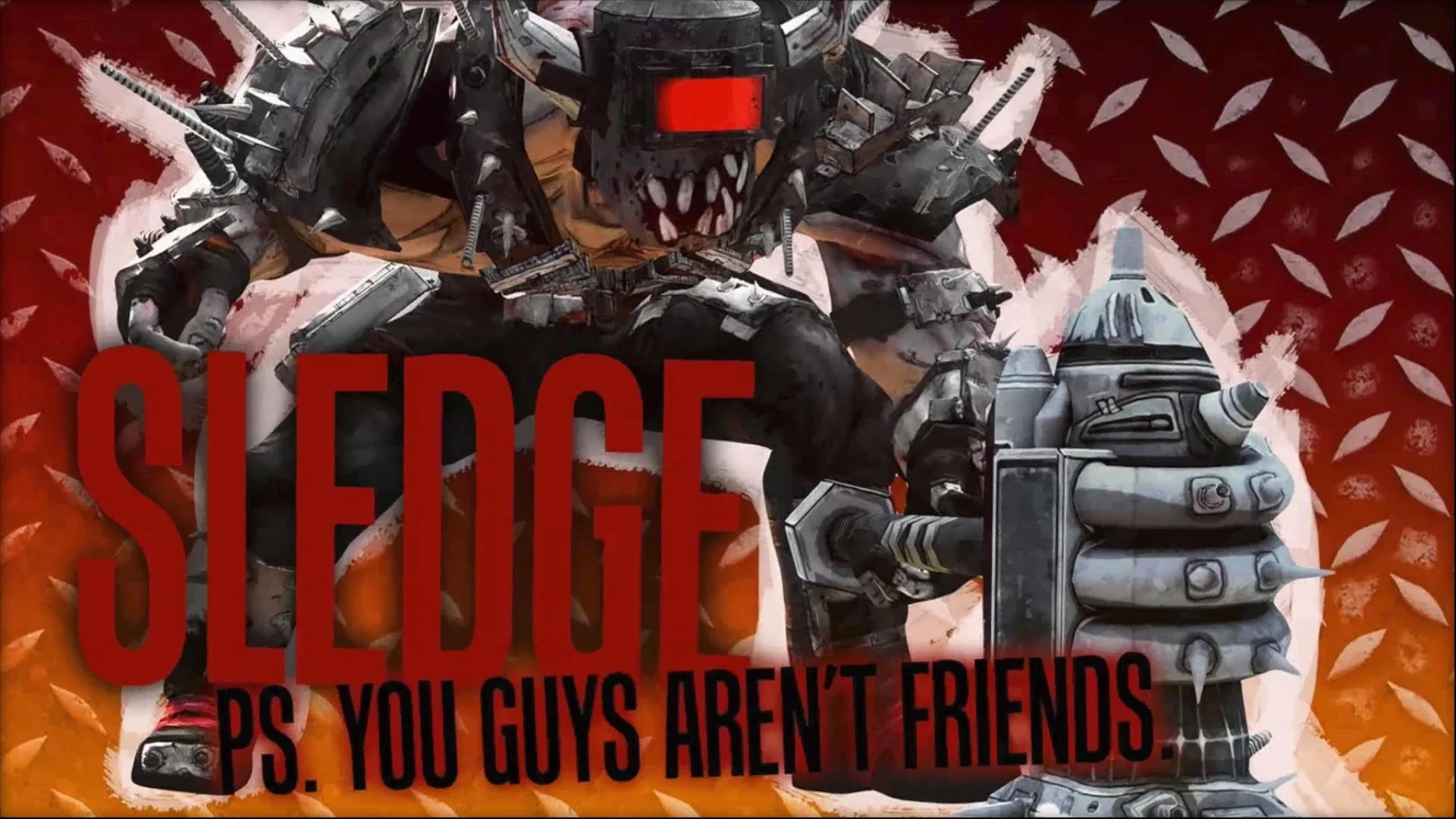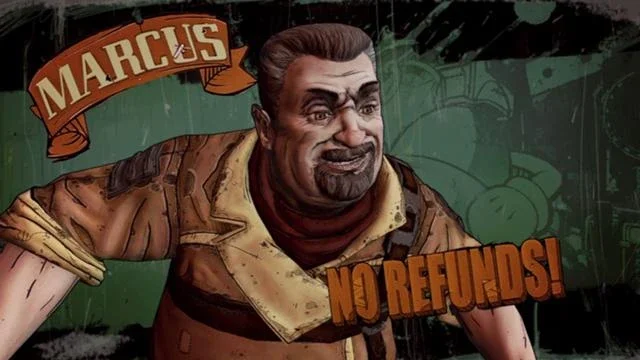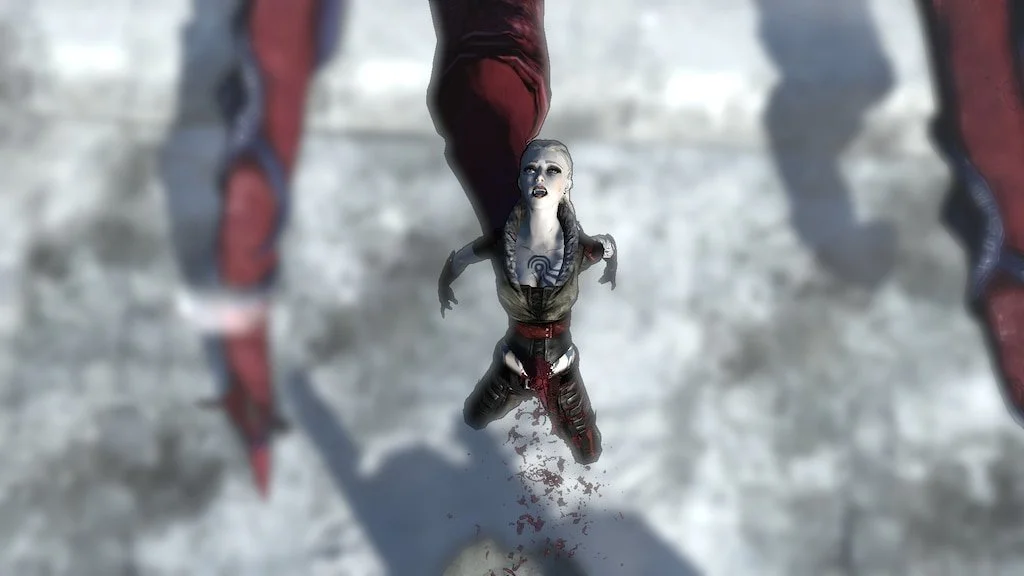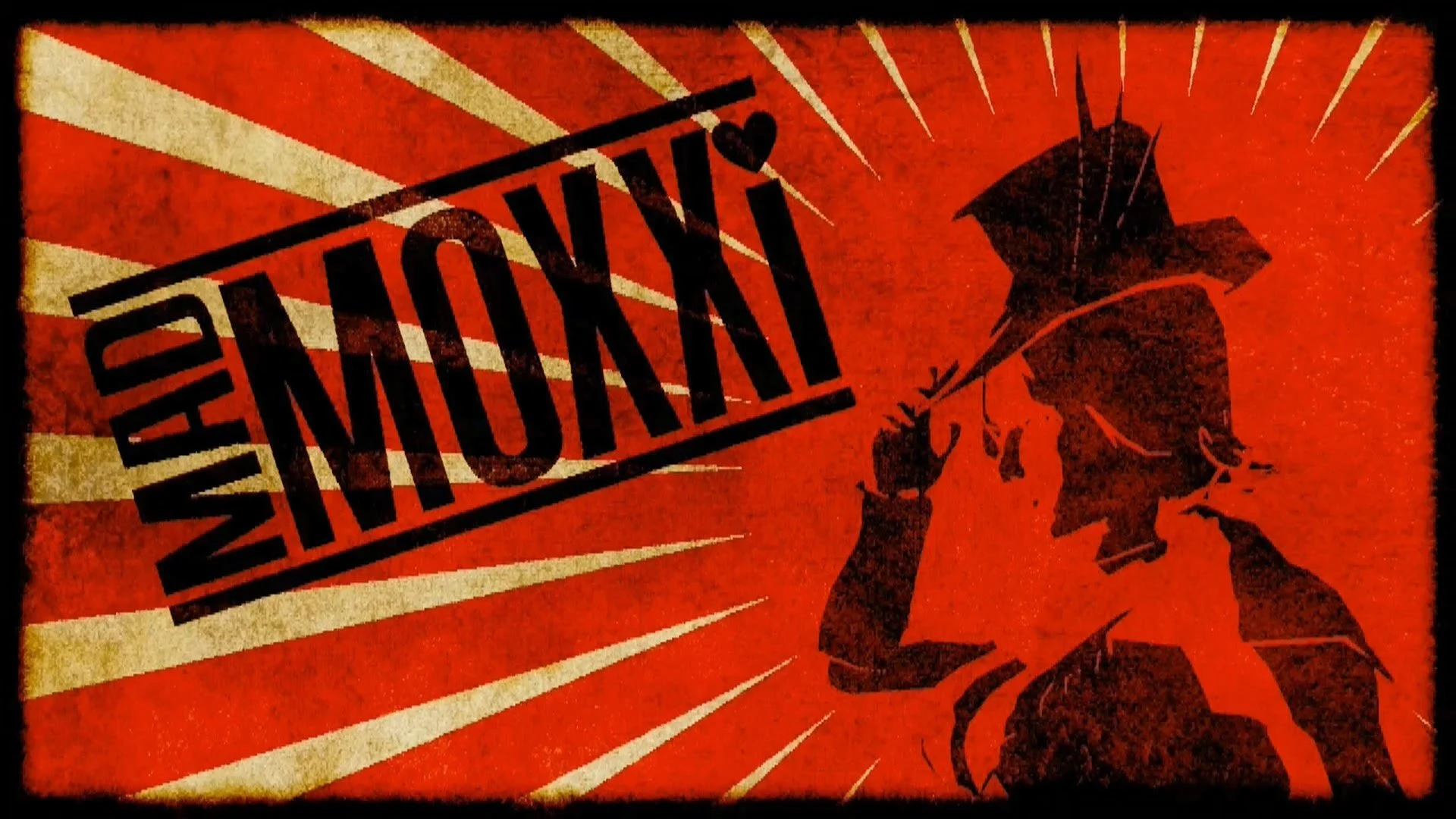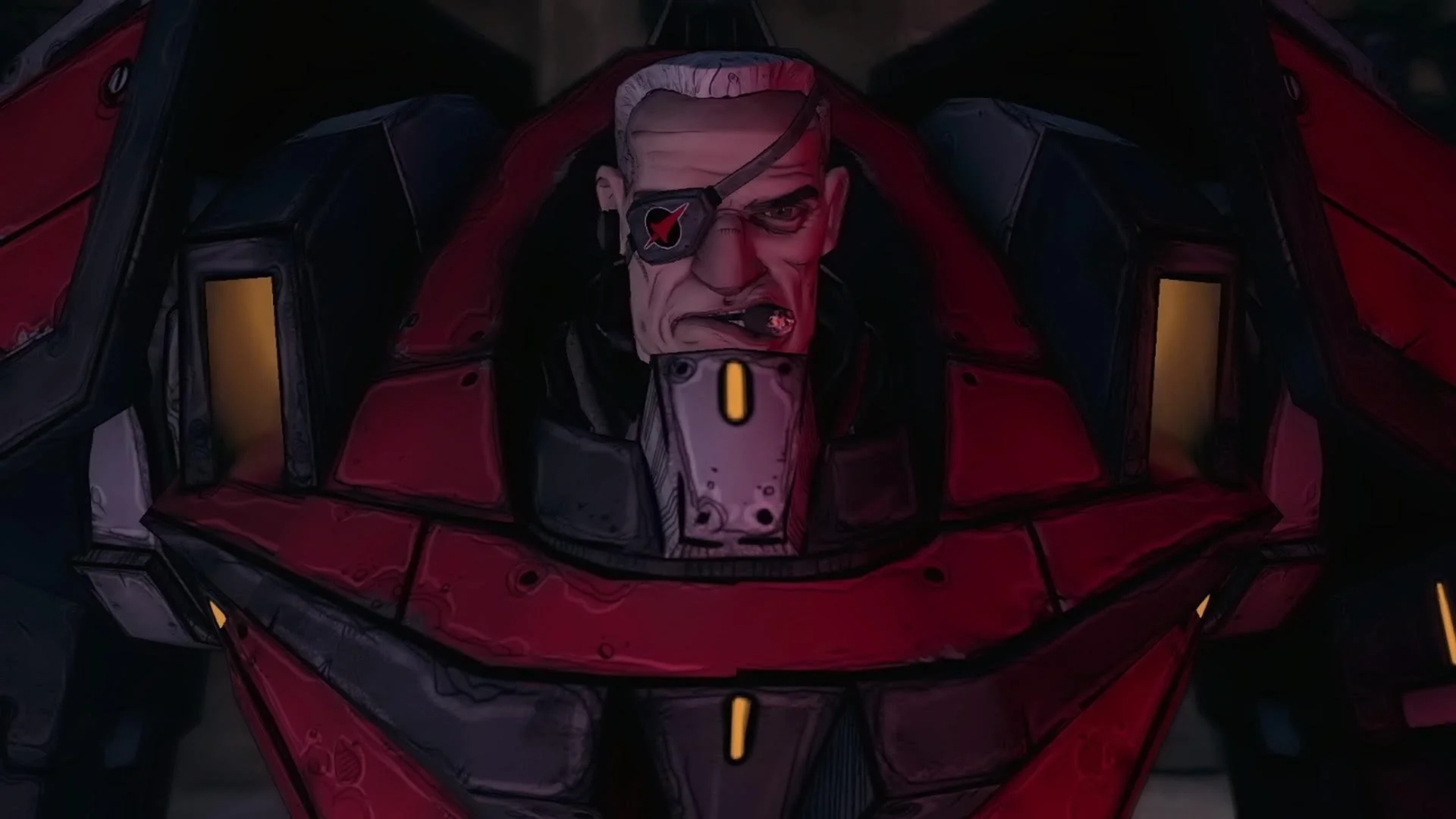Beginner’s Bond: Die Another Day
“Beginner’s Bond” is a series of posts about closing the largest gap in my personal cinematic history: the James Bond franchise. I am watching all of the movies in order for the very first time and sharing my reactions here. Last time, The World Is Not Enough proved that the Pierce Brosnan era wasn’t all bangers. Hopefully he will get an appropriately heroic sendoff for his final tour in the trademark tuxedo: 2002’s Die Another Day.
007 is sent to North Korea to investigate a shady arms deal using conflict diamonds as currency. Of course his cover is almost immediately blown, resulting in a gunfight that leads to a silly hovercraft chase. Ultimately, Bond is captured by General Moon and thrown into a torture dungeon. The opening credit sequence’s visuals depict 007 struggling to survive months of “enhanced interrogation” by the North Korean military. While James Bond has been captured numerous times before, he always escapes rather quickly. This is the first time Bond has faced the reality of imprisonment in enemy territory, which could be an interesting narrative element if it wasn’t forgotten as soon as he puts on a clean shirt and has a shave.
James Bond follows a lead to Havana, thankfully arriving just in time to see Jinx (played by Halle Berry) get out of the water. Her entrance and the design of her bikini pay homage to the very first Bond girl from Dr. No—Honey Runner, played by Ursula Andress. Unfortunately, it’s the most beautiful shot in this whole film. For the last twenty movies, cinema’s favorite secret agent has been traveling the world and bringing audiences gorgeous pictures of faraway places. So it is puzzling why so much of Die Another Day takes place in an ice palace that looks like a set built by a college theater company. While there is an impressive chase battle between two cars gliding on ice, most of the finale’s big set pieces are rendered entirely in primitive CG that looks like a cut scene from a PS2 game. The best fight of the whole movie happens at about the halfway point, when Bond engages Gustav Graves in an escalating sword duel. Just like Blofeld before him, Graves’ villainous plan uses diamonds to create a giant space laser that he will use to hold the world hostage. I believe that is the fourth space laser plot for the series.
Sadly, Die Another Day is just a straight-up dud. No fun, no excitement at all. The plot is contrived, driven primarily by coincidence rather than character action. It feels like pieces of several different scripts were stitched together to make this cinematic sleep aid. This movie made the same mistake as On Her Majesty’s Secret Service by including so many references to previous, better movies. Die Another Day did not fare well in the comparison.
Now that it’s all said and done, it seems like Pierce Brosnan just shone too brightly in his first two movies. The ones that followed simply couldn’t keep up. The Brosnan version of Bond was a synthesis of what had come before, perfectly splitting the difference between comedian and killer. It will be interesting to see how much 007 will change (or won’t) when Daniel Craig dons the tuxedo for the first time in 2006’s Casino Royale.
Beginner’s Bond: The World Is Not Enough
The “Beginner’s Bond” posts tell the tale of my quest to close the biggest gap in my personal cinematic history: the James Bond franchise. I am watching all of the movies in order (mostly) for the first time, and sharing my reactions here. Pierce Brosnan has been killing it as 007, with GoldenEye and Tomorrow Never Dies both being classic espionage thrills dressed up for the modern age. Is it even possible for 1999’s The World Is Not Enough to top that?
Not quite.
The world’s greatest secret agent is sent to retrieve a briefcase full of cash that was lost by a British oil tycoon who just happens to be old friends with M, which is an egregious abuse of state resources, but the movie must go on. The briefcase turns out to be a cleverly concealed bomb, and 007 has just delivered that gentleman his death. As such, his professional pride demands he kill those responsible. The trail leads him to Renard, a former KGB agent turned terrorist for hire. He has a bullet lodged in his skull from MI6’s previous attempt on his life. Although the bullet is slowly killing him, it has also negated his ability to feel pain. As a doctor explains, he will become stronger every day until he dies. The day he took that shot to the head, Renard was holding the tycoon’s daughter, Elektra King, for ransom. Fearing history might repeat itself, M tasks Bond with protecting Elektra. This inevitably leads to Ski Chase Number Six for the James Bond series as our heroes flee down a frosty mountain with heavily-armed snowmobiles in pursuit.
Elektra does a lot of very suspicious shit, like dropping a million dollars on a high card draw in a Russian gangster’s casino. Bond eventually discovers that she didn’t escape Renard all those years ago—she joined him. She’s actually his boss now, the architect of a terrorist plot on a far grander scale than Renard could have ever imagined on his own. They’re going to use a stolen nuclear submarine as a bomb to wipe out her main competitor’s pipelines; all of this sabotage is disguised as a singular hateful act by a random group of rogues. The series does not do plot twists often, and rarely well when it does, but this one was surprisingly effective. While there have been a few Bond girls who worked for the bad guys, Elektra is the first to also be the main villain.
Renard sounds like he would be a formidable henchman based on how all the other characters talk about him. But other than a theatrical demonstration at the beginning of the movie, his inability to feel pain doesn’t seem to provide him with any noticeable advantage. Renard doesn’t absorb damage with a stone face. He grimaces in what looks like pain and goes down when 007 punches him. Everyone says he’s super strong, but he never lifts anything particularly heavy or knocks anyone across a room.
Renard is just the most visible symptom of the biggest problem in The World Is Not Enough. This movie commits the cardinal sin of screenwriting: it does a lot of telling without an adequate amount of showing. There is no evidence of the impressive abilities other characters attribute to him. The film also tries to distinguish itself by giving James Bond a persistent injury, which I believe would be a first for the series. However, that injury only exists on paper that is literally discarded. The only potential problem posed by Bond’s injury is the possibility that he will not be declared medically fit for duty, an obstacle that evaporates the instant it’s revealed that the doctor examining him is a pretty woman. So James Bond goes into the field physically weakened—that could add an interesting layer to the story. But the effect is mostly cosmetic. For the rest of the movie, 007 will grimace and moan every time something twigs his hurt shoulder, and that’s about as bad as it gets. The pain never stops him from doing anything and his shoulder never gives out on him, so Mr. Bond may as well not be injured for all the difference it makes to the movie.
The World Is Not Enough has some fun action set pieces, but it simply can’t compete with its predecessors. It’s slower paced, less propulsive, the excitement is drip fed rather than gushing from the screen. This movie is neither good nor terrible enough to be memorable. The first disappointing miss for Pierce Brosnan’s Bond, but maybe he can bring it back for his last round in the tux: 2002’s Die Another Day.
Beginner’s Bond: Tomorrow Never Dies
“Beginner’s Bond” is about investigating one of the biggest gaps in my personal cinematic knowledge: the James Bond franchise. As influential as they are, I had seen almost none of them until now. I am watching all of the films in order (mostly) for the first time, and sharing my honest reactions here. GoldenEye revitalized the series for a new era of filmmaking. Can 1997’s Tomorrow Never Dies possibly follow that act?
In a word: yes!
Tomorrow Never Dies has a propulsive opening, and it just keeps building momentum from there. James Bond is spying on a terrorist arms bazaar on the Russian border, and some stuffy Navy admiral calls for a missile strike before it can be pointed out there are nuclear torpedoes in the blast zone. 007 makes some creative chaos by tossing around explosives, then uses the confusion to steal the jet carrying the torpedoes and fly it out of range just before the bazaar is annihilated. Cue title sequence.
It seems the Pierce Brosnan films are particularly good at cold opens, but the rest of Tomorrow Never Dies follows the same brisk pace, rarely slowing down to let the audience catch their breath. The villain, media baron Elliot Carver, uses a stealth ship and fabricated evidence as well as practical violence to orchestrate a conflict between Britain and China that could easily spiral into World War III. Agent 007 has 48 hours to investigate before the two fleets are within firing range of each other.
Since Carver was able to run news stories about the incident hours before MI6 found out, and also openly brags about taking bribes to increase or decrease the amount of coverage he gives a subject, Bond begins his investigation there. His cover is blown almost immediately, which leads to a gunfight at a newspaper facility, the death of the woman he seduced to gain access, and a rather clever twist on the traditional car chase that sees Bond controlling his vehicle and its many fun gadgets via his cellphone. He eventually joins forces with Wai Lin, a Chinese state security agent on the same case. And since she is played by Michelle Yeoh, she is a gifted ass-kicker that needs no help from a “decadent agent of a corrupt Western power.” They share a motorcycle as a helicopter chases them through Saigon, resulting in some award-winning stunt work that is still breathtaking to behold. Mr. Stamper, the uber mensch du jour, puts up a rather impressive fight, displaying both brains and brawn before ultimately being bested by Bond. But just like in GoldenEye before, 007 is able to kill all the bad guys and blow up the secret floating fortress before the marines ever arrive.
Of all the Bond villains I have encountered thus far, Elliot Carver is the most eerily prescient. His proclamation that information is the weapon of the future rings especially true in the year 2025, where media has become the modern battleground for cultural warfare. While Carver accurately predicted the ability of misinformation to manipulate entire nations, he could not foresee the death of truth. Today, Carver needn’t bother with all the stealth ship shenanigans. He could just run news stories about a conflict that never happened. As long as enough eyes see those stories, the lie becomes accepted and the falsehood is only strengthened by any contradicting evidence. An immoral media mogul of Carver’s stature could start a war from his iPad without ever going to the trouble of actually killing anybody—if he writes his stories the right way, the people will do it for him. That’s what makes him so much more insidious than previous villains—he’s not just murdering people, but convincing them to murder each other.
Didn’t anticipate this happening, but I think Tomorrow Never Dies might be better than GoldenEye. It’s faster paced with bigger and bolder action scenes, including some amazing stunt work, and it introduced the Western world to the magnificent Michelle Yeoh, the most memorable Bond girl yet. The villain has a timeless relevance, and it is a delight to watch 007 take him apart. Now I’m getting excited. Will The World Is Not Enough be even better?
Beginner’s Bond: Goldeneye
The “Beginner’s Bond” series of posts is a testament to my efforts to close the largest gap in my personal cinematic history: the James Bond franchise. I am watching all of the films in order for the very first time and recording my honest reactions here for your amusement. Today I’ll be talking about 1995’s GoldenEye, which debuts a new 007 played by Pierce Brosnan. Let’s see how he measures up against his predecessors.
The film opens with 007 running a co-op mission with his pal 006. They infiltrate a secret Soviet weapons lab and place some very familiar-looking mines all around it, but before Bond can hit the boom button, his buddy is captured by the enemy. Soviet Colonel Ourumov orders 007 to surrender, and when he does not comply, 006 is apparently executed. Bond blows up everything and makes a daring cliff-dive-into-a-falling airplane escape before we are treated to one of the more impressive title sequences of the whole series. The song “GoldenEye” performed by Tina Turner is one of the better themes, with thundering drums and bombastic horn stabs that make it sound almost like a cousin to the classic Bond theme.
Nine years later, James Bond fails to stop Xenia Onatopp, an operative of the Janus crime syndicate, from stealing a high-tech attack chopper during a demonstration. She and General Ourumov attack a radar station in Siberia, firing a Soviet orbital EMP weapon codenamed “GoldenEye.” Every electrical device for miles is wrecked, except for the chopper with its cutting-edge countermeasures, so Ourumov and Onatopp escape with all of the materials they need to fire GoldenEye again. 007 is sent to investigate, and that’s when things start going crazy. This movie has almost all the fun stuff you want from a James Bond experience—the corny puns, the classy outfits, the silly gadgets, the super strong henchman, over-the-top fights in difficult environments, and a chase scene with a ridiculous vehicle. Straightening his tie as he crashes through the streets of St. Petersburg in a tank is one of the most 007 images I can ever recall seeing—the wrecking ball in a three-piece suit. Natalya Simonova is an ideal Bond girl: beautiful and distressed, but not helpless. She’s actually integral to helping James figure out the plot. And Xenia Onatopp is a rarity among the pantheon Bond girls. She is the super strong henchman, as well as one of the few that never sleeps with James Bond.
Alec Trevelyan, the former 006, is one of the more fascinating villains of the franchise. He’s the first rogue agent we’ve seen from the 00 section, and his designation suggests he might be the equal of our favorite secret agent. Alec is ruthlessly clever, and quite skilled at solving problems by killing the right people…just like James. There’s also a petulant competitiveness in Alec's interactions with Bond, like an angry little brother desperate to prove he’s the best one. It’s not enough to just kill 007, he has to humiliate him first. Like many villains before him, 006 should have just pulled the trigger when he had his enemy at gunpoint.
Pierce Brosnan is the first actor to truly feel like he was succeeding Sean Connery. While Brosnan’s version of the character is obviously inspired by the original, he also borrows liberally from all the Bonds that came before him. Well, maybe not George Lazenby. Brosnan can hit the darker dramatic tones Timothy Dalton was striving for, but he is equally adept at the moments of broad comedy, delivering the humor without crossing over into the fully cartoonish like Roger Moore. Add in the weapons-grade charisma, and we have a James Bond for the post Cold War era. Pierce Brosnan’s performance successfully threaded the needle between the lighter and darker elements of 007. It’s no surprise that role made him a movie star and revitalized a franchise that many said had outlived its relevance. GoldenEye was also the first film to not use any plot elements from the original texts, proving that Agent 007 was not bound to his creator’s books, a character willing and able to face whatever adventure a writer can throw him into.
Full disclosure: GoldenEye is the film that introduced me to James Bond. I saw it in the theater when I was twelve years old. My mother took me to see it, and it’s the first time I ever recall her getting excited for a movie. It blew my tiny little pre-teen mind. At the time, I was pretty sure it was the best movie I had ever seen. Today it is still among my top three Bond films. And it would be impossible to overstate how influential the video game, 1997’s Goldeneye 007 for the N64, was on both me personally and games as a whole. I definitely wasted a lot of hours playing that game when I should have been doing homework. For a very long time, that was all I knew of James Bond: one movie, one video game, and a lifetime of secret agent jokes in cartoons and TV.
I was happy to discover that GoldenEye still held up pretty well. Even the rudimentary CG looks good despite being 30 years old. I’m genuinely excited to see the rest of the Pierce Brosnan era for the first time. Hopefully Tomorrow Never Dies (1997) will be an equally pleasant surprise.
Beginner’s Bond: The Timothy Dalton Experiment
The “Beginner’s Bond” series of posts follows my journey to close the largest gap in my personal film knowledge: the James Bond franchise. I am watching all of the movies (mostly) in order for the very first time and sharing my reactions. After 1985’s A View To A Kill concluded Roger Moore’s tenure in the tuxedo, it was time to pass the torch to a younger actor. Timothy Dalton took over in 1987’s The Living Daylights, and returned for Licence to Kill in 1989.
Although Timothy Dalton is one of the finest British actors of our day, he only played James Bond for two movies with terrible scripts, and thus his version of the character failed to distinguish itself from its predecessors in any positive ways. Since both The Living Daylights and License to Kill were bad in the exact same way, I’ve decided to roll them both up into one post.
The cold open of The Living Daylights has Bond and fellow agents 004 and 002 participating in a training exercise when an assassin disguised as a fellow participant kills several British agents and military personnel. That idea was interesting enough for an entire movie, but that’s just the first ten minutes of TLD. After taking out the assassin, Mr. Bond falls onto the yacht of a beautiful scantily clad woman who was literally crying out for a “real man” to fall out of the sky, and he seems barely interested. He makes a half-hearted quip, but I’ve never seen a James Bond less enthused by the prospect of spending time alone with a woman who is equal parts gorgeous and horny. That’s the real problem with this movie—James Bond isn’t having any fun. While he has always been depicted as devout in his duty, 007 also has a really good time getting drunk and laid while traveling the world on a government-sanctioned murder spree. But here the quips are flat and lame, and Mr. Dalton always looks so very serious. This version of 007 takes no pleasure in his work, which makes it that much harder to enjoy watching him do it. And it removes a great deal of the character’s charm.
Dalton was also paired with one of the worst Bond girls I’ve seen yet—Kara Milovy is nothing but a tedious burden the entire time, an albatross hanging around 007’s neck. She has zero agency, being passed back and forth between captors and rescuers like a football for most of the movie. When she is with Bond, she is not only completely unhelpful, but an active hindrance to the mission and a threat to her own safety. While a few Bond girls of the past were walking liabilities, they balanced it out by at least being funny, like when the air-headed Mary Goodnight accidentally hits the self-destruct switch with her butt. Kara is nothing but a needless nuisance, since ultimately her cello is more important to the plot than the woman who plays it.
Licence to Kill has an interesting premise: 007 resigns from MI6 in order to seek revenge upon the Colombian drug lord that killed his friend. The idea of James Bond operating off the reservation, on a personal vendetta without the support of his government, is intriguing. But this movie almost immediately ejects that notion. James still has access to plenty of weapons and intel, and Q even shows up to provide gadgets. So Mr. Bond isn’t really off on a solo revenge quest all by himself. There is no functional difference to the movie. We’ve also seen 007 pursuing personal vengeance before with Blofeld, so LTK doesn’t provide any of the interesting twists promised by the premise. It’s just another action thriller not doing anything terribly original.
Most confusing of all is that LTK has no idea how time works. It opens with Bond and his old CIA pal Felix Leiter on their way to Leiter’s wedding. They get picked up by a chopper en route because Franz Sanchez, the big drug lord Felix has been trying to put away, is in Florida. So they fly down to the Keys and engage in a long gunfight and chase sequence with Sanchez’s men before capturing the kingpin. The chopper drops James and Felix off at the wedding, which is still going on. The bride expresses her relief that the groom was “only a few hours late.” In the meantime, Sanchez is interrogated and prepped for transfer to prison. The transport carrying him is ambushed and Sanchez’s men orchestrate a complex underwater escape for their boss. Sanchez goes back to his house for a change of clothes and a cigar before setting out to take his revenge on Felix Leiter. Somehow he gets the home address of a CIA agent, so he and his men go over and find the happy couple still in full wedding dress, just about to call it a night. Which means this whole convoluted mess, from capture to escape to revenge, happens over the course of a few hours. Not even a whole day!
I don’t think Timothy Dalton was a bad James Bond. It just feels like he’s doing a completely different movie than everyone else involved. If Sean Connery’s Bond was the killer in gentleman’s clothing, and Roger Moore’s was a cartoon, then Timothy Dalton’s version is a Shakespearean tragedy. The very things that make James Bond entertaining to watch—the drinking, gambling, sex and violence—are also slowly destroying him. He is not the carefree killer playboy we’ve come to know over the last fifteen films, but rather a tortured assassin who often finds his conscience at odds with his duty. The movies try to split the difference between the classic camp and modern melodrama, and end up doing neither very well. No matter how sternly Mr. Dalton frowns, a chase down a snowy mountain (Number Five for the series!) using a cello case for a sled is just silly. You can’t take him seriously when he’s driving a car with lasers mounted in the hubcaps, because the world of this film is inherently ridiculous. It’s like an actor shouting Hamlet in the middle of a three-ring circus. The gravitas is lost beneath a cavalcade of clowns.
TLD and LTK are decent as generic espionage action thrillers of the 1980s, there’s little about them that is uniquely “James Bond.” No more gadgets, no silly names, no superhuman henchmen—no fun of any kind! By trying so hard to be “grounded and dramatic,” the filmmakers produced two really bland movies that vanish from memory as soon as the credits roll. These films aren’t bad, but they simply can’t stand toe-to-toe with the barrage of excellent action flicks that released in the same time period.
Up next on “Beginner’s Bond,” the movie that first introduced me to James Bond: 1995’s GoldenEye. I remember it being pretty good. Here’s hoping it holds up 30 years later.
Beginner’s Bond: A View To A Kill
“Beginner’s Bond” is a series of posts about my decision to finally close one of my largest blindspots in classic cinema: the James Bond franchise. I am watching all of the movies in order for the very first time, and recording my reactions here. Octopussy took 007 on a fun (if confusing) trip to India. Will 1985’s A View To A Kill provide a worthy finale for Roger Moore?
The movie opens with James Bond in Siberia, recovering a microchip from the dead body of Agent 003. And wouldn’t ya know it, some Soviet soldiers end up chasing him down a mountain on skis. To be fair, the movie does change it up a little by letting Bond lose his skis and have to improvise a snowboard. Although, it does play a Beach Boys song when he first masters the snowboard, which is just trying too hard to underline a joke that isn’t really there. The Bond movies have never relied on cute pop music needle drops, so it feels jarringly out of place here. Since this is ski chase number four in the franchise, I must concede that pursuits down snowy mountains are indeed a consistent element of the Bond mythos.
007 is sent to investigate some shady business going on at the horse track. Billionaire industrialist Max Zorin has horses that miraculously never tire and slow down, a distinct advantage in a horse race. A little intrusive snooping later, Bond discovers that Zorin is implanting his horses with devices that release adrenaline, giving the horse a significant boost on the final stretch without leaving behind anything that would show up on a drug screen. Now that I’ve written that out, it seems to me that—adrenaline or not—a horse is unlikely to run its best race after surgery on its leg. “Whatever!” A View To A Kill boldly declares, “That’s only the tip of this crazy iceberg!”
It turns out that torturing animals for money is the least of Mr. Zorin’s sins. He treats women like objects, verbally and physically abuses his employees, and murders potential business partners when they don’t accept his one-sided offer. Max Zorin delights in his own cruelty purely for the sake of it. On top of all that, it turns out he’s actually a deep cover KGB agent that’s gone off the reservation. Zorin’s got a crazy plan to blow up a fault line beneath California to trigger a massive earthquake that will fill Silicon Valley with seawater. With his primary competition drowned, Zorin will dominate the world market for microchips.
Honestly, capably delivered by Christopher Walken, the plan almost sounds crazy enough to work. He is unique among Bond villains because he genuinely seems to be enjoying himself. When Zorin looks up 007’s resume and sees “License to Kill,” he chuckles. He laughs the hardest when he drowns his workforce and guns down those that make it to shore. Another first for the series—Zorin’s bodyguard May Day (played by Grace Jones) is both a Bond girl and a superhuman henchman.
After a hilariously corny fight with an axe-wielding Max Zorin atop the Golden Gate Bridge, the age of Roger Moore finally comes to a close. With seven movies under his cummerbund, Mr. Moore is still the actor that portrayed 007 the longest. He was James Bond for several generations of young fans. Love him or hate him, that makes him an important part of the filmography. While I stand by my assessment that Roger Moore’s version is essentially a cartoon character, that’s not necessarily a bad thing. Live and Let Die was a very bad movie full of very bad things, but the others, movies like Moonraker and Octopussy, are a silly good time. He may not be the most iconic Bond, but he seems to be having the most fun.
Next time on “Beginner’s Bond,” I will be introduced to Timothy Dalton’s version of the character from 1987’s The Living Daylights. Other than George Lazenby, he’s the Bond I’ve heard the least about, but I’ve enjoyed Dalton in many other movies, so I’m tentatively excited.
Beginner’s Bond: Octopussy
“Beginner’s Bond” is the chronicle of my quest to close the largest gap in my cinematic knowledge: the James Bond franchise. To that end, I am watching all of the 007 movies in order for the very first time and writing my reactions here. Due to a mistake on my part, the last film I watched was 1979’s Moonraker, which was a stupid good time. Let’s see if the film with the strangest title yet, Octopussy, can compare.
I gotta give Octopussy credit—it lets you know up front that this movie is going to be absolutely bonkers. It opens with a clown being hunted through the woods by a pair of knife-throwing twins. He gets stabbed in the back and literally crashes into some shocked British politician’s house to hand him a Faberge egg. And then as soon as James Bond takes a look at it he declares it a forgery. What? The film has been on less than five minutes, and my head is already full of questions that I must have answered. Starting with “Why did this clown sacrifice his life for a fake Faberge egg?”
Mr. Bond swaps the fake for the original during a live auction because he’s just that slick, and then engages in a bidding war to identify his target: prince-in-exile Kamal Khan. From there, 007 takes his usual approach by following the villain around and annoying him until the main henchman knocks out our hero and drags him to Khan’s palace. After escaping his room and snooping around, Bond learns that the prince has been using Octopussy’s traveling circus to smuggle stolen Soviet treasures into the West. Of course Octopussy decides to betray her business partner to help 007 about five minutes after meeting him, because no woman can resist James Bond.
Admittedly, I was unsure as to the specifics of the plot. A corrupt Russian general was smuggling jewels to Khan as payment for setting off a nuclear warhead on some European border for… reasons. Ultimately, I did not care because I was having too much fun. Octopussy pulls out all the classic Bond tropes. There’s a crazy taxi chase through an Indian market, a fight on top of a moving train with Gobinder the superhuman henchman, and 007 dresses up in a gorilla suit to infiltrate a circus. Octopussy leads her team of circus-trained ninja women in a final assault on Khan’s palace. It didn’t matter if any of it made sense—every scene you will see something more ridiculous than the last, and that can be plenty entertaining.
While Octopussy was certainly no masterpiece, it was never boring. I’d say this film and Moonraker are the best of the Roger Moore era thus far. But I’ll see if that opinion changes after I watch Mr. Moore’s final outing in the 007 tux: 1985’s A View To A Kill!
Beginner’s Bond: Moonraker
The “Beginner’s Bond” series chronicles my quest to close the largest gap in my personal film history: the James Bond franchise. I have been watching all of the 007 films in order… Well, I had been, until I got to here. When I reached the end of The Spy Who Loved Me, the next movie recommended by the Prime algorithm was For Your Eyes Only, which I foolishly assumed to be the next movie in the series. Why else would it be suggested to me at that moment?
I accidentally skipped over 1979’s Moonraker, but I’m really glad I came back for it. It’s definitely my favorite film from the Roger Moore era so far. This movie completely surrenders itself to the ridiculousness of a Saturday morning cartoon, and the result is a delightful sci-fi dessert of a movie. Not very substantive, but plenty of fun.
The title refers to a space shuttle that is hijacked in mid-flight and disappears without a trace. 007 is sent to investigate, and is almost immediately thrown out of a plane by Jaws. He wrestles a guy in midair to steal his parachute, a scene I have witnessed countless references to. Jaws survives the fall and is instantly smitten with a pretty girl that comes to check on him, an affection that seems to be reciprocated. When he shows up at Drax Industries asking questions, the villain attempts to murder Mr. Bond with a centrifuge. There are two delightfully ridiculous boat chases (one in a gondola!), a fight scene in a museum full of ancient glasswork waiting to be shattered, men getting defenestrated left and right—even a third act heel turn from Jaws. The series gets its second space station evil lair, and its third “exterminate humanity and start over” variety of villainous plot. We get to see a small army of armed astronauts assault a space station with laser rifles, and it’s a pretty awesome action set piece. Hugo Drax is such a creepy weirdo, a wannabe emperor with delusions of grandeur—being expelled into the void like debris is a fitting end for him. And just before the credits roll, we learn that Commander James Bond of Her Majesty’s Secret Service is the first man to get laid in space. Who else was gonna do it?
I still think James Bond is the most entertaining when he skates right on the edge of science fiction—two or three plausible but imaginative gadgets, maybe an impossibly well-armed vehicle, and the occasional jaunt into space. The promise is made in the very first scene, yet it never feels like the movie is in a rush to get there. It has plenty of interesting things to show you along the way.
Moonraker isn’t a brilliant film, but it is a good time. Up next is Octopussy, which wins the award for most bizarre title so far. I can’t wait (or am I terrified?) to find out what it means.
Beginner’s Bond: Copy & Paste
“Beginner’s Bond” is the chronicle of my quest to close the largest gap in my personal cinematic knowledge: the James Bond franchise. I am watching all of the movies in order for the very time and writing down my reactions. So far, the split on quality is about 50/50. We got five really good movies from Sean Connery, one ambitious-yet-boring one from George Lazenby, and two of the worst with Roger Moore. I sincerely hope Mr. Moore can break the trend since he ultimately has the most outings in the iconic tuxedo. Let’s see if he can turn it around in The Spy Who Loved Me (1977) or For Your Eyes Only (1981).
This is going to be another double entry, due to a small mistake on my part. While the intent was to watch all of the movies in order, Prime pulled a fast one on me. Once I had finished watching The Spy Who Loved Me, the “watch next” feature recommended For Your Eyes Only. I assumed that was the next movie in the series, because that is what would make the most sense. How foolish of me. Of course I will go back to watch Moonraker (1979) later, but this mixup proved surprisingly serendipitous. Watching TSWLM and FYEO back-to-back made it clear just how blatantly similar they are, as if the screenwriter of one was cheating off the other writer’s paper. Although historically impossible, it reads as if someone fed a Bond script into an AI and asked it to produce something familiar, but with just enough details changed to give the appearance of a brand new story. Human writers used to be able to cheat on their own; now we outsource it to a machine. It’s a shame, but that’s a topic for an entirely different article.
I’m going to describe the plot of a film. See if you can guess which one it is.
When an important government watercraft disappears, 007 is sent to investigate. He meets and teams up with a dangerous woman who is out for revenge. As they travel the world seeking their target, our heroes in love and are pursued by a superhuman henchman who survives multiple fatal situations. After a daring ski chase down a snowy mountain and some scuba-assisted sleuthing, Mr. Bond is eventually captured by the villain and brought to a secret fortress so that he can explain his evil scheme in detail. Naturally, the world’s greatest secret agent escapes, blows up the base, and still has time to get the girl before the final credits roll. Cut. Paste. Print.
Were you able to figure out which movie I was describing? Trick question. That paragraph is a an accurate summary of both movies. Before I realized my mistake, I was shocked that two movies in a row featured an extended set piece on skis. And now that I know, it’s still kind of silly that this series has had at least three big ski chases. I never knew that was such a recurring trope. But I guess Mr. Bond likes to hit the slopes just as much as the sheets. While I understand that all of these films follow a certain formula, and that’s a big part of the fun, this is the first time its felt like one movie was recycled from another.
One significant difference is the henchman employed— TSWLM introduced us to Jaws, a silent heavy so iconic that I’ve been seeing him alluded to and made fun of my whole life in countless cartoons, TV shows and movies. He was even a playable character in the landmark video game GoldenEye 007, which wasted countless hours I should have spent on homework in 1997. Seeing him in action was an absolute delight. By contrast, FYEO has Bond being hunted by a German biathlete devoid of any personality. Honestly, I don’t even remember how 007 killed him. But I’m crossing all my fingers in the hope Jaws will return for another round.
Roger Moore does a much better job when he’s not saddled with one of the franchise’s worst scripts. His version of James Bond is clearly more of a lover than a fighter, achieving most of his mission objectives through the use of seduction and subterfuge. But even when he’s shooting people and throwing knives, Mr. Moore doesn't capture the killer’s edge that Sean Connery brought to the character. This iteration of 007, the debonair gentleman gambler who knows everything, never misses a shot, and gets every girl—he’s a cartoon. A caricature of the secret agent man archetype established by this very franchise. James Bond has literally become a parody of himself. In any other context, that would be a pretty savage burn, but that’s not what I mean. Roger Moore’s portrayal of 007 isn’t worse, it’s just different. His James Bond is more of a comedian than an action hero. Not a revelatory performance, but serviceable. Fun enough.
Next time on “Beginner’s Bond,” I have to double back and watch 1979’s Moonraker. If this movie opens with another intense ski chase, I’m going to be concerned. I never knew skiing was such an important part of espionage. From what I can tell, Moonraker appears to be set in outer space, so it’s unlikely there will be any snow. But I’ve certainly learned by now that nothing is impossible when it comes to James Bond.
Beginner’s Bond: Intro to Roger Moore
“Beginner’s Bond” is the tale of one movie nerd trying to close the largest gap in his cinematic knowledge: the James Bond franchise. I am watching all of the films in order for the very first time, and leaving my thoughts on each one here. Diamonds Are Forever reminded me of what a good 007 movie looks like, and I’m curious to see how Roger Moore fares in the iconic tuxedo.
However, today’s post is going to be a little different. This time, I’m going to cover two movies at once—Live and Let Die (1973) and The Man With The Golden Gun (1974). Sadly, both are pretty bad movies for many of the same reasons, so I don’t want to belabor the point with two whole posts about the same thing.
The best part of Live and Let Die is the title sequence, featuring the song of the same name by Paul McCartney and Wings. This is the first Bond theme I had heard on the radio and in other movies when I was growing up. I never knew it was a James Bond song—thought it was just another cool psychedelic rock track. Unfortunately, once the opening credits conclude, it all goes downhill with impressive speed. The film “borrows” inspiration from the blaxploitation genre that was popular at the time, and ends up creating the most racist Bond movie I have yet seen. MI6 sends 007 to Harlem to investigate the deaths of multiple agents under mysterious circumstances. His investigation leads him to Mr. Big, who isn’t a megalomaniacal supervillain so much as a really shrewd drug kingpin. He’s not trying to take over the world with a death ray; Mr. Big just has a fairly clever plan to corner the heroin market and get rich. With one exception, every single black person James Bond encounters in this movie works for the bad guys. Every cab driver, cook or cop—an entire congregation performing a fake funeral march in New Orleans to secretly remove corpses from the street. Even poor Rosie Carver, the first African American Bond girl, turns out to be a double agent employed by Mr. Big. Voodoo beliefs and practices are depicted as black magic used by a cult of criminals who gather to do tribal dances in traditional dress while performing the ritual sacrifice of a white woman. James Bond’s distaste for this “strange” culture is regrettably pronounced. He looks utterly disgusted by everything he sees in this film, unable to believe people really live this way. And to mention the obvious, the very white, very British man James Bond is the worst spy you could assign to infiltrate Harlem or New Orleans. He does not escape notice.
The Man With The Golden Gun is more entertaining than its predecessor. While it demonstrates a profound ignorance of Asian cultures (particularly around martial arts), it’s not as egregiously offensive as Live and Let Die. I counted at least four Chinese characters that were good guys, which is a small but significant improvement. In this film, 007 meets his match: Francisco Scaramanga, an assassin of incomparable skill who always kills his targets with a single golden bullet fired from a matching gun. Scaramanga is actually a fan, considering Mr. Bond his only true equal in the field of violence. In pursuit of his quarry, 007 follows the trail from Macau to Hong Kong, and then on to Thailand. Throughout the journey, different peoples and cultures of Asia are treated as basically interchangeable. James is captured and taken to the enemy’s karate school to fight its students in death matches, which makes no cultural sense. Karate is Japanese, and so at the time it was vanishingly unlikely there would be a functioning dojo in Thailand. Muay Thai is the native martial art of Thailand, yet the students use moves and forms that are neither. Apparently an army of killers is trained here, but when James kicks the asses of their two top students before making his escape, aided by the Hong Kong cop and… his nieces that he’s picking up from school? The cop uses kung fu, while his nieces use wuxia-style moves more suited to stage fighting than real combat. Whatever move the enemy does has to be very broad and slow so that Roger Moore can actually block it and counterattack. As a result, the movie manages to make martial arts training look like a liability in a fist fight. Which is such a strange deficiency to find in a film that is clearly inspired by Bruce Lee’s kung fu masterpiece Enter the Dragon, which had released the previous year. But at least The Man With The Golden Gun doesn’t cast an entire race of people as evil.
Unlike its predecessor, The Man With The Golden Gun has a few highlights that make it easier to watch. Christopher Lee’s portrayal of Scaramanga is fantastic despite a deficit of worthy material to work with. At the end of the movie the script just staples a generic death ray plot onto a villain not suited to it, but Scaramanga’s childish delight at getting to play cat and mouse with the object of his admiration is infectious. It’s also fun for the audience to watch a character that is capable of outsmarting and manipulating James Bond. For the first time, our favorite secret agent spends most of the film on his back foot. This movie also contains one of the most perfectly-executed practical car stunts ever captured on film, a corkscrew jump off broken bridge with a flawless landing. Bumps Willert, the stunt driver, nailed it on the first try. He got a standing ovation on the set and a $30,000 bonus, both well-deserved. But the director put a slide whistle to the scene, which undercuts the awesome stunt that just happened and turns it into a cartoon.
Finally, let’s talk about the man of the hour. Roger Moore—is he James Bond?
A tentative yes. Moore clearly isn’t trying to imitate Sean Connery. He’s trying to build his own version of Bond, and it has potential. This version of 007 is extra campy, addressing more one-liners to the camera than either of his predecessors. Moore is certainly adept at playing the dashing debonair gentleman part, but this Bond is a cold and calculating sociopath compared to Connery’s restrained killer. He wields violence like a scalpel, not a hammer. The flaw in the performance is that Moore plays Bond as too unflappable. There’s no threat that can’t be dismissed with a brief witticism, and it gets difficult to escalate things in the third act when the main character has the same blasé reaction to extrajudicial murder as he does to champagne that hasn’t been properly chilled. The audience isn’t going to believe the stakes are raised if the hero still hasn’t raised an eyebrow. I don’t need to see James Bond have an emotional meltdown, but he should have more than two reactions to pick from in every situation. If 007 looks bored with the whole thing, the audience will be too.
So Roger Moore wasn’t that bad, despite being given two of the worst scripts in the series. I’m willing to give him the chance to really explore the character and refine his performance. All that is to say… I really hope The Spy Who Loved Me isn’t this bad. Maybe it’ll just be cheesy and outdated instead of outright offensive. Fingers crossed.
Beginner’s Bond: Diamonds Are Forever
“Beginner’s Bond” is about my quest to close the largest gap in my personal cinematic knowledge: the James Bond franchise. I’m watching all of the movies in order for the first time and recording my reactions here. Our last subject, On Her Majesty’s Secret Service, was the first true dud of the series—I had to split up my viewing because I kept falling asleep. Let’s hope Diamonds Are Forever is nothing like it.
First and foremost, Sean Connery is back. It speaks to his prowess as an actor that the film is so drastically improved simply by putting him back in the role. Every scene is at least three times as interesting as anything that happened in OHMSS. That’s the quality that turns an actor into a bonafide movie star. You hear his voice before he ever appears onscreen, and a wave of excitement hit me as soon as I heard it. On an instinctual level my brain was saying “Yes! This is gonna be good.” There’s a reason the studio was willing to pay $1.25 million to get him back, which was the most a screen actor had ever been paid at the time.
The movie begins with 007 trotting the globe, following Blofeld’s trail, and he is not fucking around. The sequence is immediately compelling because (up to this point) we have rarely seen Mr. Bond so enraged that his human mask slips and we see the coiled violence beneath. He doesn’t even try to seduce the half-naked woman that has the intel he wants, which would typically be his first approach. Instead, he skips straight to literally choking the answer out her. When he finally catches up to the object of his hatred, Ernst Stavro Blofeld, he doesn’t kill him quickly. No, Mr. Bond decided to drown him in goo. He spent time and effort making his enemy’s final moments as agonizing as possible. While James has always had a rather cavalier attitude about killing people, I don’t think I’ve seen him be so intentionally cruel before. That’s where we get some of our truest insights into a character—when they do something that is unusual for them.
M orders Bond to investigate a diamond smuggling ring, suspecting that the culprits intend to manipulate prices by dumping. 007 fakes his own death (the second time) in order to infiltrate the smuggling operation. While he chases rumors of diamonds around, a creepy pair of assassins, Mr. Wint and Mr. Kidd, stay just a few steps ahead, eliminating every link in the smuggling chain. Of course, James’ investigation leads to a casino, then to an eccentric billionaire that turns out to be a front for his old pal Blofeld. Apparently Mr. Bond merely drowned his body double at the beginning of the film. Blofeld eventually reveals his plot, and I believe this is the first instance of a villain holding the world hostage with a space laser, a trope that became so popular it’s practically a cliche now.
All in all, Diamonds Are Forever is a fun return to form for the franchise. It has almost all the big hits: sci-fi gadgets like the voice changer, numerous overcomplicated impending death traps, beautiful women with silly names like Tiffany Case and Plenty O’Toole. And while Mr. Wint and Mr. Kidd are not superhuman, they are interesting enough characters to compensate. A pair of proficient killers who enjoy their work and love to make belabored puns about death—Mr. Bond was essentially fighting two extra crazy versions of himself. And once again, Sean Connery gives a masterful performance of a man who is as dangerous as he is charming. This movie is everything that is fun about James Bond, just more of it. I wonder how the next film, 1973’s Live and Let Die will measure up. Roger Moore has some pretty big shoes to fill, and I hope he’s up to it!
Beginner’s Bond: On Her Majesty’s Secret Service
These “Beginner’s Bond” posts are an account of my quest to close the largest gap in my personal cinematic knowledge: the James Bond franchise of films. I am watching all of 007’s adventures for the very first time and recording my reactions here. This time I’m in for something a little different with the 1969 movie On Her Majesty’s Secret Service.
The film opens with our hero rushing into the ocean to save a woman attempting suicide by beach. The distressed lady is Contessa Teresa “Tracy” Vincenzo, who just happens to be played by Diana Rigg, one of the most beautiful women of ‘60s cinema. So she’s obviously the love interest from scene one. Bond gets kidnapped, the first of many times this will happen in the movie, and brought before Marc-Ange Draco, the kingpin of a massive European crime syndicate. He offers James a million dollars to marry his daughter, Tracy. Mr. Bond counteroffers that he will continue to see Tracy if Draco will help him track down Ernst Blofeld, the leader of the terrorist organization known as SPECTRE—which also happens to be the biggest competitor to Draco’s crime syndicate.
Blofeld’s villain lair is disguised as a research facility atop the snowy mountain of Piz Gloria. In order to infiltrate, Mr. Bond goes undercover as Sir Hilary Bray, a genealogist with the London College of Arms. This is because despite all of his wealth and power, Blofeld still covets the title of Count, as if that would finally make him a respectable gentleman. The wannabe count who claims to hold the world in his iron fist is still desperate for recognition from the kind of people who do not care about anyone outside their social strata. Even holding the power of life and death over every living thing on Earth, Blofeld is nothing so much as he is pathetically lonely, willing to kill millions people just to get the attention of elitists who will never see him as an equal no matter how many titles he manages to accumulate. It’s honestly the first time I found a Bond villain more pitiful than hateful, and that’s really no fun.
The longest Bond movie ever, clocking in at just under two-and-a-half hours, concludes with a big set piece shootout at a snowy mountain base—proof positive that OHMSS is definitely Christopher Nolan’s favorite Bond movie. That setting has been practically cut & pasted into Inception. There’s a thrilling chase on skis, and at one point Bond looks super cool firing a machine gun while sliding on ice, but all the energy and excitement built up from the big bombastic action sequence completely deflates as Bond and Blofeld look like toddlers wrestling in a runaway bobsled against the most obvious blue screens.
Director Peter Hunt removed a lot of the more fun elements established by earlier entries in the franchise—there are no sci-fi gadgets, no Aston Martin with machine gun headlights, and no superhuman henchman to defeat. And yet despite going to great pains to remove all of these “silly things” from his vision of James Bond, the movie continuously calls back to its predecessors, reminding the audience over and over again that these films used to be a lot better. There’s actually a scene where Mr. Bond takes some of his classic gadgets out of his desk drawer and stares at them with sentimentality as the themes from previous (much better) movies play. This and a few other mistakes were made with the intention of creating a continuity of character, so that viewers would know that this new actor was still playing the same James Bond they have come to know and love over the last five films. Except it did the exact opposite, showing us all the cool stuff 007 movies used to do before Peter Hunt decided to throw them out in pursuit of his vision of a slower, more boring Bond movie with enough blank space to take a nap and not miss any of the action. The misguided Mr. Hunt often made a big deal out of how “accurate” his adaptation was to the novel, including every single event from the original text regardless of narrative necessity. But there are no prizes for accuracy in filmmaking, nor any penalties for cutting out tedious wastes of time. A slavish recreation of the source material has never been a reliable indicator of a good movie, and that has not changed over the last fifty years.
The biggest and most obvious departure from what came before is that Sean Connery is not playing James Bond this time. For the sixth movie in the series, they decided to replace one of the most charismatic actors in the history of film with George Lazenby—an Australian model who had no acting experience, training, or talent. While he is effortlessly affable for most of the movie, that’s his only mode. Being friendly and likable is enough to make it through a photo shoot or a cocktail party, but Lazenby never gives the impression of coiled violence that simmered beneath Connery’s every scene. The original Bond was a killing machine that simply performed humanity in order to go undetected—he may play the boozy playboy as a cover, but he has no hesitation dropping all pretense of fun when it’s time to go to work. Lazenby’s Bond is just on a Swiss vacation—his natural charm works in scenes where Bond is socializing with the upper crust in their mansions and casinos, but his demeanor never changes. This version of Bond blows his cover because he can’t stop sleeping with all the pretty ladies employed by the bad guy, which just makes the character look stupid. Did he really think he could bang his way through the entire staff without Blofeld hearing of it?
The worst outfit James Bond has ever worn
OHMSS does an impressive job of making a conventionally handsome man look absolutely terrible for the majority of the movie’s runtime. Like the obvious attempt and failure to cover a mole on his chin with makeup that only draws more attention to what they were trying to hide. The costume department must have been holding a contest to dress their star in the ugliest outfits they could devise. One scene in Blofeld’s office has 007 dressed head to toe in beige polyester—he practically disappears into the room’s decor. The action scenes look like bad slapstick rather than professional violence, even by the standards of 1969. The moment when Bond snaps at his commander for taking him off the case falls completely flat as Lazenby, who is supposed to be losing his temper and telling his superiors to go screw themselves, looks more like he is struggling to hold in a fart until he can leave the room. During the section of the movie where Bond infiltrates the Piz Gloria facility under the guise of Sir Hilary Bray, Lazenby’s voice is dubbed over by another actor because he was incapable of performing the most basic foundational element of acting: talking like another person.
James wondering if he can hold that fart until the meeting is over
Honestly, even though George Lazenby was the biggest glaring flaw in a film full of them, none of it is really his fault. It was a bad idea to hire a guy with no acting aptitude at all to follow up a role that was originated by one of the most charismatic movie stars to ever grace the silver screen. Tossing Lazenby in the deep end with no lessons or coaching was a worse idea. Throwing away all the fun stuff that was in the James Bond toy box and calling attention to the absence multiple times is one of the most puzzling unforced errors to be found in fiction. Nothing was broken, but Peter Hunt decided he had to “fix” it all anyway, and the result is the dullest 007 flick yet, the first in this series to make me fall asleep. Hopefully things will look a little brighter with the return of Sean Connery in Diamonds Are Forever.
Beginner’s Bond: You Only Live Twice
I’ve loved watching movies of every variety since I was seven years old, but James Bond has always been a notable absence in my personal film canon. These “Beginner’s Bond” posts are meant to document my reactions as I watch all of the films in the 007 franchise for the very first time. Previously, 1965’s Thunderball set the bar for ridiculousness pretty high—or so I thought.
You Only Live Twice started with a spaceship swallowing another smaller spaceship, and I just knew whatever restraints the studio previously labored under had been cast aside. While the United States and the Soviet Union bicker over who is stealing whose spacecraft, the masterminds at MI6 are pretty sure the answers will be found in Japan. So naturally they send their best operative, 007 himself, to Hong Kong to fake his death so that he can swim to Japan after being buried at sea and meet his contacts at a sumo tournament. James falls through an embarrassing number of trap doors as he tries to investigate the disappearing spacecraft with the assistance of Japan’s secret service.
An assassin silences Bond’s contact, but Bond manages to kill the assassin back. Then he uses the dead man’s uniform to sneak into Osato Chemicals. There he learns that SPECTRE is brewing up tons of rocket fuel, before he is seduced/interrogated by Helga Brandt, Number 11. She locks him into his seat aboard an airplane and sets off a smoke bomb in his face before bailing out mid-flight. Of course, Bond is able to free himself, land the plane, and flee before the flaming plane explodes.
Bond discovers Blofeld’s secret volcano lair while flying around in an autogyro, which looks like the skeleton of an unfinished helicopter. He wasn’t sure until four attack choppers came after him, confirming there was definitely some supervillain nonsense going on. James goes undercover to train with ninjas and go through an unfortunate montage where makeup and eye prosthetics are applied to make Mr. Bond “look Japanese.” He’s even assigned a wife to complete the cover identity. While Kissy Suzuki proves to be a valuable addition to the team during the final battle, I’m puzzled as to why all of this subterfuge was necessary. James doesn’t use his new Japanese identity to walk into any place that was previously inaccessible to him as a white man. James, Kissy, and a small army of ninjas mount an all-out assault on the volcano lair, where he actually utilizes a different disguise—a spacesuit that completely concealed his face. 007 saves the day by preventing another spaceship from being swallowed, and self-destructs Blofeld’s imperial star destroyer before doing the same for his villainous volcano lair.
There’s just no real reason Bond needed to be Japanese for any part of this mission. I guess it’s no less ludicrous than anything else happening in this movie, but it’s a lot less fun when it’s racist. Which brings me to some of the more toxic elements that have proven to be consistent thus far. At least once a movie, sometimes more, James will force a kiss on an unwilling woman who stops resisting when she realizes she likes it… which is barf-worthy writing, and sadly, probably the inspiration for a generation of sexual predators.
Another unfortunate trend I’ve noticed in all five movies thus far—no matter where he goes, James is always assisted by a “local contact” of some variety. These locals are never white and essentially operate like manservants. They perform all manner of errands for Mr. Bond, which sometimes includes most of the real espionage work. A hotel valet is out there sneaking photos of a secret terrorist rocket-launching facility while James recons the blackjack tables or attends an entire fake wedding ceremony with his cover wife. Don’t get me wrong—when the shooting starts, 007 always acquits himself admirably. But perhaps if he did more of his own homework, so much shooting wouldn’t be necessary.
While the dated racial insensitivities were annoying, they didn’t ruin what is an otherwise fun action movie full of beautiful people saying pithy things in between explosions. Its full of classic secret agent tropes: elaborate death traps like burning planes and ponds full of piranhas, silly gadgets like the dart-shooting cigarettes, a secret underground lair, and one exceedingly well-armed vehicle. There was no superhuman henchman this time, but I loved the reveal of the cat-petting Blofeld. I had always associated that with the Inspector Gadget villain Dr. Claw—30 years ago, I had no idea this Saturday morning cartoon was referencing a movie I had never seen.
Or had I? Memories are weird. Once the ninjas began to storm the villain’s volcano lair, I realized that it was actually You Only Live Twice, not On Her Majesty’s Secret Service as I had originally supposed, that I watched in that fuzzy childhood memory of a family vacation. But OHMSS is the next stop on “Beginner’s Bond,” the first film without Sean Connery. Will it make a huge difference? I have no idea. And that’s kind of exciting.
Beginner’s Bond: Thunderball
These “Beginner’s Bond” posts are a chronicle of my maiden voyage through the James Bond films. The adventures of 007 have always been one of the most glaring omissions in my knowledge of cinematic history, but I’m slowly closing it, one film at a time. While I found the first two movies to be surprisingly grounded, Goldfinger marked the first hard turn toward the absurd, a trend I hope continues. The next stop on my tour is 1965’s Thunderball.
Right from the start, this movie comes out swinging. Both literally and figuratively. Bond has crashed a funeral, punched a woman (who was a man in disguise) in the face, and made a daring escape via jetpack all before the five-minute mark. The beginning of this movie shows a lot of promise that the rest of it isn’t always able to deliver on. Despite this initial zaniness, the movie pumps the brakes after the title sequence has rolled.
James Bond is taking some mandatory vacation time at the company spa when he randomly decides to follow a weird looking stranger and fumbles into the terrorist plot his colleagues were handling in his absence. An RAF bomber carrying two atomic bombs has been hijacked, and now the nefarious organization known only as SPECTRE demands $280 million in diamonds as a ransom, or they will nuke a major city. Since Bond is the star of this picture, he gets roped into the operation and assigned to follow Domino Derval, sister to one of the deceased hijackers. Making contact with her leads Bond to her lover, Emiliano Largo, aka Number Two at SPECTRE. When he’s not embarrassing him at one of the casino tables, Bond spends his time surveilling Largo’s property and the surrounding waters. This eventually turns up the stolen bomber hidden at the bottom of the ocean, which is enough evidence for the US Coast Guard and Navy to attack the Disco Volante, Largo’s private vessel. One amazing underwater battle later, the good guys have recovered the first bomb, prompting Largo to bail with the second one. Domino skewers Number Two with a spear gun as revenge for her brother. She and James jump just seconds before the runaway boat crashes upon the rocks.
The creators of Thunderball were no doubt emboldened by the success of Goldfinger to go as big and crazy as they could. It turns out that many tropes I have seen used and parodied often originated here, like the brutalist conference room full of villains having a business meeting about their evil empire, seen in almost every secret agent movie since. As well as the evil overlord who executes his underlings for failing to meet expectations, an idea recycled so often its become a cliche. There’s also the elaborate underwater combat engagements with armies of frogmen shooting harpoons at each other, which was parroted by most Saturday morning cartoons for at least one episode. And as far as I can tell, Thunderball started the long running gag of villainous right-hand men being called simply “Number Two.”
But despite its penchant for silly secret agent hijinks, Thunderball is a more flawed film than its predecessor. The title doesn’t make as much sense as its predecessors—“Thunderball” just the codename for the recovery operation. The music isn’t nearly as good, either. And while this movie added plenty of fun stuff to the secret agent canon, it’s also missing some elements that had become staples of the James Bond franchise. There are no real gadgets other than an underwater camera. The superhuman henchman is absent as well. It’s also pretty crazy that they introduce a jetpack at the beginning and it never comes up again, even though our hero spends a significant portion of the film conducting aerial surveillance. At one point Bond even drinks a rum collins instead of a martini!
Almost every scene, even the good ones, goes on too long. Leisurely pans across luscious landscapes pad the runtime a bit, but its mostly action scenes that overstay their welcome, stretching a clever idea until it becomes repetitive and dull. The underwater battle was cool for maybe two minutes, but it goes on for more than five. After a while, its just men anonymized by scuba gear wrestling in a cloud of bubbles. We can’t see or infer enough about this fight to know how its going moment to moment, who’s winning or losing, which makes it hard to care for very long about the quiet deaths of faceless characters we know nothing about. It’s quite rare for an action scene to be the boring part of a movie, but Thunderball managed this dubious feat. The one truly interesting conflict of the movie is between Bond and a SPECTRE agent named Fiona Volpe. For the first time, 007 is the one to get seduced and played for a fool. As she springs her trap on him, she actually mocks Bond for thinking that one sweaty night with him would bring her back to the side of righteousness. For the first time we see James bristle at rejection, lashing out by loudly asserting that it meant nothing to him. And it’s very clear that no one believes that, not even him. He later uses her as a human shield in a gunfight, which is a problematic level of pettiness.
Finally, there’s the villain. Number Two’s entire personality boils down to “guy with an eyepatch.” He’s a big evil jerk just like Goldfinger before him, but not nearly as compelling to watch. He’s not entertainingly rude or viciously sarcastic—he just has poor manners. Largo comes across like this is his first day at villainy and he really wants to make a good impression at the office. Even the shark pool feels like he’s trying too hard to have a signature thing, rather than a peculiar quirk of a singularly malicious mind. He’s not physically intimidating either, and without a henchman backing him up, it never really feels like he poses any particular threat to James Bond. There were moments in Goldfinger where 007 seemed worried he might die, but Mr. Bond never looks that concerned in Thunderball, even when he’s in the villain’s clutches. And if he’s not worried, why should the audience be? If Bond is too nonchalant in the face of danger, it will puncture any tension the story attempts to build. Which is why Thunderball is ultimately an interesting, but not impressive, film.
Thunderball is a fun procession of ludicrous images, but it’s not nearly as well-constructed as its predecessors. The film is far too long, with a poorly paced second act and a fairly lackluster finale. It’s a good movie to have on in the background while you do something more important, but it doesn’t really reward an attentive viewing. While this movie birthed a lot of hilarious tropes that will likely be alluded to time and again for all eternity, Thunderball itself is a rather forgettable film. Definitely the least interesting one so far.
Next stop on this tour is 1967’s You Only Live Twice. Hopefully it will outshine its predecessor, being both more ridiculous and more exciting at the same time. We’re only on the fifth movie. Surely it can’t all be downhill from here.
Beginner’s Bond: Goldfinger
These “Beginner’s Bond” posts are about closing what is probably the largest gap in my knowledge of cinema. So I am watching all of the James Bond movies in order for the very first time, and sharing my reactions and thoughts with you, faithful readers! A quick recap—Dr. No was a pleasant blast from the past, while From Russia With Love was silly and fun despite an underdeveloped script. What does 1964’s Goldfinger have in store for me?
I found the previous two films to be surprisingly grounded, but Goldfinger proved to be significantly less interested in realism. James Bond goes to Miami to basically harass the rather literally-named shady bullion dealer Auric Goldfinger. The powers that be think Goldfinger’s up to “something,” so they send 007 to poke around in the man’s business until he gets pissed off. His mission doesn’t really have any other parameters, and he’s very good at getting under his target’s skin. Bond figures out the villain’s diabolical plan by hiding under the diorama Goldfinger uses to give his class presentation on how to break into Fort Knox. Once again, the bad guy’s right hand woman is persuaded to turn on him after a literal roll in the hay with 007. After saving the day during the siege of Fort Knox, James is invited to lunch at the White House with a grateful Unnamed President.
Goldfinger is the first functional prototype of what the Bond movies were to become: big, explosive action movies full of sexy people making playful banter as they shoot at each other. All of the elements are there. He introduces himself as “Bond, James Bond.” He orders the dry vodka martini shaken over ice. Not a single woman in the film can resist his charm, except probably the old lady guarding the evil lair’s front gate with a machine gun. In my head-canon, that’s definitely Goldfinger’s grandma sitting out there in a shack waiting to waste any interlopers that wanna try her. It would make a lot of sense. We also meet Pussy Galore, the first of a long line of Bond girls with ridiculously suggestive names.
Although Q provides fewer gadgets than in From Russia With Love, he makes up for it by rolling out the iconic Aston Martin for the first time. Fully loaded with smoke screens, oil slicks, tire-shredding spikes… there’s even an ejector seat! Classic spy stuff. At one point Mr. Bond is strapped to a gold table and nearly bifurcated by a slow-moving laser, the franchise’s first instance of the needlessly complex death trap. We also get to meet the hat-throwing mute man-mangler Oddjob, the first superhuman henchman to give James a solid trouncing or two before inevitably being outsmarted. Goldfinger ended with a massive action set piece, a shootout between two armies, which I assume became the standard conclusion for future films.
And then there is the titular villain himself. Auric Goldfinger is a fat, balding, orange-skinned billionaire with no class who cheats at golf and decorates everything he owns with a tacky amount of gold, which made him surprisingly relevant to a watcher in 2025. His plan to murder thousands of innocent people in order to make himself slightly more obscenely wealthy is also distressingly familiar. And when his master plan starts to collapse around him, he kills his own men to create a distraction that will allow his escape, which feels eerily prescient. In the end, Goldfinger gets sucked out a plane window at 30,000 feet, and we can only hope that is foreshadowing. There’s no question he set the bar rather high for future villains to clear. It’s hard to imagine an antagonist that’s easier to hate than Auric Goldfinger.
Goldfinger basically established the blueprint for a blockbuster action movie. I’m interested to see if Thunderball will follow it, but my only wish is that things continue to get more and more ridiculous.
Beginner’s Bond: From Russia With Love
In case you’re just joining us, Beginner’s Bond is a series about finally closing one of the largest gaps in my cinematic knowledge—the adventures of Britain’s top secret agent, James Bond. I’m watching all the classic films for the first time and sharing my reactions with you, faithful reader. Dr. No turned out to be a pleasant surprise. Can From Russia With Love do the same?
Pretty much everything I said about the previous film also applies to this one. It’s still fairly grounded, with a plot born from period-appropriate Cold War paranoia. James Bond is sent to retrieve and protect Tatiana Romanova, a defector from the Soviet Union. She promises a coveted Lektor code machine in exchange for safe passage to the West. Although M and Mr. Bond both call the scenario an obvious trap (because it is), they also agree that the possibility of acquiring a Lektor is worth the risk. Most of the movie is just watching Bond and Romanova travel through picturesque locations, when they’re not snuggled up in their private room making double entendres at each other. Occasionally someone tries to kill them, but other than that it’s a rather lovely vacation.
There are also some really weird choices being made here. There’s a scene where James simply looks around an unremarkable hotel room while the full orchestral theme blares as if he were in the middle of a climactic gunfight. It is puzzling that the final boss fight pits Bond and Romanova against one old woman in a small room, instead of a big explosive set piece like its predecessor. And its pretty funny that 007’s legendary lady-loving skills play a significant part in the plot this time. Romanova is convinced to abandon her assignment as a double agent and defect from the Soviet Union for real after a long weekend locked in a suite with MI-6’s most reliable stud. She never stood a chance.
From Russia With Love gives us the first proper spy gadgets. Although creative, they’re still quite practical. Fun stuff like a briefcase that conceals a small knife in a spring-loaded holster, and its booby-trapped with tear gas if you don’t open it the right way. You can tell the movie is most proud of the tape recorder hidden within a camera, as if disguising a recording device as a different recording device was a brilliant piece of tradecraft. It’s still the first thing the bad guys are going to confiscate, M!
While I certainly don’t think From Russia With Love is a better movie than Dr. No, it is more fun. This film isn’t afraid to be silly, like during Bond’s epic slap fight against Grant that demolishes the interior decor of the train. Or when Tatiana simply can’t stop begging Bond for more “attention” while he tries to take a work call. The cast isn’t always doing something important, but they are enthralling to watch all the same.
Up next is Goldfinger. I’ve heard it is a weird one. I look forward to the escalating ridiculousness.
Beginner’s Bond: Dr. No
Devout action fan though I am, I have a blind spot for a certain classic series about a British secret agent. I saw Goldeneye and Casino Royale in the theaters, and there’s a distant hazy memory of watching On Her Majesty’s Secret Service with my father during a rainy afternoon on family vacation. But for most of my life I have only known James Bond as fodder for countless parodies of snooty spies more interested in getting drunk and bedding their female colleagues than collecting any intelligence. And while that is not an inaccurate description of 007, in my estimation it is far from complete. So I’m going back to watch all the old movies to see if I’m right, and also to examine what has made Mr. Bond the most enduring cinematic hero of all time.
First up is 1962’s Dr. No. Back then it was fairly unusual for a movie to be named after the villain rather than the hero, so it already stood out as soon as you read the title. I always thought it impressive that James Bond had such an extensive career in screen espionage without ever including his name in the title of any of his movies. While we see plenty of villain-led films released in the early 21st century, they are usually ill-conceived origin stories that seek to “rehabilitate” evil characters by inventing paper-thin justifications for all of their heinous acts, as if they were running for public office rather than serving as the antagonist in a fictional story told for entertainment. But we don’t actually see the nefarious Dr. No until the third act. For most of the movie he is nothing but a menacing name that strikes fear into the locals. He finally shows up to exposition his evil scheme over dinner so 007 will know exactly how to stop him. Epic larger-than-life villainy that used to be confined to the pulp pages was now moving around and talking up on the silver screen—just one of the many influences Britain’s top secret agent has had on the history of cinema.
As a franchise that spans several eras of filmmaking, James Bond is a surprisingly reliable measure of the evolution of the typical action hero. Back in the 1960s, a movie’s leading man didn’t have to be the perfectly sculpted specimens demanded by Hollywood today. While Sean Connery was in great shape, he did not have a six-pack or well-defined biceps. He even sports a hairy chest with complete confidence, something that is practically forbidden in contemporary action movies. And ultimately, none of it matters because Connery is so charismatic that audiences would watch him do nothing but smoke and play cards for two hours—all the action is just a bonus. But by the time we reach the Daniel Craig era, Bond is just as shredded and hairless as Captain America. That swole-yet-chiseled physique makes no sense for a spy. Not only would he attract all kinds of attention, the workout schedule required to maintain that body alone would make it impossible for him to ever get any espionage done.
Dr. No introduces a lot of elements that would become standard for the franchise. James Bond is England’s most dashing and debonair double O agent. He is irresistible to women, and although he doesn’t bed all of the female characters, every single one sure does give it her best try. Bond travels around the world cosplaying as a bored millionaire. He makes his iconic introduction, orders a martini “shaken, not stirred,” and makes terrible puns after killing henchmen. We see the gun-barrel opening sequence and hear the classic theme song for the first time. He even flirts with Moneypenny on his way into the office.
But this film is just as notable for what is missing from the traditional secret agent formula it helped establish. The thing that surprised me most about Dr. No was how grounded it was. Until the villain starts throwing his metal hands at Bond, the film is practically realistic. Bond is sent to investigate the disappearance of some fellow agents, not track down a megalomaniacal madman bent on world domination. This prototype Bond is not invincible, losing fights and getting knocked out a few times. While Dr. No’s secret lair is intimidatingly large, it is not some sci-fi mega construct that could never be built in the real world by some determined yet equally deranged billionaire. It isn’t even guarded by a superhuman henchman that almost (but not quite) defeats the hero. The most glaring absence of all was the arsenal of crazy gadgets—one of the tropes hit by every copycat and parody of the genre is not even present in the first movie. He escapes a car chase by driving away really fast; no smoke screens or oil slicks deployed. The most advanced piece of tech issued to James Bond in this film is a silencer for his pistol. No laser watches or cleverly disguised recording devices here.
While it lacks the more fantastical elements that would come to define the genre, Dr. No is still a lot of fun. I recommend giving it a watch today. Even divorced from its historical influence, it’s still a plenty entertaining piece of popcorn cinema from the past. I thought the early films were going to be a real endurance test, but now I’m actually excited to check out From Russia With Love next.
Power Rangers: Excessive Force
I’ve found the episode of Power Rangers with the most ridiculously skewed relationship between the stakes of the story and the force used to resolve it.
In “Reign of the Jellyfish,” the gang is putting together a time capsule for a school project. Every student adds something and explains why its meaningful to them, and the teacher concludes by adding a picture of the Power Rangers so that future generations will know about these great heroes. Watching a teacher lecture a class about the virtues of the Power Rangers is pretty hilarious on its own, but the episode is just getting started.
The main villain, Rita Repulsa, has been using her magic telescope to spy on this high school classroom. And when the teacher adds a photograph of our colorful heroes, Rita totally flips her shit. HOW DARE these humans respect and admire the heroes that have saved them from her countless attempts to kill them all?
No! Rita absolutely will not have it. If people in the future are going to know anything about the 90s, it’s going to be all about her. For maximal pettiness, she decides to replace the photo of the Power Rangers with one of herself, so that future generations will know she’s awesome. To that end, Rita sends a small army of goons, as well as two of her recurring henchmen, to steal the time capsule. In the middle of a public park. In broad daylight. There are numerous flaws in this plan, but I’ll limit myself to pointing out three:
Rita Repulsa is here to conquer Earth. She shouldn’t be worried about how people will remember her 100 years from now—of course all the history books will have photos of the evil space witch that took over the world!
Rita betrays a defeatist mindset by hyper-fixating on the photo situation. If that picture plays any role at all in her legacy, then she has already lost. Rita is preemptively preparing for defeat before the fight has even begun, which is not typical megalomaniacal villain behavior.
We know from the intro sequence that Rita is at least 10,000 years old. She doesn’t need to worry about how she will be remembered in 100 years, as she will most likely still be alive to tell her side of the story.
Of course, the bad guys are seen by the Power Rangers and this kicks off a big superhero brawl. In the middle of a public park. In broad daylight. You can see civilians fleeing in the background, trying to avoid the giant pieces of obviously foam rubble.
From there, the conflict eventually escalates into a giant robot battle in downtown Angel Grove. At one point, the Megazord gets thrown through an office building. There is no way at least a hundred people did not die in the disaster that followed. But that never gets the slightest mention.
Fortunately, the Power Rangers persevere. They destroy Rita’s monster, and send her henchmen skittering back home to hide behind her skirt. Thanks to the strength and courage of these young heroes, the Empress of Evil’s sinister plot was foiled before she could… put her picture in a time capsule. Good thing they managed to stop her with only a few million in damages!
I understand villainous plots on shows designed for children have a tendency to be kind of silly. A previous episode of Power Rangers had Rita infect Jason’s dog with alien fleas so that they would spread to the whole team and then the Rangers would be too itchy to fight. But even if the plot is ridiculous, there are usually real stakes. Alien fleas is a ludicrous plan, but it was done to get Rita’s enemies out of her way so she could conquer the world—pretty serious stakes for such a silly plan. The odd thing about this particular episode of the show was that there were virtually no stakes at all. If Rita succeeds and puts her picture in the time capsule… then what? What horrible fate befalls the denizens of Earth if Rita Repulsa’s photograph is included in this time capsule? The show doesn’t even offer one of its usual hand-waving explanations. The kids just don’t want her picture in their capsule, and they were willing to demolish a city block to keep it out. If they devote the same energy and effort to their schoolwork, I imagine the citizens of Angel Grove will find themselves spectators at a giant robot brawl to determine the class valedictorian.
Modern Mixology: Moby
Moby is one of the most influential names in the history of electronica. There’s no argument—it’s a simple fact. Nobody has moved more records, rocked more dance floors, and scored more movies. People who don’t normally listen to the genre have heard his hits blasting from boomboxes and televisions throughout their lives, and many can’t help but like it. If I play his music for someone that hasn’t heard him before, it will reliably tilt their head to a curious angle before they ask who we’re listening to. Back when I was briefly a wedding DJ in the early 2000s, “Bodyrock” was on every playlist a client handed me, and rightfully so. “Flower” was one of my aunt’s favorite songs, and my dentist bought a copy of Play to put on in his waiting room to keep patients calm.
The crater of Moby’s cultural impact is as immense as it is confusing to behold. How did this happen? Why does it still persist? Twenty-six albums and countless remixes later, the answer might seem obvious. That’s what I thought when I started researching this article. I was fairly certain I would be charting a straight line of Moby’s gradual, yet inevitable, evolution from hardcore faith punk for militant Christian teenagers to easy listening electronica for stressed-out soccer moms. After listening to every album, b-side, and remix in chronological order, I found that the truth was nothing so simple. Moby’s musical journey was not a straight line to a destination, but more of a circuitous odyssey full of branching paths, intriguing side-quests, and occasionally wandering around lost in a circle.
Before he was Moby, Richard Melville Hall learned to play music in church. He was a gifted pianist and a decent guitarist. His earliest performances were as part of various Christian punk bands formed with his friends. More of an interesting curiosity than a noteworthy musical milestone, as Christian punk generally misses the point of both ideas. But punk rock was an influence that would continue to haunt Moby’s sound throughout his discography, waxing and waning with the passage of years.
Moby’s earliest hits were underground bangers. Acid-infused rave anthems like “Voodoo Child” and “Go” blew the roofs off warehouses and shattered dance floors. Tracks like “Time Signature” and “Drug Fits the Face” showcase a young talent just starting to experiment with all of the exciting new electronic tools that musicians discovered in the 1990’s. The hit single “Next is the E” is just straight-up acid house. These tracks sound both technical and raw, like they were recorded on a corrupted translucent purple diskette. Moby’s first self-titled album from 1992 collected many of these singles and plenty of new tracks to create a disc that is pure rave fuel. Think thumping house beats augmented with enough techno sound effects to make a robot dance. Lots of beeps and bloops, but also a few of the piano riffs and distorted vocals that would become signatures of his later work. There are even a fewer softer, more subtle songs like “Mercy” that would be right at home in the chill room. Overall, this album has a decidedly electro-industrial sound, a relic of Moby’s halcyon raver days that would become increasingly rare as his career continued.
For his second album, Moby went in the complete opposite direction. Although still technically electronica, 1993’s Ambient bears little resemblance to his previous releases. It is a slow, simple, and somber affair, with no sign of the energetic beats that characterized his previous underground dance records. While it’s perfectly good meditation music, it was hardly memorable enough to climb charts. It’s tough to have a hit single when all the songs put listeners to sleep. Ambient exists, and it’s a pleasant enough listen, but there’s a reason it’s the only album in Moby’s whole catalogue to never get a remaster or re-release. I’ve come to appreciate the mellow vibe more in my old age, and it’s still more interesting to listen to than his later ambient works. It’s just so ponderously puzzling that an artist would decide to do something so different for only his second album, especially after the first was so successful on the nightclub circuit. But this would prove to be the natural progression of Moby’s career, constantly pinballing between various influences and inspirations, never content with consistency.
Ironically, Everything Is Wrong (1995) is the prototype for everything Moby would become over the next decade. It takes a “kitchen sink” approach to making a record, putting all of Moby’s most persistent influences front and center: punk rock, underground dance, and church music. This album also firmly establishes his fondness for pianos. Tracks like “Hymn” combine plinking keys with swelling synths to create the uplifting spiritual sound that would become the trademark of a Moby song. “Let’s Go Free” is a fantastic breakbeat—short, punchy, and easy to loop and scratch. “Feeling So Real” and “Everytime You Touch Me” are there to represent ‘90s acid house. But these are accompanied by the incongruously shrill punk tracks “All That I Need Is To Be Loved” and “What I Love.” If preachy self-righteous punk is your thing, you may enjoy them, but these tracks always inexorably drew my finger to the skip button. From start to finish, Everything Is Wrong is an audio adventure all its own.
Moby followed that with his most divisive album: Animal Rights (1996). It was built from the same blueprint as its predecessor, but in reverse and upside-down. This time, most of the songs are strident screaming punk and it’s the few mellow ambient tracks (like “Anima”) that seem to have gotten lost on their way to another album. It creates a sense of musical whiplash as the genre completely shifts from one track to the next. Animal Rights was poorly received and aggressively unpleasant to listen to. The ravers that made up most of Moby’s fanbase at this point were not interested, and those that bought the album based on his name alone felt betrayed. Your mileage may vary, but the critical consensus seems to be that it wasn’t very good even for punk music. This record put Moby’s career into a coma it seemed unlikely to wake from. And yet, in his interviews and autobiographies he has confessed that of all his albums, Animal Rights is his favorite one. What an eclectic genius.
Over the next few years, Moby released various compilation albums that collected old hits and forgotten b-sides in an effort to win back the ravers and rekindle the clubland flame that had ignited his career. The results were a mixed bag. Rare: The Collected B-Sides (1996) is an assortment of remixes that actually improve upon Moby’s already great underground classics. “Voodoo Child (Poor in NY Mix)” is an amplified roof-lifter. “Have You Seen My Baby” is transformed into a cyberpunk pulse perfect for hacking the Matrix. All the hard edges get sanded off “Drug Fits the Face,” leaving it as a smooth slice of atmospheric drum n’bass. “Thousand” is more of an intriguing curiosity than something you actually want to listen to—it still holds the Guinness World Record for fastest song, clocking in at over 1,015 beats per minute. And that is but the first of three world records Moby would achieve throughout his career. The Rare compilation also included a bonus disc titled Go: The Collected Remixes. Since Moby did all of these remixes himself, it is reasonable to assume (and many do) that these tracks are all early “drafts” of his first hit single: “Go.” You might think an hour-long mix composed of 14 versions of the same song would get repetitive and boring, but it never does. They’re all just different enough to make it feel like a concept album with many variations on a common theme.
Funny story—back when I was a teenager taking my car to inspected, I left this CD in the player. When the mechanic, a man of at least 60 years, brought my car back out, he excitedly pointed to the stereo and asked who I was listening to. After I told him he thanked me, shook my hand, gave me the keys and walked away without mentioning payment. It makes me smile to imagine the old man heading straight to the music store across the street after his shift and spending his evening at home listening to Moby for the first time. Never underestimate the power of good music.
That double-disc was followed by I Like To Score in 1997. This album is an assembly of songs that had featured in commercials, television, and movies, with a few random b-sides thrown in to fill out the tracklist. You will (probably) remember “God Moving Over The Face Of The Water” from Michael Mann’s 1996 film Heat. Or (probably not) the “Love Theme” from MTV’s first big flop, Joe’s Apartment. But the star of this show is undeniably Moby’s energetic re-version of the James Bond theme, which was featured in Tomorrow Never Dies. This remix almost single-handedly resuscitated his music career. It reminded people what Moby is good at, and so there was a primed fan base ready to receive whatever he put out next.
Fortunately for him and all of us, what came next was Moby’s magnum opus: Play (1999). It will be challenging to say anything about this album that hasn’t been said before, as it is easily the most-discussed record in the history of electronica. Even 25 years later, it remains unsurpassed. So it’s more than a little ironic that Moby originally intended Play to be the swan song for what he considered to be a failed musical career, having yet to achieve the critical respect he sought. Instead he produced the best-selling electronica album of all time, moving over 12 million copies and setting Moby’s second world record. Play transformed an underground dance DJ into one of the most famous musicians in the world. All of the elements that would define his style going forward are present on this record. The funky breakbeats and the elegiac pianos coupled with an old blues sample—the sound people think of when you say the name “Moby.”
“Porcelain” is basically the thesis statement for this new phase of his career. The distorted and otherworldly vocals combined with a drizzling of ethereal keys and an energetic breakbeat make this track equally suitable for the chill room or the dance floor. “Honey” uses the same formula, but comes up with a jazzy party jam. The punk influence is almost entirely absent from this album, save for the occasional guitar riff. Like on “Southside,” the closest Moby ever came to a straight-up pop song, complete with celebrity guest vocal by Gwen Stefani. “Bodyrock” is the high-water mark of this record, and possibly Moby’s entire career. A propulsive track of electric body music designed to make people move, this song also bears a striking sonic similarity to the James Bond remix that saved his career from early obscurity. It was, of course, the breakout single of the album. If you were alive and had ears between 1999-2002, there was a zero percent chance you did not hear this song. It was everywhere—in clubs, on commercials, blasting out of car windows. It was even on a compilation CD my mom bought at Starbucks because it sounded “pretty neat.” Quite frankly, it would be impossible to overstate the significance of this song. Play would still be a phenomenal record without it, but it wouldn’t be the best-selling electronic album of all time.
The unexpected runaway success of Play not only resurrected Moby’s career, but also completely changed how he would produce and release his next few decades of work. In 2000 he released Play: The B-Sides, which assembled the outtakes from the previous album’s singles. It was essentially a whole bonus album built on the same principles and vibe as its predecessor, almost like a sonic sequel to Play. “Flower” captures the same funky energy as “Honey” and was more than good enough to be its own single. “Sunday” sounds like a moment of quiet contemplation slowly expanding to fill a lazy afternoon. “Whispering Wind,” with its synthetic bell tones and distorted vocals, is the perfect lullaby for robots. And “Running” is there to remind everyone that Moby used to make house music. Although Moby himself described this as a collection of songs that “didn’t make the cut” for Play, it’s certainly not due to a lack of quality. “Flower” can be heard in several movies, most notably Gone in 60 Seconds. And “Memory Gospel” soundtracks the final act of Southland Tales. While Play:The B-Sides may not be as groundbreaking as its predecessor, that’s only because it wasn’t released first. Moby followed it up in 2001 with Play: The DVD, which collected all of the music videos from the album and also included an hour-long DJ mix composed of the best remixes of Play’s biggest hits. A showcase of talented electronic artists of the age transformed Moby’s songs into everything from chill dub house to epic stadium trance.
With this trilogy of albums, Moby had firmly established the new approach he would take to releasing his music going forward. He followed a similar pattern for over a decade—he would release a new album, then either a bonus b-side collection, a selection of remixes, or sometimes both. It effectively made every album into two or three, which turned out to be just as beneficial artistically as it was financially. It allowed Moby the freedom to explore all of his crazy ideas to their fullest without worrying if something would “fit” on the album.
After the record-breaking success of Play, Moby had carte blanche to do whatever he wanted on his next release, and 18 is the result. For the first time, he maintained a similar style for two sequential albums. 18 is built on the same sonic philosophy that produced Play—breaks and keyboards tossed with some blues samples—but it doesn’t have even a fraction of the pulsing energy of its predecessor. “Fireworks” is a surprisingly somber piece of piano noodling played on a haunted synthesizer. The titular track, “18,” is a keyboarding showcase that impresses without showing off. The whole album feels like a decisive shift back towards the ambient end of the spectrum. There’s not a single dance floor banger to be found on this record. “The Rafters” is close, but it’s more of a transitional track than a showstopper in its own right. 18 is also host to some of Moby’s worst singles. “We Are All Made of Stars” is a cringeworthy attempt at a pop rock song that sounds like your uncle’s drinking buddies playing Blink 182 covers. “Jam For The Ladies” is so overproduced that it feels like a parody of hip hop; the kind of song that would be attributed to a fictional musician in a comedy to demonstrate the character’s ridiculousness. But just because 18 lacks a runaway hit like “Bodyrock” doesn’t mean it’s a bad album. It just can’t compete with what came before. That’s why it sold less than a third as many copies as its predecessor—this slow and sober record just wasn’t what the public expected from the visionary creator of Play. Unfortunately, that reductive “musical genius” label would haunt Moby for the rest of his career.
18 B Sides was released in 2003. In addition to collecting the b-sides from the previous year’s singles, it also included five new songs. While this record has more energy than its companion, it only reinforces the perception that both are merely made up of the misfit songs cut from Play. “Landing” sounds like synth pop on Ambien. “Love of Strings” is just “Signs of Love” with a slightly faster breakbeat and some extra guitar twangs. “Nearer” is the chopped & screwed version of “Whispering Wind,” slowed to just shy of unintelligible. “String Electro” further adds to the impression of recycled music, sounding like an early draft of “In This World” picked up off the cutting room floor and remixed for elevator play. Puzzlingly, the electro rave anthem “Horse & Carrot” is the sole banger of the bunch—so why was it banished to the b-side collection? Just like its companion, 18 B Sides feels like half of a good album. Perhaps if the best of both had been combined… but probably not.
And then in 2005 Moby released his seventh album, Hotel. It was…different. To say the least.
*insert lengthy sigh*
Hotel is a record nobody wanted to make, and fewer still wanted to listen to. Not even Moby himself. And it is painfully obvious. It feels like he got a homework assignment to make an alt-rock record and turned this in after a weekend. All of his biggest weaknesses as an artist are on full display here, and it’s hard to listen to without constantly frowning and grinding my teeth. For the first time since Ambient, Moby eschews the use of vocal samples and it is a catastrophic mistake that ripples through the entire album. His flat, emotionless affect only draws attention to the rudimentary rhythms that back these tracks, making them feel cheap and slight compared to their predecessors. The characteristically smooth and clean production of Moby is tragically misplaced on this record that is never raw enough to rock, nor energetic enough to power a dance floor. It sold half as many copies as 18, continuing a serious downtrend. At the time, Moby was deep in the throes of alcoholism and a rapidly escalating drug habit, which caused him to alienate most of his friends. He was also high on his own hype, so obsessed with maintaining his fame that he convinced himself he had to make a commercially viable mainstream rock album to prove he was the musical genius everyone said he was back in 1999. He must have been on some really strong stuff to think that the best way to distinguish himself as an artist was to try and do the same thing everybody else was doing. No one asked for this record and no one wanted it, not even the creator. In interviews and his autobiography, Moby freely admits that Hotel is his least favorite of all his albums. And I have to agree with him. This was the album that convinced me to put Moby in a “time-out” for a while. I stopped buying or even listening to his new records for almost a decade, because if this was the sound he was shooting for, I was emphatically not interested. To add to Moby’s unforced error, the deluxe version of the album came with a bonus disc titled Hotel: Ambient, a selection of sleepy songs made by stripping the beats and vocals from Hotel’s lackluster tracks. Although this was much easier to listen to than its companion, it’s always a bad sign when your entire album can be improved by removing two-thirds of the musical elements from it. Sadly, learning from these mistakes would not prevent Moby from repeating them in the future.
Go—The Very Best of Moby was a greatest hits compilation released in 2006, his second such collection. There’s not much to say about it. It’s all of Moby’s best songs, including the post-Play era. If you just want a sample platter of his best stuff, this one’s for you. More interesting was the remix album that followed in 2007. Many of the best DJs and producers of the time put their own spin on Moby’s classics, and the result is his most club-friendly record since 1999. Ferry Corsten takes “Why Does My Heart Feel So Bad?”, one of Moby’s most somber and spiritual songs, and transforms it into a pulse-pounding trance anthem. Sandy Rivera reimagines “In My Heart” as a jazz-infused house thumper, while Vitalic manages to create the weirdest remix of “Go” to yet exist. “Porcelain” is unrecognizable as a tribal circle jam that has more energy but significantly less chill than the original. Mylo reinvents “Lift Me Up” as electroclash. CJ Bolland does what he does best to Moby’s version of the James Bond theme, producing a rough and raw acid break straight off a ‘90s hard drive. Even “Bodyrock” gets re-engineered into a funky tech-house banger. “We Are All Made of Stars” still sucks, and no amount of remixing will ever change that. But sixteen out of eighteen songs being good is practically unheard of in the history of CDs. If you were just getting into Moby in the early 2000’s, this double disc was the perfect starter album, packaging all of his best songs and their hottest remixes together for two hours of listening pleasure.
Last Night (2008) is Moby’s long-awaited return to his roots, finally making another proper dance record. The vibe is a wild night of clubbing in New York City condensed down into just 65 minutes of music, from early-evening pre-game to a floor-shattering climax to the peaceful sunrise smoke sesh. And it’s mostly successful. “Ooh Yeah” is the perfect electro jam to get you and your friends pumped-up for an epic night out. By the time this song ends, you’ll be ready to party. “I Love to Move in Here” has just enough energy to maintain your mood on the train ride into the city. “257.Zero” is the track that comes blasting out when the bouncer opens the door into the neon-soaked wonderland of nightlife. It’s time to get your dance on. The distorted vocal sample of a woman reading off numbers sounds like a technician trying to find the best frequency for maximum vibes. “Everyday It’s 1989” is classic piano anthem house. But there are a few puzzling missteps as well. “Degenerates” sounds like a smoke-break in the alley, with the muted cacophony of basslines rumbling down a street lined with nightclubs. “Sweet Apocalypse” is the perfect soundtrack for rolling that last spliff of the night. “Live For Tomorrow” is the most confusingly constructed track on the album, a weird mashup of house and blues that does neither particularly well. “Alice” is another misfit single—too slow to rock the dance floor, but also too harsh-sounding for the chill room. The titular song of the album undercuts the vibe by being the sleepiest, least-danceable track on the whole record. The primary weakness of this album is that it starts to mellow out too soon. It does great on the buildup and the breakdown, but you’ve only heard one true banger before it slides into the electric lullabies Moby so loves to make. You’ve just gotten in the zone by the time this record tells you to head home and crash. It’s a bit abrupt, but overall Last Night is a welcome return to electronica, even though it doesn’t quite live up to its bold ambitions.
Fortunately, Last Night: Remixed (2008) was able to deliver what its predecessor did not. This is what an epic night out in the big city sounds like. Plenty of amazing producers were assembled to put their own unique spins on Moby’s songs, and pretty much all of them totally slap. Holy Ghost transforms “I Love To Move In Here” into a funky disco house banger. Kris Menace’s version of “Ooh Yeah” is upbeat electro pop with a much more vibrant sound than its inspiration. “Live For Tomorrow” becomes a rumbling progressive house track in the hands of producer Tocadisco. The Shapeshifters’ Maximal Remix turns “I’m In Love” into a deep slice of epic trance. General MIDI salvages bits of “Alice” into a tech-break that is a massive improvement over the original. Mason’s Glowsticks Remix envisions “I’m In Love” as a hardcore ‘90s rave anthem ripped off a translucent diskette. AC Slater breaks from the pack by turning “The Stars” into a warbling jungle track, which is an unusual but intriguing flavor for a Moby remix. The only real clunker of the bunch was Drop The Lime’s take on “Alice” that was even more boring than the original, which is an impressive but not interesting achievement. Last Night: Remixed is one of those rare remix albums that is just an overall upgrade to the original. This record fulfills all of the club-rocking promise that its source material could not.
Just when it looked like the old underground Moby was back, he got real quiet again. As was his usual tendency, he departed in the complete opposite direction of what had come before. 2009’s wait for me. is much slower, softer and more funereal than even his previous downtempo efforts. Lots of plinking ivory and swelling synths coupled with ethereal female vocals. “Study War” is a perfect example of the tried-and-true Moby formula in action: a compelling vocal sample hooked over a mellow breakbeat in a bed of pianos. “Shot in the Back of the Head” is techno noir sad dad music; the mournful strings create the impression that the record is crying to be over because it just can’t handle getting any sadder. “Division” is all sleepy synths and strings, a great soundtrack for a moonrise. “Pale Horses” is the typical sad lullaby Moby has always excelled at, while “Walk With Me” is a synthwave hymn for loneliness. “A Seated Night” sounds like the Church of Techno just concluded services for the day, while “Mistake” is exactly that—another ill-conceived alt-rock dud by a guy who should really know better by now. “One Time We Lived” is the only song with any energy, but Moby’s vocals are just as flat and bland as always, deflating what would have otherwise been the album’s only banger. It’s rather ironic that one of the most influential dance musicians of all time has a catalogue that is 90% weapons-grade sleep-aids. Stranger still, the deluxe edition of wait for me. came bundled with a bonus disc of ambient versions of all the songs, as if the whole record wasn’t lethargic enough. I don’t think I’ve ever seen a CD with less of a reason to exist—wait for me. was a sedative of a record already. The ambient mixes are flat-out comatose. Fortunately, it was soon followed by the remix album. A veritable army of DJs and producers turned all of Moby’s lullabies, hymns, and elegies into thumping techno shredders. Highlights included Carl Cox’s bass-heavy re-version of “Walk With Me” and Yuksek transforming “Mistake,” the worst song on the album, into a far superior funky French filter house groove. This remix record was the true successor to albums like Last Night and Play.
As Moby’s remix era continues, I can’t help but wonder if these alternate versions are the only thing still maintaining his cultural relevance. The majority of the music he’s produced since 18 hasn’t got much play on the radio or in the club, and would be completely forgotten if they hadn’t gotten sick remixes from some of the best DJs on the planet. Is he just churning out remix fodder now, waiting for other artists to find and fulfill the true potential of his tracks? While events in the future have made that seem less and less likely over time, it seemed quite plausible in the decade between Play and wait for me.
2011’s destroyed. was and remains Moby’s lowest-charting album, underperforming both critically and commercially. Most of it was composed during insomniac nights spent alone in his hotel room while out on tour, and it shows. Many songs come close to recapturing that classic Moby sound, but they all fall short in their own unique ways. Far too many lilting ethereal vocals make a lot of songs sound the same, like “The Low Hum” & “Rockets”—I can never tell those two apart. “Sevastopol” would be an excellent minimalist techno piece if only it had a deeper bass line to counter its very crowded high end. “The Day” sounds like a thorazine drip daydream, while “Lie Down in Darkness” is yet another variation on the classic formula: blues sample plus synths, multiplied by breakbeats equals Moby. While there are many perfectly fine tracks on this record, none of them innovate enough to feel like an evolution of what came before. No boundaries are being pushed. This album could just as easily be another collection of lost b-sides from Play. It certainly nails the vibe of an empty airport at 2 AM, but never offers any explanation as to why.
It was followed in 2012 by Destroyed: Remixed, the last compilation from Moby’s Remix Era. All the best versions of all the best songs from that album can be found on this double-disc. Holy Ghost reimagines “Blue Moon” as a popping Italo disco record from 1987. John Lord Fonda turns up the tempo on “Sevastopol” without losing any of the sleepiness of the original. For some reason, Ferry Corsten always hears warehouse-shaking trance whenever he listens to a Moby song. I don’t understand it, but I do appreciate the audio results. Tommy Trash transforms “After” into a sizzling electroclash kicker. But “Lie Down In Darkness” is the biggest winner here, with five different remixes of varying quality. I think the Bassjackers did it best, but your mileage may vary. Sadly, this was the end of the great Remix Era. Of course plenty of DJs and artists continue to remix Moby’s works to this day, but after Destroyed: Remixed the fans could no longer count on a compilation to accompany his future albums. For any other artist, this would have been the preface to a major departure from their signature style, leaving all previous influences and references behind. But not Moby.
Instead, he released Innocents in 2013—a nostalgic return to form that was more regressive retread than retro revival. It’s an entire album of hypnotic hangover music, all soft beats and gently vibrating chords. It copies the uplifting spiritual sound that has become Moby’s signature, but it can’t quite replicate the same creative energy he captured back in 1999. “Almost Home” feels like waking up on an airplane you have no memory of boarding, nor any clue as to its destination, and just being cool with it. “The Perfect Life” is another one of the oddly energetic lullabies that have become the most recognizable staples of a Moby album. “Illot Mollo” could be an update to “Everloving,” emphasizing the slow build and swelling strings that have long characterized his sound. The songs aren’t bad, but few can stand toe-to-toe with the great singles of his discography. Unfortunately, this album’s biggest flaw is the same one that has dogged him for his entire career. Moby continues to insist on writing lyrics, and lots of them, even though its consistently been his most obvious musical shortcoming. Despite his best effort, Innocents is full of great guest vocalists singing the most banal middle-school poetry. Although he is great at many things, Moby has never written a memorable line. Yet, he continues to paste them over his otherwise great downtempo tracks, like an interior decorator wallpapering over a Banksy. For the first time since Play, the new album was not followed by a collection of b-sides or remixes. The deluxe edition came with an extra six songs, but they only reinforced the notion that Moby was recycling old ideas instead of exploring new ones. Most of the tracks on this record could have been slipped onto 18 or wait for me. and not seemed the least bit out of place.
Moby didn’t produce another dance record for seven years. He continued his journey backwards with Long Ambients 1: Calm. Sleep. in 2016. These were tracks he engineered as his own personal relaxation mix and then made them available to download for free. It’s a slow burn from start to finish, but that seems to be the point. Is it possible to be aggressively ambient? Most of the songs don’t even have a beat. Or a title—they’re just serial numbers. If all you need is some immersive white noise while you do something more fun or important, this album will keep a vibe chilled for over four hours. A sequel, Long Ambients 2, was released for free in 2019. There’s not much to say about it except that it is more long-form meditation music that will definitely help you fall asleep. But Moby never stayed in that lane for too long.
Like so many of us, Moby was quite angered by the results of the 2016 presidential election. That righteous rage sent him right off the rails, musically speaking, and he reverted back to his young punk days. He assembled his own electro punk band, dubbed The Void Pacific Choir. This cadre of drunken uncles having concurrent midlife crises spent a summer shirtless and sweating in a tiny room while they punished their instruments as if they had caught them stealing the last beer. These Systems Are Failing is a return to Moby’s origins as a hardcore Christian punk. The result is a featureless wall of noise where every brick looks exactly the same. It’s more preachy than catchy, and not nearly raw enough to be a serviceable rock record. Overall, this album is a tedious exercise in shrillness, unlikely to sway anyone that does not already share its point of view. One thing is for certain—Moby is doing whatever the hell he wants, and no one has the power to dissuade him from his most cherished musical delusions. Mainly that a 50 year old man can cut a relevant punk record. I didn’t even know this album existed until I started researching this article, and honestly, it was better that way.
Moby had so much fun screaming in his garage that he just had to do it again. So, the very next year he released More Fast Songs About The Apocalypse, another punk record that nobody listened to. Once again, Moby failed to rock because he just can’t resist making crisp, clean professional productions that are far too tidy to fit in a genre that is entirely about giving zero fucks. Despite being mostly inspired by anger, Apocalypse lacks the raw energy of the records he is trying too hard to imitate. For such a devoted fan, Moby seems to know paradoxically little about actually making a punk song, and he hasn’t learned anything new thirteen records later. But, no one can accuse him of giving up. He’s still writing sanctimonious lectures disguised as music, and they are no more persuasive for it. It’s a good thing this album and These Systems Are Failing were free downloads, otherwise the sales numbers would have been another Animal Rights level embarrassment. Even Hotel is a better listen than either of these misguided punk experiments.
Everything was Beautiful, and Nothing Hurt (2018) definitely has the best title of all the Moby albums. Too bad the record that wears it is a decidedly mediocre assembly of mournful melodies masquerading as electronic mood music, and downtempo to a fault. “Mere Anarchy” is a lonely piano soliloquy that would have been right at home on Everything Is Wrong. “The Waste of Suns” is a cool piece of computer jazz complimented by a cowbell. “Like a Motherless Child” is yet another great bass beat ruined by Moby’s mumbling. He continues to overestimate his ability to sing, inserting unfiltered vocals that do nothing but puncture the atmosphere the song had been developing before he opened his mouth. “A Dark Cloud is Coming” is easily the best song on the album—a melancholic blues ballad with just a hint of breakbeats in the background. This record is a frustrating listen for a longtime Moby fan. At this point in the discography, I found myself wondering why Moby so steadfastly refused to combine the energy of his rock influences with his talent for constructing intelligent dance music. It was this combo that produced all of his greatest early hits, so why is he so afraid to return to that well? He certainly feels no such reluctance about revisiting his ambient and punk works on a regular basis. Why not take inspiration from the best work he ever did, instead of churning out yet another album devoid of any dance floor fodder? There are answers to those questions, but I hadn’t found them yet.
The album was followed later that year by Everything was Beautiful, and Nothing Hurt (Remixes), which filled in many of the blanks left by its source material. Unlike previous remix compilations, all 25 alternate mixes were done by Moby himself. This makes the ponderously slow tempo of Everything was Beautiful even more puzzling, as the remix collection proved that Moby was still perfectly capable of doing the things he has obviously been avoiding for almost a decade at this point—namely, rocking a dance floor. I’ve never seen an artist more determined not to do what they’re good at, and I simply could not understand why. It would be like if Carlos Santana decided “No more guitars!”
Fortunately, Moby released All Visible Objects in 2020. It was a proper club record and a modern update on his early underground sound. “Morningside” returns to Moby’s origins in early ‘90s acid house, combined with his penchant for climactically swollen synths. The main sample almost sounds like an allusion to one of his earliest underground hits, “Voodoo Child.” “Power is Taken” is a dark and intense cyberpunk anthem, while “Rise Up in Love” is ethereal stadium trance—something Moby has never done before. Upon hearing it, I can only wonder what took him so long. “Forever” would be a perfect finale track if only it didn’t wait until the literal last minute to drop the beat. Of course, Moby could not resist including a few lilting lullabies like “Too Much Change,” but they’re all stacked at the end so that they don’t interfere with the rest of the album’s flow. Perhaps Moby finally took the criticism to heart, or maybe a dull monotonous existence under quarantine inspired him to recreate that classic speaker-smashing sound in remembrance of better days. Regardless, All Visible Objects was the Moby record people had been waiting to hear since 1999. This was the album that made me finally let Moby out of time-out and start listening again. To the delight of fans everywhere, Moby debuted the album in a live-streamed DJ mix session, the only way to do a record release party during a global pandemic. This free internet concert didn’t just brighten the spirits of the audience trapped at home—all proceeds from the record sales were donated to various charities as well. All Visible Objects was deliberately engineered to create as much positivity as possible during a dark and dreary time, and it absolutely delivered.
Later that same year, Moby released Live Ambient: Improvised Recordings. It was basically the antithesis of All Visible Objects—a slow and quiet contemplative record with no beats at all. It’s mostly Moby riffing on pianos while the synth swells in the background, accompanied by the occasional plucking of guitar strings. It is quite relaxing and impressively cohesive for something that was improvised live, but it’s not a memorable listen. I’ll go ahead and mention Ambient 23 (2023) here, because it is not significantly different from Moby’s previous ambient works. This one doesn’t even seem to have a unique vibe to it. It’s just more weapons-grade white noise. Just like its predecessors, it’ll help you fall asleep and there’s not much else to say about it.
Reprise (2021) is an album with no artistic reason to exist. In yet another misguided attempt to prove himself a “serious” musician, Moby remade various songs from his career in the classical style with a full orchestra of acoustic instruments. But in transforming his groundbreaking beats into traditional arrangements, Moby removes everything that made his sound unique, leaving behind the musical equivalent of wallpaper. It doesn’t sound terrible, but it’s not particularly memorable, either. Moby made the exact same mistake with Hotel, only Reprise is more tediously insistent on conforming to conventions of style. Once again he is high on his own hype, determined to be the miraculous musical wunderkind too many mythologized him as, rather than the very talented electronica artist he actually is in reality. This record takes some of Moby’s greatest hits and asks “What if that song was boring?” It’s not a remix album. It’s just a retread that has nothing new or interesting to offer, which is a rare occurrence in Moby’s catalogue. Not even the follow-up remix compilation could salvage this dull dud.
Always Centered At Night (2024) is a fitting capstone to an eclectic career, drawing inspiration from Moby’s entire history to make an album full of melodic mid-tempo mood music suitable for a chill hang or an after-party. “Feelings Come Undone” tiptoes right up to the line of being a proper banger, but stops just shy. “Where Is Your Pride?” is an intriguing piece of abstract dub-flavored house that never delivers the climax it sets up. It just… stops. “Transit” sounds like an early draft of a Massive Attack song that needs a little more refinement to be album-ready. “Should Sleep” is a piece of keyboard-driven funk that totally slaps, while “Sweet Moon” is a bluesy meditation on spirituality. “Medusa” is a weird atmospheric electro drum n’bass track. This and “Feelings Come Undone” are the only songs with a danceable energy on the album. Although Always Centered At Night never builds much momentum, Moby’s typical easy-listening formula is elevated by a gathering of amazing vocalists giving the best performances ever captured in one of his songs. Omitting his own voice was the best decision he ever made, and I can only hope this album has taught Moby a lasting lesson. Specifically, that he cannot and should not sing his songs himself.
Despite listening to all of his albums multiple times in a short period, Moby remains a tantalizing mystery. I have absolutely no idea what he will do next, and I must admit that is part of the fun. When I began researching this retrospective, I thought Moby’s musical journey was a mostly linear one between two sonic extremes—a gradual slide from hardcore faith punk to easy-listening electronica. But that didn’t turn out to be true. Instead, his extensive discography revealed a musician constantly embattled with himself, chronically unsure of his own sonic identity as he grappled with different influences and tendencies. That’s why his style often changes so drastically between albums before he inevitably retreats to the safety of the familiar for one record, and then he starts the cycle over, hoping to satisfy his ego the next time around.
Spoiler: he never has, and it’s unlikely he ever will. That’s what makes Moby’s music just as frustrating as it is fascinating. I can’t help but wonder how many more amazing dance records might have been produced if Moby hadn’t been so obsessed with proving himself as a “serious musician.” A fixation which is all the more ridiculous since that has been an undeniable fact since 1999. By any definition, Moby is without a doubt one of the most significant and influential music-makers of the modern age. And yet, that wasn’t conclusive enough proof for Moby himself. All of his worst albums (Hotel, These Systems Are Failing, Reprise) were records he thought he should make rather than what he really wanted to make, and it shows in the slick soulless production coupled with uninspired songwriting. They sound professional, but that’s the nicest thing you can say about them. His best albums (Play, Last Night, All Visible Objects) come from a more authentic place, combining the energy of underground dance records with the ethereal ecstasy of church music to create that singular Moby sound that would dominate radios and clubs around the world. Despite that success, Moby spent a lot of his career running away from what worked so well. For somebody so concerned with his own critical consensus, he was surprisingly reluctant to play to his strengths. It certainly seemed like he was ashamed to be considered “just” a dance musician and tried to distance himself from that part of his work, like it was a phase he had outgrown on his way to becoming a mature artist. But that perspective ultimately did him a disservice.
The existence of Voodoo Child lends credence to this theory about the constant contradictions of Moby’s career. Back in the 1990s, “Voodoo Child” wasn’t just Moby’s first underground hit—it was also his alter ego. While the Moby persona went on to evolve into an experimental musician with a broad and varied soundscape that we all know and love, Voodoo Child continued producing the kind of techno-infused acid house that kept clubs pumping. This wasn’t just some forgotten side project with a handful of singles. Voodoo Child produced multiple EPs and full-length albums over the years. Sweet Childhood, his latest release, came out in 2022. Listening to the Voodoo Child discography, it becomes clear that this is where Moby banished all of his rave-related influences when he put on his “serious artist” act, which became more and more frequent after 1999. For example, Baby Monkey (2004) is a collection of the kind of classic speaker-busting bangers that Moby rarely indulges in anymore. But while they will make decent transitional tracks in any house DJ’s set, they lack the unique sonic texture that made records like Play so memorable. Just like a lot of his prime ego’s later output, Voodoo Child’s music is good, but none of it is truly great. That’s a shame, because it’s not hard to imagine how a lot of Moby’s albums could have been improved by blending all of their influences and elements together, instead of trying to keep his inner DJ hidden away like a dirty secret.
Sadly, a Moby divided against himself cannot stand. He stubbornly insisted on keeping his innovations separate from his inspirations, and it caused a kind of sonic stagnation the longer he kept it up. While his main albums veer wildly from one style to another, most do fall within that nice and comfy easy listening electronica range—the kind of stuff you listen to when the party’s over and its time to chill. Or if you’ve aged out of your raver days, when it’s time to do a deep clean of your kitchen. Moby made plenty of songs that were a pleasant enough listen, but never again ascended to the Brobdingnagian heights of “Bodyrock.” Even though he continued to make dance music as Voodoo Child, those tracks sound underdeveloped and outdated compared to his early underground work. Sweet Childhood and Baby Monkey sound like they were recorded in the same session, despite being separated by almost twenty years. That’s not a good sign for any musician, let alone one with as much history as Moby. Perhaps if he expended less effort trying to “prove” himself a serious artist and simply took all of his music seriously he would have one legendary discography full of classic records instead of two mid ones dotted with just as many missteps as highlights. But, we’ll never really know.
Despite everything I just said, I’m still a huge Moby fan. Make no mistake, he has plenty of room for improvement. But the only reason I’m so harsh on him is because I’ve seen his potential in action and I know what he’s capable of. Even if he can’t accept it, Moby has proven himself one of the most significant musicians of the turn of the century, and I’ve never stopped being curious about what he’s going to do next.
Doc Awesome has put together a 2-hour continuous DJ mix of all the best songs and remixes mentioned above, and you can listen to it here.
Fear & Loathing in the Borderlands
At some point, without ever trying or agreeing to any of this, I became an old gamer. Not one of the wizened ancients who chased blinking dots on 2600s, but I’ve lived long enough to see most of the games I grew up playing relegated to retro classic collections. How is this even possible? Who allowed such a thing to happen? It must be the steep price of progress one must pay to get 4K graphics and net code that actually works. I suppose it is worth it to no longer get kicked from your game whenever you receive a phone call.
For reasons far too dull to include here, I missed everything in the three generations between the NES and the Xbox 360. Gaming was barely recognizable by the time I picked up a controller again. It was a strange landscape—you could barely even see the pixels anymore! Tons of unique new genres with wildly creative mechanics had been invented in my absence, things you just couldn’t handle with only a D-pad and two buttons. It wasn’t long before I realized I was going to have to pick a new favorite game, and that was when my journey into 2009’s Borderlands began.
A colleague and I rented a copy and killed a long weekend with that game, fueled by booze and pizza. As soon as we arrived in the cel-shaded wasteland of Pandora, it was obvious that we had signed up for an ominous quest with overtones of extreme danger, a gross physical salute to all the insane possibilities of life on this crazy hostile rock. This planet of bandits and monsters hid a giant vault full of priceless alien technology, and we vault hunters would blaze a trail of blood from one pole to the other and back again to find it and claim the unimaginable prizes inside.
Borderlands is a first-person shooter with some light RPG elements stapled on. Most of the action is shooting. Players have a choice of four distinct classes, each with their own unique skill trees and abilities. Although incremental boosts provided by leveling up made no significant changes to gameplay, it does provide a sense of progression and character growth as you work your way through the main story.
We were somewhere around New Haven, on the edge of the desert, when the drugs began to take hold. An annoying robot named Claptrap greeted us with an almost threatening amount of enthusiasm, and pointed toward an office. Suddenly it all made sense. We must be here to talk to that lady with a question mark over her head—she definitely had a quest for us. Most of the locals just need us to fetch this or that, but this woman has a litany of barbarians to be slain. Goons with names like Krom, Sledge, and Bonehead. She then refers us to another woman, a scientist named Tannis, who has another list of names in need of some red marks.
With pockets full of blood money, we go shopping for new gear. No more picking “slightly used” body armor off the dead. For the first time we purchased new guns fresh off the rack, never been fired. They were sold to us by Marcus Kincaid, the Russian arms dealer who owns and operates the ammunition vending machines you see all over Pandora. Even in the middle of nowhere, you’re never far from a Marcus Munitions machine! He was the latest stage capitalist, a ruthless businessman who sold guns to wannabe adventurers and then took his wares back from their corpses to be polished up and sold again. As morally repugnant as that is, you can’t help but like the guy.
A plethora of guns was the big selling point of Borderlands when it was first released. A bespoke procedural generation engine assembles weapons and gear from randomized parts, meaning this game has somewhere between 16-17 million possible guns in it. A world record at the time, which was also added to the hype. While the system is still impressive, it is clearly in its infancy compared to later implementations. Weapons from different manufacturers have their quirks—Vladof shoots a little faster and Jakobs fires slow and powerful, but most of them aren’t all that distinct. The only thing that sets Tediore apart is that their guns are cheap, which ceases to be relevant by level 30. Most of the legendary weapons don’t even do anything all that crazy; they just inflict more damage. All of the guns will get a glow-up in the upcoming sequels, but for now it’s a promising proof of concept.
Marcus glared at me and said “What the hell are you talking about? Buy something, or leave my store.”
Oh well. Everything moves according to the will of the Great Magnet. Nothing anybody can do about that.
Despite that cosmic truth, Commandant Steele keeps scolding me over the radio like I’m some kid she caught tearing up her lawn. Who told her she was in charge? I don’t see any KEEP OFF THE SAND signs down here. Just a bunch of heavily armed drunks digging for alien treasure all over the planet. How disruptive could we really be? If anything, my colleague and I were performing a public service by culling the herds of bloodthirsty psychos running around. Something ugly was always about to happen. Folks could feel it lurking in the near future, just out of sight.
These psychos weren’t some pesky bandit clan that took a “tax” from every trade caravan that crossed their turf. No, these were the hopelessly insane, people who no longer care about anything but violence. Freaks that will cut your head off with a hand-crafted buzz axe, and then finger paint with your blood. Way back when the Dahl Corporation made its failed attempt to tame Pandora into a revenue stream, they saved on costs by using prisoners with life sentences as cheap, disposable labor. After their whole operation went belly up, the Dahl executives cut their losses and fled, but not before releasing their workforce of violent, angry criminals into the wild wastelands of Pandora. Most of them lost whatever was left of their minds and became the psychos that scream terrible gibberish as they try to murder you. Now they are one of the largest populations on the planet, providing yet another obstacle for any future corporations to overcome. But the corps are all so focused on alien treasure that they can’t see the opportunity in front of them.
The real untapped resource of Pandora is cannon fodder. Need a battalion of bonebreakers between you and your enemy? Maybe a gang of goons to grind your foes to dust? Or perhaps just a moat of madmen to surround your fortress to deter visitors? A surfeit of psychos is the low-budget security solution for you! They will not be deterred by the low pay, high risk, and no benefits. Toss them some raw meat once a day, and you’ve got a limitless supply of cannon fodder. It doesn’t matter if some vault hunter shows up and kills half of them—more will appear, crawling out from every rock, hovel and footlocker within earshot, eager to join the fun. And no one beats the psychos when it comes to enthusiasm. They don’t know what the hell they’re doing, but they’re so damned excited about it they could just stab someone in the face. And they will, if some foolish adventurer gets close enough.
There are vanishingly few decent people left on Pandora. A conscience rarely survives the brutal realities of living on such a savagely hostile planet, so it is a thing to be treasured—not exploited. Those that are still sane in this place all abide by one rule: do not abuse the decent. There is always someone willing to avenge them. Poor TK Baha was one of them, but that didn’t stop some psychos from stringing him up from the ceiling fan in his own home—what the locals call a “Pandoran Piñata.” And nobody shed a tear when the nearby bandit camp burned to the ground in the middle of the night without leaving a single survivor.
According to Tannis, who qualifies as marginally decent, the trinkets we’ve been plucking from the hands of dead bandits are all actually pieces of the vault key. But even with the key, the mythical vault is still on a time lock. It can only open once every 200 years, and if we miss our chance, we’ll all be deceased before there’s another one. Now that we are saddled with a ticking clock, it becomes an all-out sprint to reach the vault first and claim the prize within.
We have to fight our way through Old Haven, which is occupied by Crimson Lance troops in full tactical armor—the Atlas Corporation’s most elite henchmen. The deserted town full of burning homes looked like a war zone before we arrived, and it didn’t look any better once the shooting started. If I turned around too fast in a frenzied firefight with lots of enemies around there was noticeable screen tearing and frame-rate drops, which are not problems you expect to have in a remastered GOTY edition of a classic game. Of course, most of our foes remain blissfully ignorant of such impediments. Their aim is terrible enough that it doesn’t really matter how well they can see.
Now it’s time for a final confrontation with Commandant Steele to determine the fate of the fabled Vault of Pandora. She can’t help gloating as she turns her stolen key, so sure she has won. I tell her that despite its age and many, many flaws, the first Borderlands remains a surprisingly enjoyable experience. The series will improve upon almost everything with future iterations, but there’s no denying Gearbox put down a solid foundation with this game.
Commandant Steele shakes her head and asks what nonsense I’m spewing. So I explain that the only reason I remembered the original Borderlands as such a disappointment was because of the lackluster final boss fight. Just when we think we’re about to exchange bullets with our corporate nemesis, Steele gets skewered and tossed aside by the “real” final boss: a one-eyed blob of tentacles that does nothing to justify its placement. It’s just an underwhelming “twist.”
“Wait… what did you say?” Steele asked. She was impaled by a tentacle before I could answer her. Hard to imagine a more ignominious way to go. Steele deserved the dignity of a proper boss fight, but I guess that’s life on Pandora for you. That one final disappointment had overshadowed all of the fun memories I had with this game for years, and I’m glad I had this chance to reappraise it. That bullshit bait-and-switch final boss fight pissed me off so much the first time around that I completely ignored all of the endgame content, most of which turned out to be pretty good. But of course, none of that matters to the Atlas Corporation, which has decided to accept their losses and move on to a world a little less resistant to exploitation.
Dr. Ned, who is totally not the same person as Dr. Zed, provides the zombie mode all shooters of the era were obliged to include, lest they seem incomplete. Don’t get me wrong—setting hordes of zombies aflame is tons of fun. But the lack of fast travel points in Jakobs Cove means we will be going from one end of the map to the other for almost every quest. By the time Jakobs sends its classy-lookin wood robot to hire me to wrap this whole mess up, I’m just running around the zombies rather than waste my time and ammo dropping them. Never a good sign for a zombie game (or related DLC) when killing zombies becomes a rote chore you’d rather avoid.
Mad Moxxi’s Underdome was more headache than it was worth. While we were up for an endgame challenge, completing even one five-round quest in her gladiatorial arena is an hourlong undertaking that offers no XP for the hundreds of enemies slain and not even the promise of decent loot at the end. On top of all of that, if you leave in the middle of a quest and return later, you have to start over from the beginning. While I’m certainly grateful that this piece of DLC introduced us to Miss Mad Moxxi, the best bartender on Pandora, the sad truth is the Underdome is where fun goes to die. No respawn. Game over for fun.
The Secret Armory of General Knoxx provided more value than either of its predecessors. This DLC extended the story of Atlas’ second failed venture and the fallout that accompanied it, basically picking up right after Commandant Steele’s unexpected demise. During our time driving back and forth down the overly long highway of doom, we learned the humiliating tale of General Knoxx’s fall from grace and descent into manic depression. A highly decorated officer of the highest caliber, easily one of Atlas’ finest soldiers, forced to fight an impossible war while hamstrung by nepotism and corporate politics. Once literal children were being promoted above him, the General completely ran out of fucks to give and started running the pacification of Pandora his way—with extreme force. But this miserable rock and all the freaks and weirdos on it refused to bend beneath the General’s oppression. The locals were thoroughly unimpressed with his despot act. The one fruit that grows in abundance from the sands of Pandora is tyrants, and they always end up cut down in one way or another. It’s never a good idea to pick a fight with an entire planet of crazy people with sharp objects, but many corporations would repeat this mistake over and over with puzzling accuracy. The Atlas Corporation already failed once and is trying again without changing anything about their approach or procedures. Unlike his employers, Knoxx eventually learned, but he foolishly insisted on doing it all the hard way.
By the time we reach his boss fight chamber, the General is completely over all of it. He’s one button away from vaporizing himself in a spectacular display of fireworks and lasers. But since we’re already here with all our guns and shit, Knoxx decides it would be preferable to fall in battle rather than by his own hand. We obliged him with every last bullet in our possession. He died with a smile on his face, no doubt relieved to finally be departing from Pandora.
And then we had to deal with Claptrap’s robot uprising! We made the grave error of underestimating the threat posed by these silly little robots. What was this “Interplanetary Ninja Assassin Claptrap” going to do? Close doors on us?
As is often the case, things were much worse than we thought. In their unceasing quest for ever greater profit, the Hyperion Corporation had manufactured an army that was ready and waiting for a reason to go to war. While melting hordes of annoying bots is a great deal of fun, things were quickly getting out of hand. The Claptraps started reproducing and upgrading themselves at a geometric rate, until they started fully assimilating animals, people, soldiers—even dead boss characters get exhumed for one last gauntlet. At least Commandant Steele finally got herself a real boss battle. Without exaggeration, those dopey little robots were just a few days shy of conquering the whole planet. If the revolution had spread beyond Pandora, well… “catastrophic” would be an understatement. Fortunately, after we poured a few boxes of bullets into it, INAC crashed like a dope fiend with an empty bag. The Interplanetary Ninja Assassin Claptrap responsible for all this was sentenced to forced obsolescence, tossed into the junkyard of history, never to return.
Just when we thought it was time to roll credits on this adventure and drink to our victory, the local bounty board receives a new job with the headline “You. Will. Die.” Which certainly sounds promising. Looks like they were having a serious pest control problem way down in the Deep Fathoms, so we loaded up with all of our best gear and went off to bag us a raid boss. Unfortunately, we quickly learned that Crawmerax the Invincible wasn’t just a cool nickname. This colossal crustacean had a shell that was utterly impervious to any weapon you could find on Pandora. Lucky for us, Crawmerax had a few brightly glowing weak points where he could be hurt. We also discovered a ledge within the boss lair that put us entirely out of his range while allowing us to take potshots from safety. It would almost feel like cheating if we weren’t using this strategy against a literal giant monster. After we’ve finally changed his name to Crawmerax the Vincible, we are rewarded with an insane amount of loot of all kinds: money, weapons, XP. It’s just too bad that it’s all completely useless now that we’ve killed the most powerful thing in the entire game.
Now that we’ve finally run out of things to shoot at, it’s time to depart. As Pandora recedes into the rearview mirror, I find myself reflecting on my strange adventure. Playing through this 15 year old title wasn’t nearly as much of a chore as I had expected. While it certainly could benefit from some improvements (like more fast travel points and a comprehensive map) it is still packed with hours of playable fun. No wonder I and millions of other fans can’t keep ourselves from returning to the Borderlands time and again, just to see if there’s anybody different to shoot or if there’s anything new to shoot them with. Spoiler: there always is!
But for now, our long treasure hunt is at an end. Time to go home, lick our wounds, and count our loot. When Pandora beckons once again, we will be ready and eager to answer.
